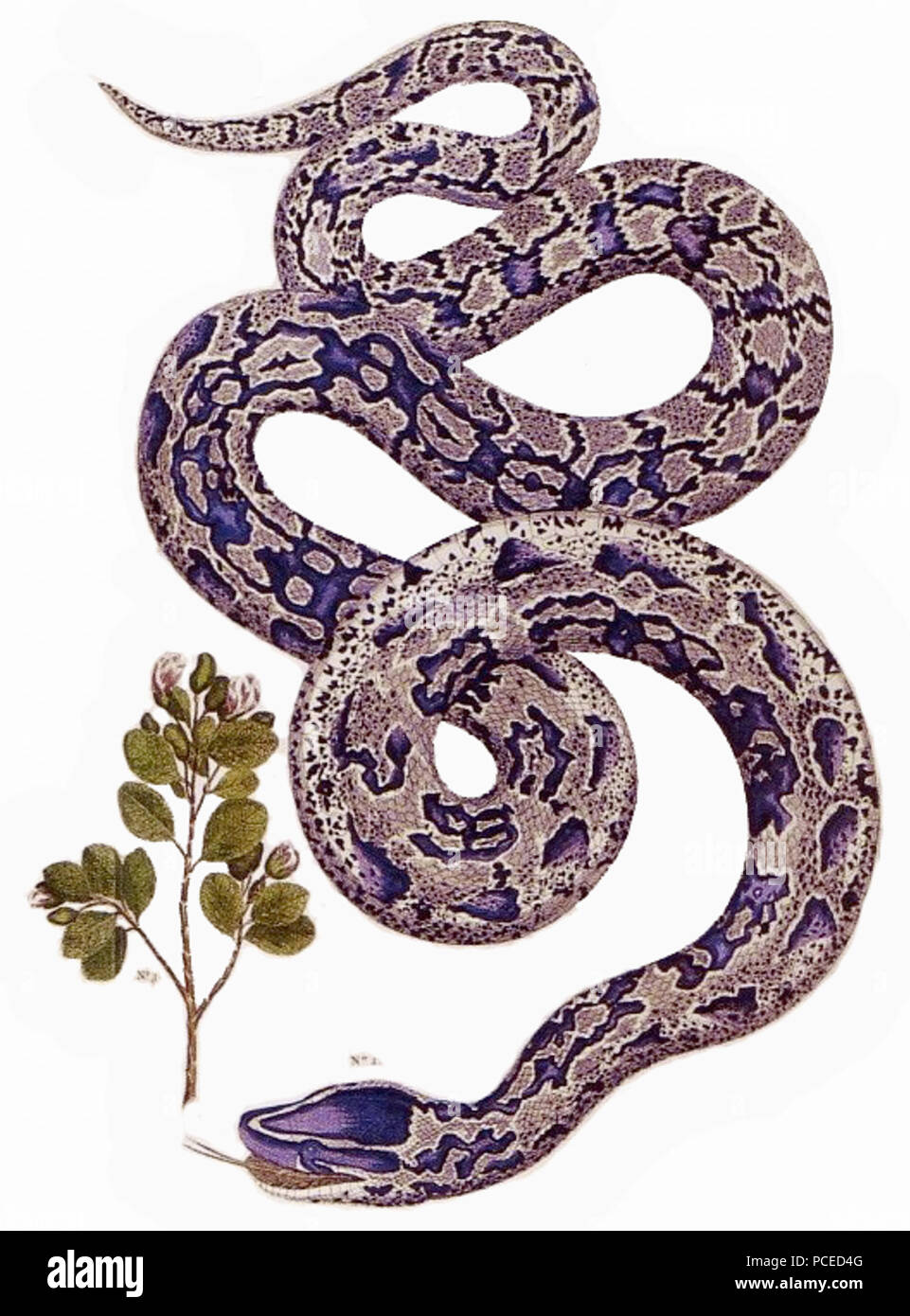Quick filters:
Python species Stock Photos and Images
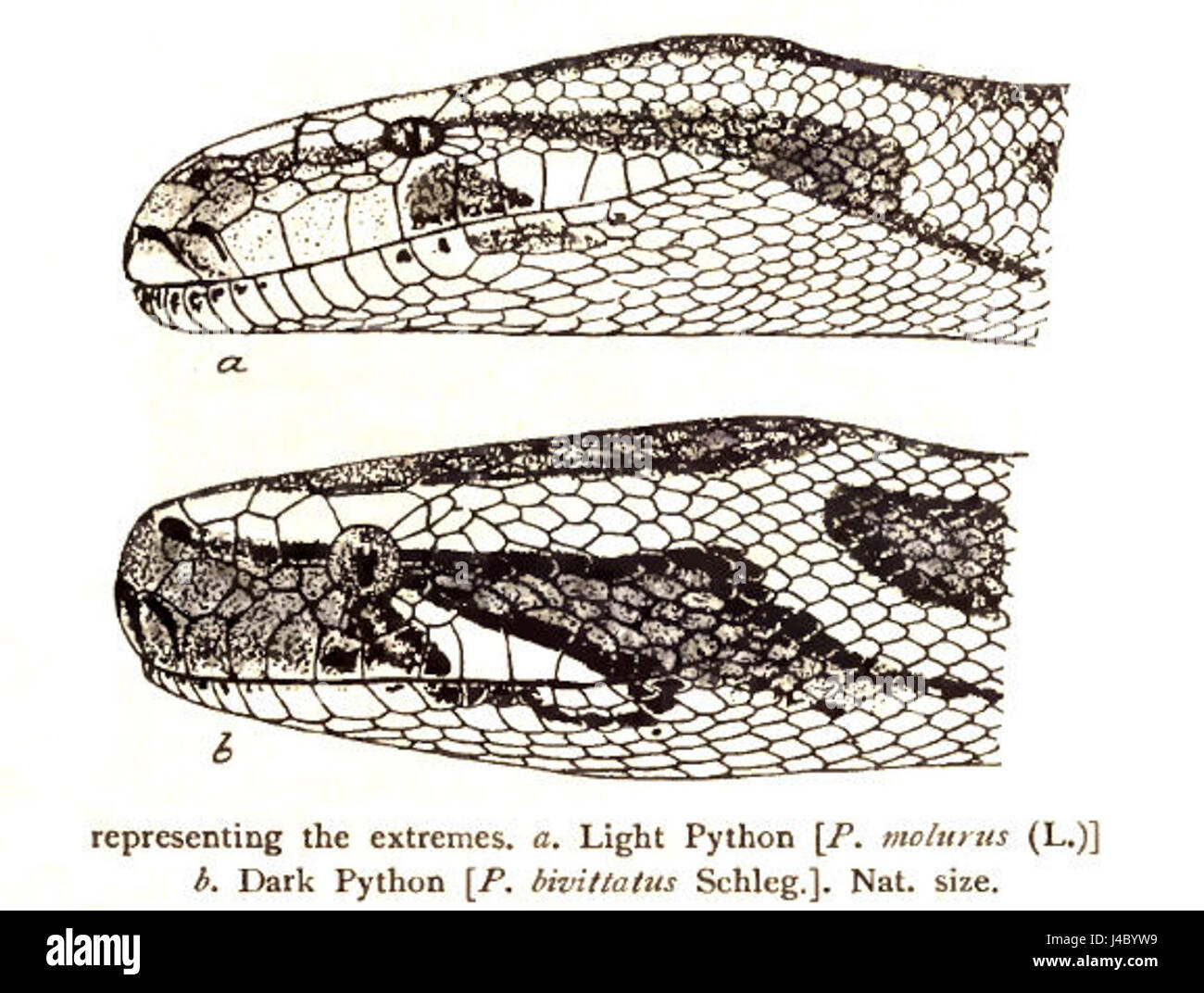 'PythonsRooij' appears to be a reference to a python species or a project named after the python, though more context is needed to clarify its exact reference. Stock Photohttps://www.alamy.com/image-license-details/?v=1https://www.alamy.com/stock-photo-pythonsrooij-appears-to-be-a-reference-to-a-python-species-or-a-project-140404917.html
'PythonsRooij' appears to be a reference to a python species or a project named after the python, though more context is needed to clarify its exact reference. Stock Photohttps://www.alamy.com/image-license-details/?v=1https://www.alamy.com/stock-photo-pythonsrooij-appears-to-be-a-reference-to-a-python-species-or-a-project-140404917.htmlRMJ4BYW9–'PythonsRooij' appears to be a reference to a python species or a project named after the python, though more context is needed to clarify its exact reference.
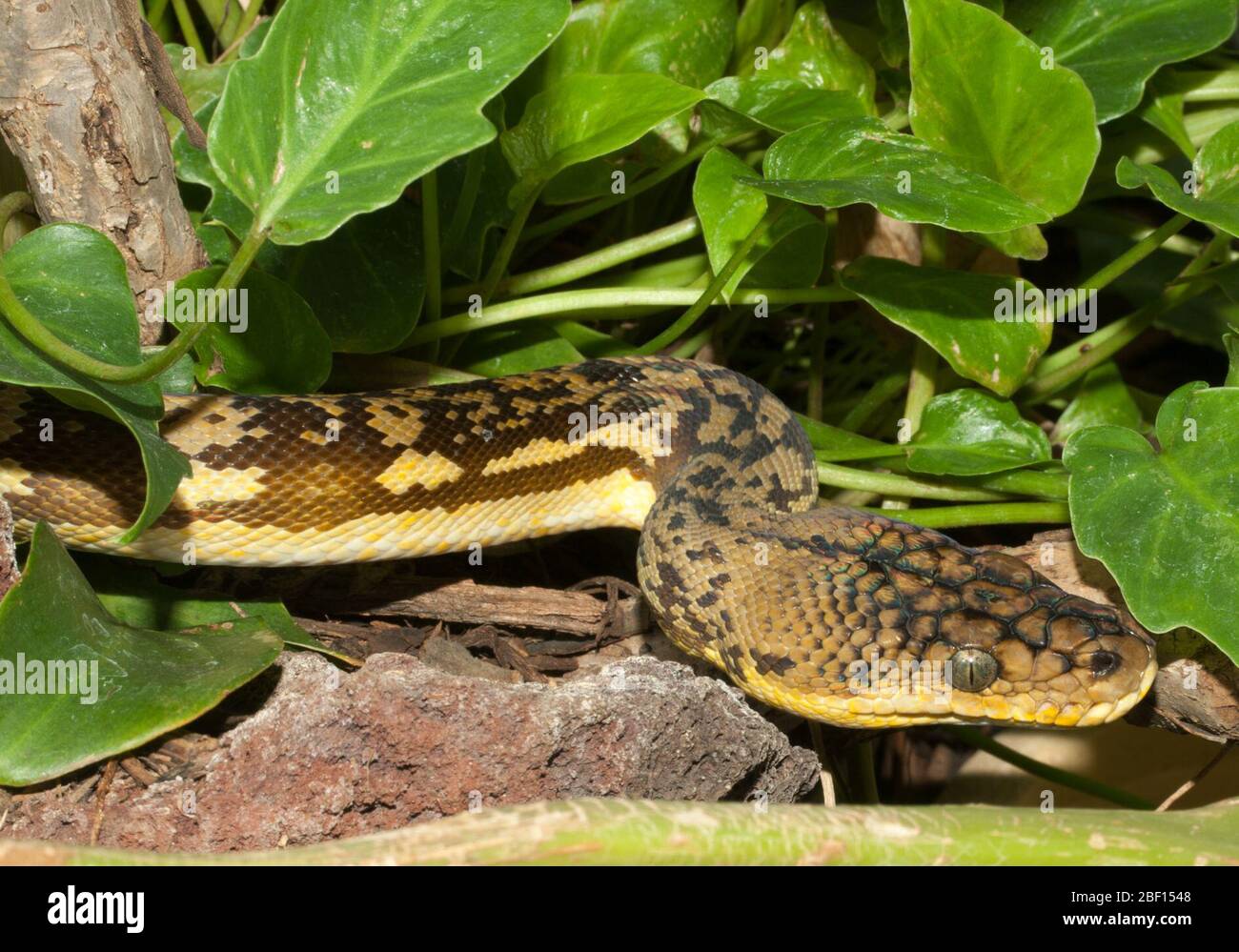 Timor Python. Species: timoriensis,Genus: Python,Family: Pythonidae,Order: Squamata,Class: Reptilia,Phylum: Chordata,Kingdom: Animalia,reptile,snake,Reptile house,horizontal Stock Photohttps://www.alamy.com/image-license-details/?v=1https://www.alamy.com/timor-python-species-timoriensisgenus-pythonfamily-pythonidaeorder-squamataclass-reptiliaphylum-chordatakingdom-animaliareptilesnakereptile-househorizontal-image353453192.html
Timor Python. Species: timoriensis,Genus: Python,Family: Pythonidae,Order: Squamata,Class: Reptilia,Phylum: Chordata,Kingdom: Animalia,reptile,snake,Reptile house,horizontal Stock Photohttps://www.alamy.com/image-license-details/?v=1https://www.alamy.com/timor-python-species-timoriensisgenus-pythonfamily-pythonidaeorder-squamataclass-reptiliaphylum-chordatakingdom-animaliareptilesnakereptile-househorizontal-image353453192.htmlRM2BF1548–Timor Python. Species: timoriensis,Genus: Python,Family: Pythonidae,Order: Squamata,Class: Reptilia,Phylum: Chordata,Kingdom: Animalia,reptile,snake,Reptile house,horizontal
 Python tigris, Print, Python molurus is a large, nonvenomous python species native to tropical and subtropical regions of the Indian subcontinent and Southeast Asia. It is known by the common names Indian python, black-tailed python, Indian rock python, and Asian rock python. It is generally lighter colored than the Burmese python and reaches usually 3 m (9.8 ft)., 1700-1880 Stock Photohttps://www.alamy.com/image-license-details/?v=1https://www.alamy.com/python-tigris-print-python-molurus-is-a-large-nonvenomous-python-species-native-to-tropical-and-subtropical-regions-of-the-indian-subcontinent-and-southeast-asia-it-is-known-by-the-common-names-indian-python-black-tailed-python-indian-rock-python-and-asian-rock-python-it-is-generally-lighter-colored-than-the-burmese-python-and-reaches-usually-3-m-98-ft-1700-1880-image328698885.html
Python tigris, Print, Python molurus is a large, nonvenomous python species native to tropical and subtropical regions of the Indian subcontinent and Southeast Asia. It is known by the common names Indian python, black-tailed python, Indian rock python, and Asian rock python. It is generally lighter colored than the Burmese python and reaches usually 3 m (9.8 ft)., 1700-1880 Stock Photohttps://www.alamy.com/image-license-details/?v=1https://www.alamy.com/python-tigris-print-python-molurus-is-a-large-nonvenomous-python-species-native-to-tropical-and-subtropical-regions-of-the-indian-subcontinent-and-southeast-asia-it-is-known-by-the-common-names-indian-python-black-tailed-python-indian-rock-python-and-asian-rock-python-it-is-generally-lighter-colored-than-the-burmese-python-and-reaches-usually-3-m-98-ft-1700-1880-image328698885.htmlRM2A2NENW–Python tigris, Print, Python molurus is a large, nonvenomous python species native to tropical and subtropical regions of the Indian subcontinent and Southeast Asia. It is known by the common names Indian python, black-tailed python, Indian rock python, and Asian rock python. It is generally lighter colored than the Burmese python and reaches usually 3 m (9.8 ft)., 1700-1880
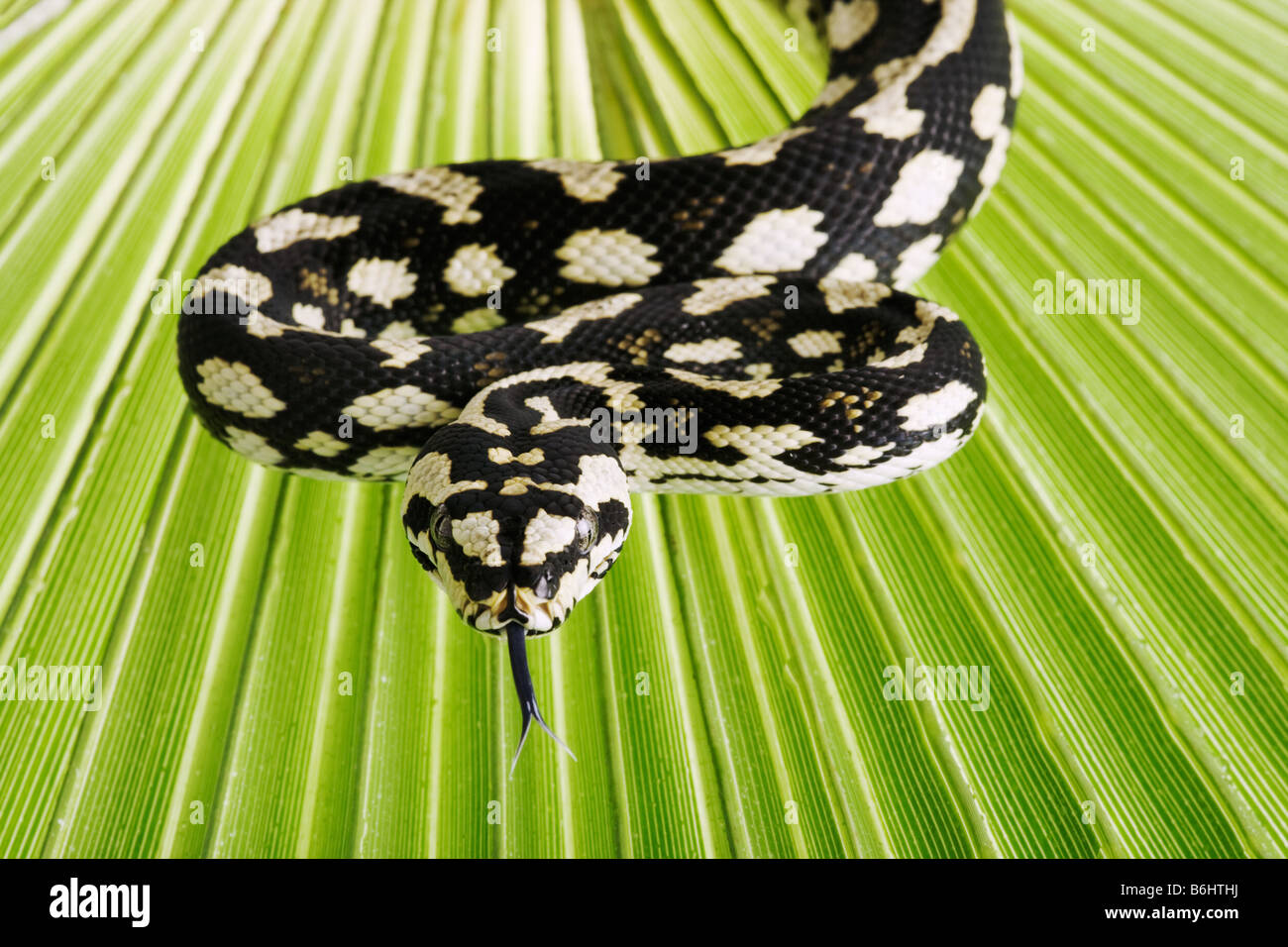 Jungle Carpet Pythons Morelia spilota cheynei Non venomous python species found in rainforests areas Australia Stock Photohttps://www.alamy.com/image-license-details/?v=1https://www.alamy.com/stock-photo-jungle-carpet-pythons-morelia-spilota-cheynei-non-venomous-python-21290798.html
Jungle Carpet Pythons Morelia spilota cheynei Non venomous python species found in rainforests areas Australia Stock Photohttps://www.alamy.com/image-license-details/?v=1https://www.alamy.com/stock-photo-jungle-carpet-pythons-morelia-spilota-cheynei-non-venomous-python-21290798.htmlRMB6HTHJ–Jungle Carpet Pythons Morelia spilota cheynei Non venomous python species found in rainforests areas Australia
RMP29Y1W–. Python spec. between 1700 and 1880 274 Python spec. - 1700-1880 - Print - Iconographia Zoologica - Special Collections University of Amsterdam - UBA01 IZ11800236
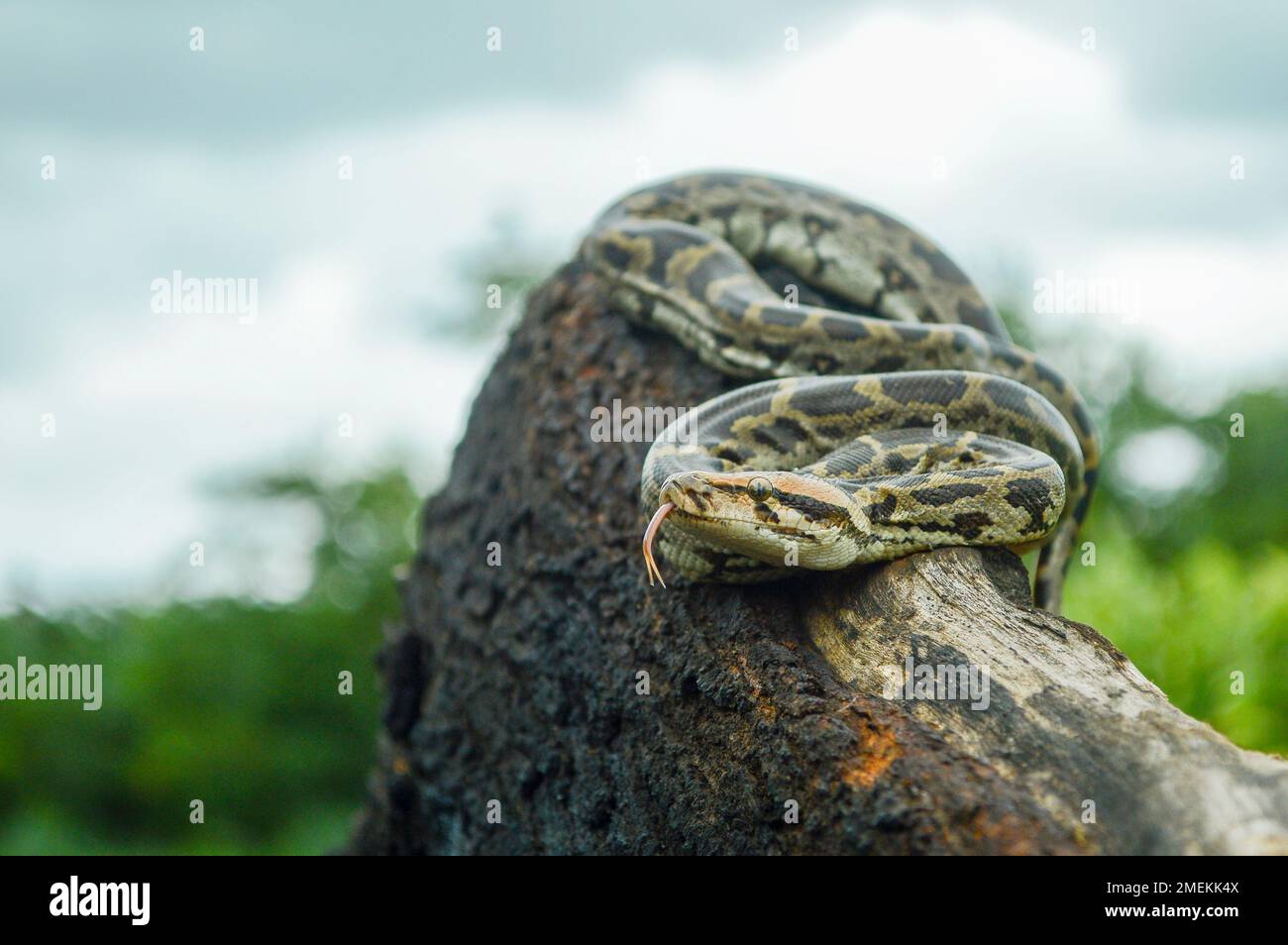 Indian python, Python molurus is a large, nonvenomous python species native to tropical and subtropical regions of the Indian subcontinent, Mumbai, Ma Stock Photohttps://www.alamy.com/image-license-details/?v=1https://www.alamy.com/indian-python-python-molurus-is-a-large-nonvenomous-python-species-native-to-tropical-and-subtropical-regions-of-the-indian-subcontinent-mumbai-ma-image508137978.html
Indian python, Python molurus is a large, nonvenomous python species native to tropical and subtropical regions of the Indian subcontinent, Mumbai, Ma Stock Photohttps://www.alamy.com/image-license-details/?v=1https://www.alamy.com/indian-python-python-molurus-is-a-large-nonvenomous-python-species-native-to-tropical-and-subtropical-regions-of-the-indian-subcontinent-mumbai-ma-image508137978.htmlRF2MEKK4X–Indian python, Python molurus is a large, nonvenomous python species native to tropical and subtropical regions of the Indian subcontinent, Mumbai, Ma
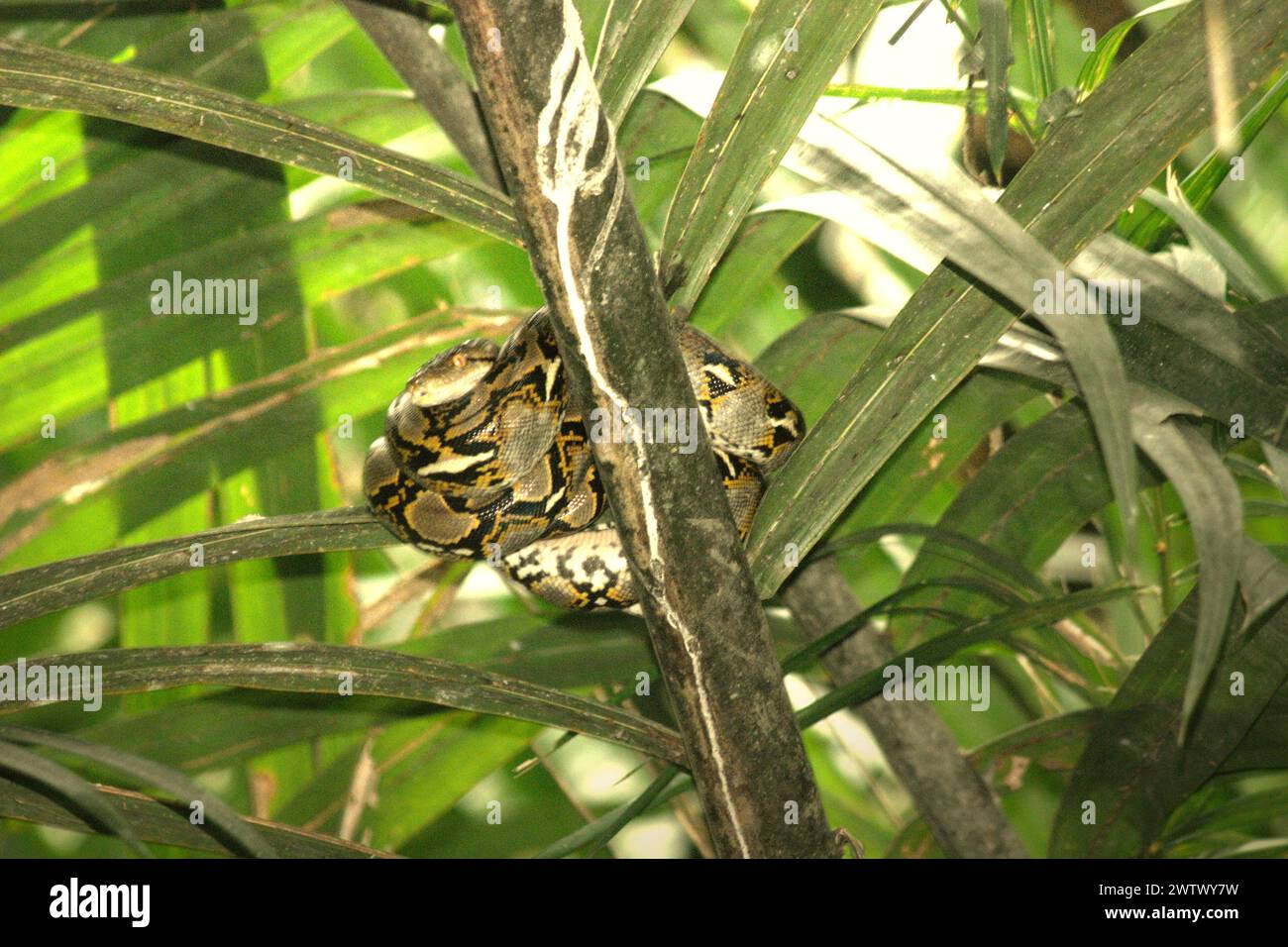 A python, which is most likely a Burmese python (Python bivittatus) is resting on a nipa palm on the side of Cigenter river in Handeuleum Island, a part of Ujung Kulon National Park in Pandeglang, Banten, Indonesia. The International Union for Conservation of Nature (IUCN) concludes that rising temperatures have led to—among others—ecological, behavioral, and physiological changes in wildlife species and biodiversity. 'In addition to increased rates of disease and degraded habitats, climate change is also causing changes in species themselves, which threaten their survival,' they wrote. Stock Photohttps://www.alamy.com/image-license-details/?v=1https://www.alamy.com/a-python-which-is-most-likely-a-burmese-python-python-bivittatus-is-resting-on-a-nipa-palm-on-the-side-of-cigenter-river-in-handeuleum-island-a-part-of-ujung-kulon-national-park-in-pandeglang-banten-indonesia-the-international-union-for-conservation-of-nature-iucn-concludes-that-rising-temperatures-have-led-toamong-othersecological-behavioral-and-physiological-changes-in-wildlife-species-and-biodiversity-in-addition-to-increased-rates-of-disease-and-degraded-habitats-climate-change-is-also-causing-changes-in-species-themselves-which-threaten-their-survival-they-wrote-image600474445.html
A python, which is most likely a Burmese python (Python bivittatus) is resting on a nipa palm on the side of Cigenter river in Handeuleum Island, a part of Ujung Kulon National Park in Pandeglang, Banten, Indonesia. The International Union for Conservation of Nature (IUCN) concludes that rising temperatures have led to—among others—ecological, behavioral, and physiological changes in wildlife species and biodiversity. 'In addition to increased rates of disease and degraded habitats, climate change is also causing changes in species themselves, which threaten their survival,' they wrote. Stock Photohttps://www.alamy.com/image-license-details/?v=1https://www.alamy.com/a-python-which-is-most-likely-a-burmese-python-python-bivittatus-is-resting-on-a-nipa-palm-on-the-side-of-cigenter-river-in-handeuleum-island-a-part-of-ujung-kulon-national-park-in-pandeglang-banten-indonesia-the-international-union-for-conservation-of-nature-iucn-concludes-that-rising-temperatures-have-led-toamong-othersecological-behavioral-and-physiological-changes-in-wildlife-species-and-biodiversity-in-addition-to-increased-rates-of-disease-and-degraded-habitats-climate-change-is-also-causing-changes-in-species-themselves-which-threaten-their-survival-they-wrote-image600474445.htmlRM2WTWY7W–A python, which is most likely a Burmese python (Python bivittatus) is resting on a nipa palm on the side of Cigenter river in Handeuleum Island, a part of Ujung Kulon National Park in Pandeglang, Banten, Indonesia. The International Union for Conservation of Nature (IUCN) concludes that rising temperatures have led to—among others—ecological, behavioral, and physiological changes in wildlife species and biodiversity. 'In addition to increased rates of disease and degraded habitats, climate change is also causing changes in species themselves, which threaten their survival,' they wrote.
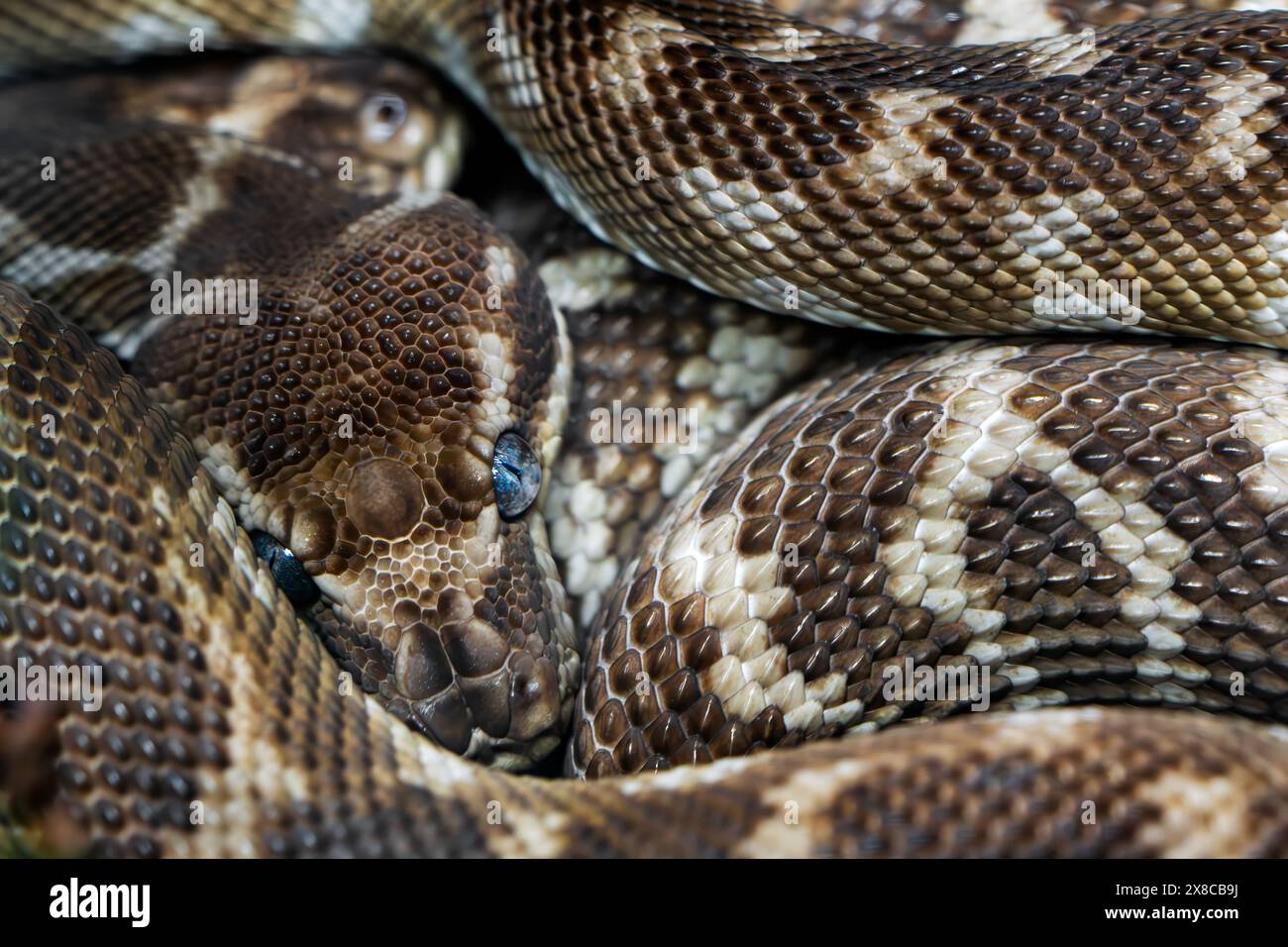 Rough-scaled Python - Morelia carinata, beautiful large-scaled python species from jungles and river banks, endemic to Australia. Stock Photohttps://www.alamy.com/image-license-details/?v=1https://www.alamy.com/rough-scaled-python-morelia-carinata-beautiful-large-scaled-python-species-from-jungles-and-river-banks-endemic-to-australia-image607552446.html
Rough-scaled Python - Morelia carinata, beautiful large-scaled python species from jungles and river banks, endemic to Australia. Stock Photohttps://www.alamy.com/image-license-details/?v=1https://www.alamy.com/rough-scaled-python-morelia-carinata-beautiful-large-scaled-python-species-from-jungles-and-river-banks-endemic-to-australia-image607552446.htmlRF2X8CB9J–Rough-scaled Python - Morelia carinata, beautiful large-scaled python species from jungles and river banks, endemic to Australia.
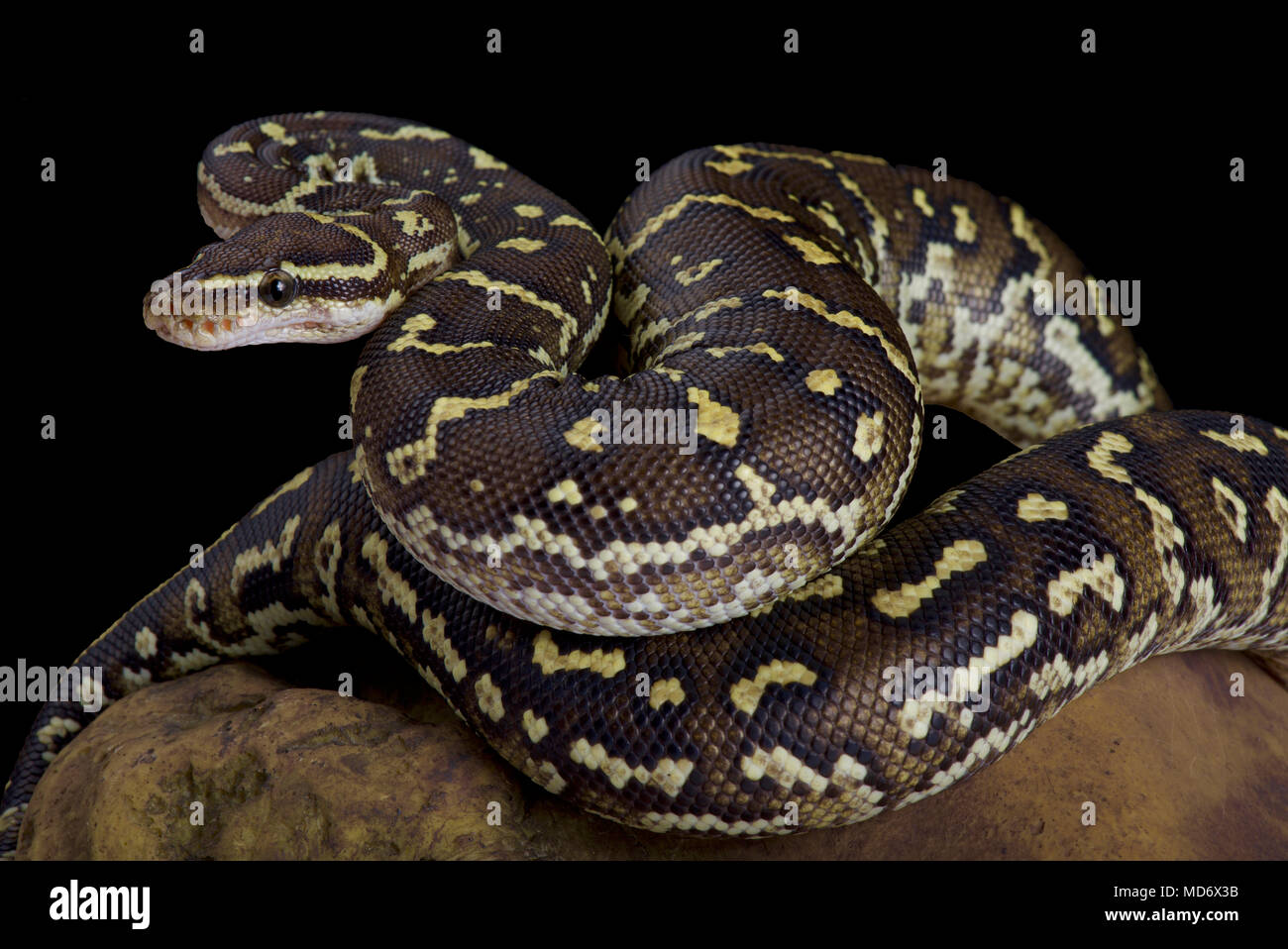 The Angola python, Python anchietae, is a rarely seen python species found in Angola and the extreme north of Namibia. Stock Photohttps://www.alamy.com/image-license-details/?v=1https://www.alamy.com/the-angola-python-python-anchietae-is-a-rarely-seen-python-species-found-in-angola-and-the-extreme-north-of-namibia-image180246399.html
The Angola python, Python anchietae, is a rarely seen python species found in Angola and the extreme north of Namibia. Stock Photohttps://www.alamy.com/image-license-details/?v=1https://www.alamy.com/the-angola-python-python-anchietae-is-a-rarely-seen-python-species-found-in-angola-and-the-extreme-north-of-namibia-image180246399.htmlRFMD6X3B–The Angola python, Python anchietae, is a rarely seen python species found in Angola and the extreme north of Namibia.
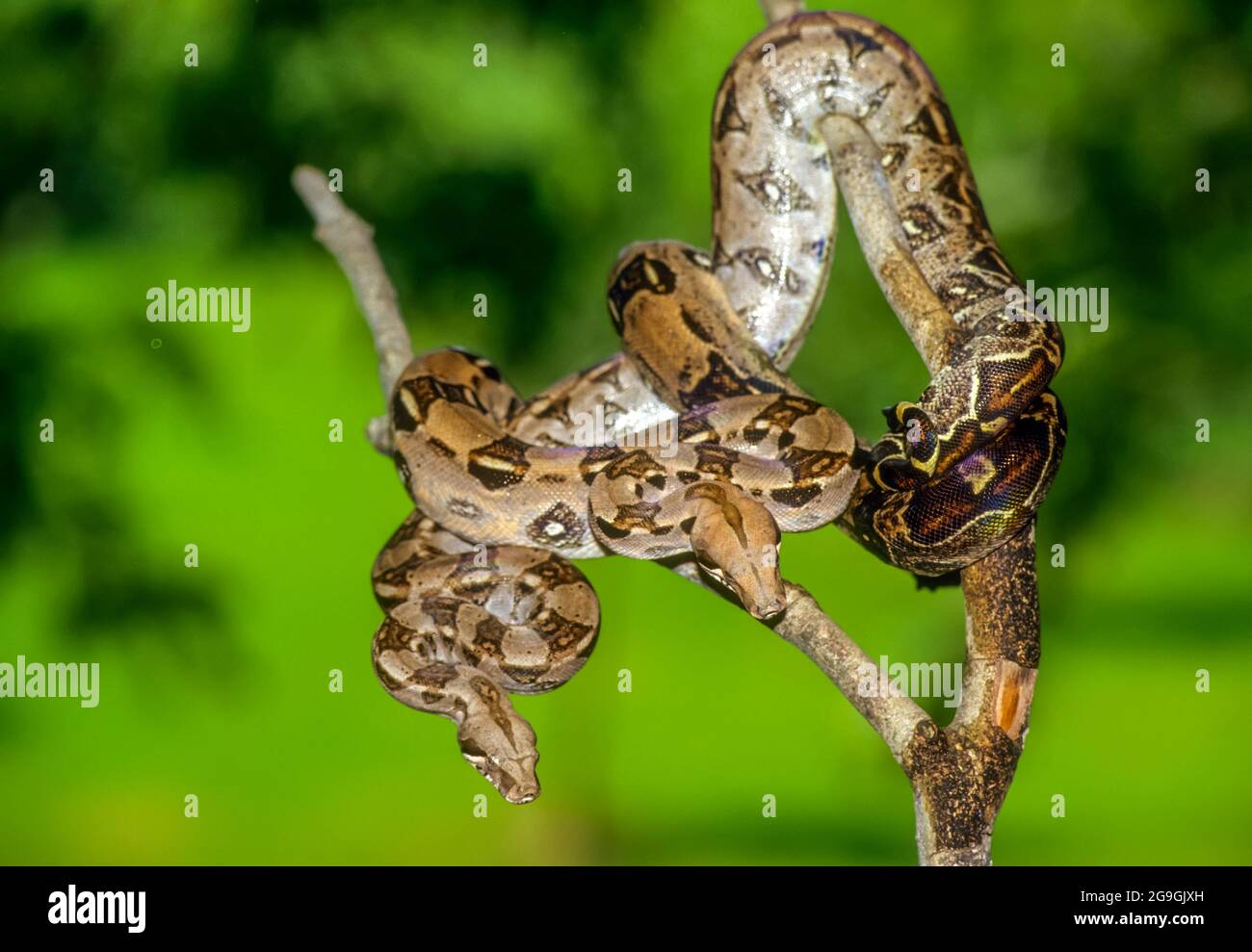 The reticulated python (Malayopython reticulatus) is a python species native to South and Southeast Asia. It is the world's longest snake, and listed Stock Photohttps://www.alamy.com/image-license-details/?v=1https://www.alamy.com/the-reticulated-python-malayopython-reticulatus-is-a-python-species-native-to-south-and-southeast-asia-it-is-the-worlds-longest-snake-and-listed-image436157193.html
The reticulated python (Malayopython reticulatus) is a python species native to South and Southeast Asia. It is the world's longest snake, and listed Stock Photohttps://www.alamy.com/image-license-details/?v=1https://www.alamy.com/the-reticulated-python-malayopython-reticulatus-is-a-python-species-native-to-south-and-southeast-asia-it-is-the-worlds-longest-snake-and-listed-image436157193.htmlRF2G9GJXH–The reticulated python (Malayopython reticulatus) is a python species native to South and Southeast Asia. It is the world's longest snake, and listed
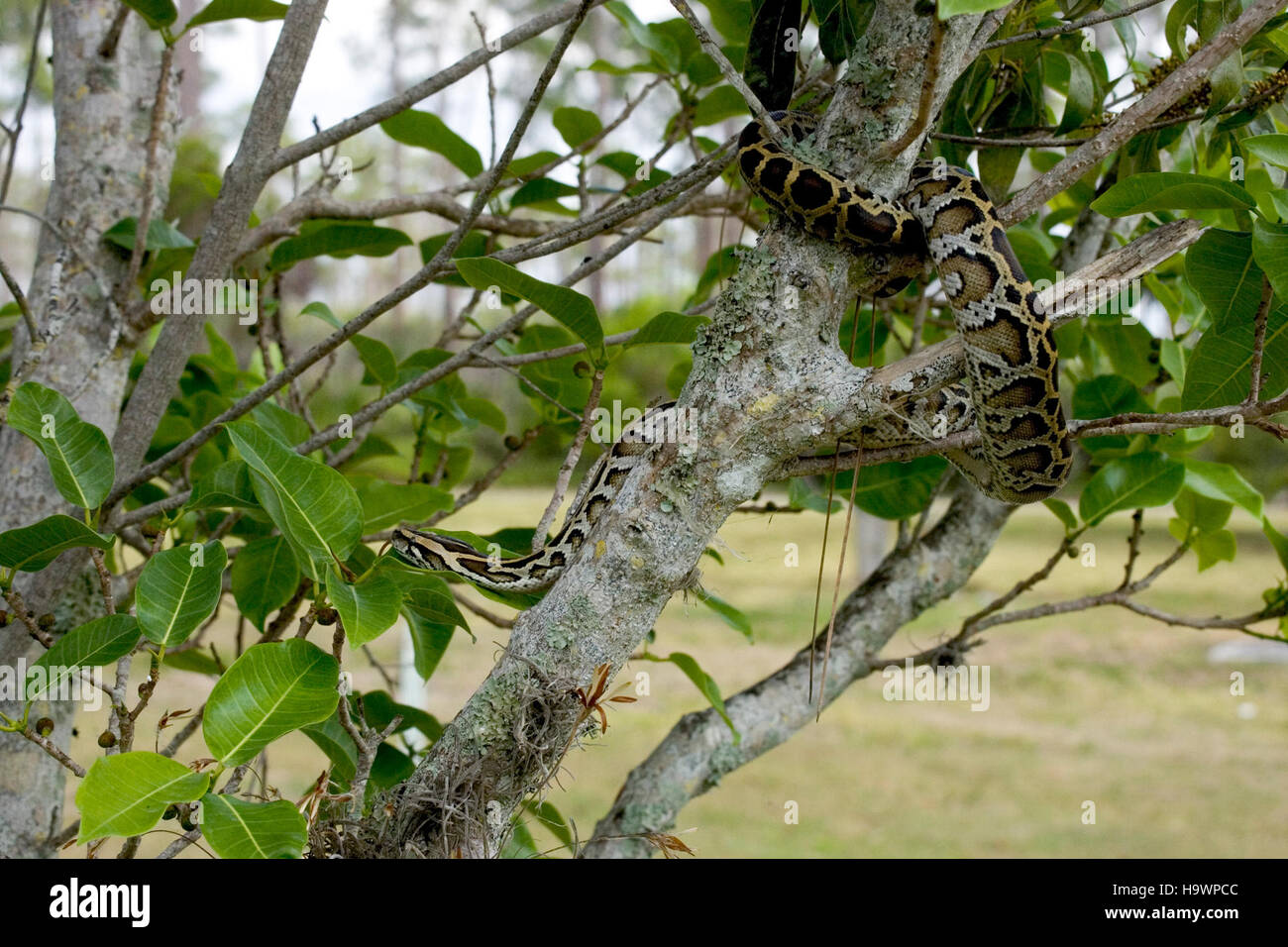 A Burmese python is captured in the Everglades National Park, highlighting the ongoing efforts to manage invasive species and protect native wildlife and ecosystems. Stock Photohttps://www.alamy.com/image-license-details/?v=1https://www.alamy.com/stock-photo-a-burmese-python-is-captured-in-the-everglades-national-park-highlighting-126570876.html
A Burmese python is captured in the Everglades National Park, highlighting the ongoing efforts to manage invasive species and protect native wildlife and ecosystems. Stock Photohttps://www.alamy.com/image-license-details/?v=1https://www.alamy.com/stock-photo-a-burmese-python-is-captured-in-the-everglades-national-park-highlighting-126570876.htmlRMH9WPCC–A Burmese python is captured in the Everglades National Park, highlighting the ongoing efforts to manage invasive species and protect native wildlife and ecosystems.
 A veteran snake charmer performing for tourists in Singapore in 1972 holds his pet Burmese python above his head while playing a homemade flute that appears to mesmerize the reptile. Although this large snake is tame and has been trained not be aggressive, it is a constrictor that is capable of wrapping its long body around its human handler and squeezing him to death. The python species is said to be deaf and responds to the snake charmer's movements with the flute instead of the music it makes. Historical photograph. Stock Photohttps://www.alamy.com/image-license-details/?v=1https://www.alamy.com/a-veteran-snake-charmer-performing-for-tourists-in-singapore-in-1972-holds-his-pet-burmese-python-above-his-head-while-playing-a-homemade-flute-that-appears-to-mesmerize-the-reptile-although-this-large-snake-is-tame-and-has-been-trained-not-be-aggressive-it-is-a-constrictor-that-is-capable-of-wrapping-its-long-body-around-its-human-handler-and-squeezing-him-to-death-the-python-species-is-said-to-be-deaf-and-responds-to-the-snake-charmers-movements-with-the-flute-instead-of-the-music-it-makes-historical-photograph-image209769722.html
A veteran snake charmer performing for tourists in Singapore in 1972 holds his pet Burmese python above his head while playing a homemade flute that appears to mesmerize the reptile. Although this large snake is tame and has been trained not be aggressive, it is a constrictor that is capable of wrapping its long body around its human handler and squeezing him to death. The python species is said to be deaf and responds to the snake charmer's movements with the flute instead of the music it makes. Historical photograph. Stock Photohttps://www.alamy.com/image-license-details/?v=1https://www.alamy.com/a-veteran-snake-charmer-performing-for-tourists-in-singapore-in-1972-holds-his-pet-burmese-python-above-his-head-while-playing-a-homemade-flute-that-appears-to-mesmerize-the-reptile-although-this-large-snake-is-tame-and-has-been-trained-not-be-aggressive-it-is-a-constrictor-that-is-capable-of-wrapping-its-long-body-around-its-human-handler-and-squeezing-him-to-death-the-python-species-is-said-to-be-deaf-and-responds-to-the-snake-charmers-movements-with-the-flute-instead-of-the-music-it-makes-historical-photograph-image209769722.htmlRFP57RBP–A veteran snake charmer performing for tourists in Singapore in 1972 holds his pet Burmese python above his head while playing a homemade flute that appears to mesmerize the reptile. Although this large snake is tame and has been trained not be aggressive, it is a constrictor that is capable of wrapping its long body around its human handler and squeezing him to death. The python species is said to be deaf and responds to the snake charmer's movements with the flute instead of the music it makes. Historical photograph.
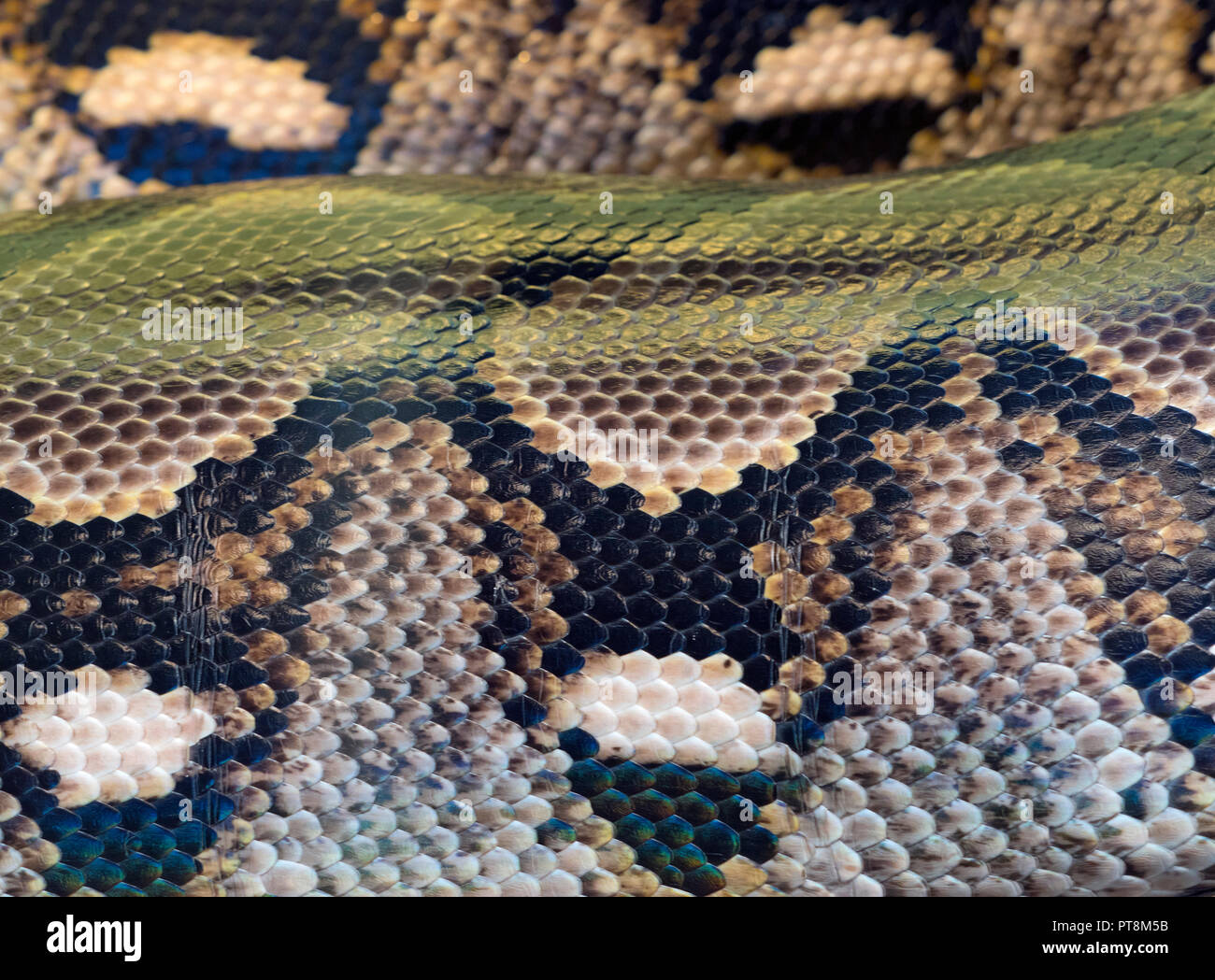 Skin pattern of Reticulated python Python reticulatus Captive photograph Stock Photohttps://www.alamy.com/image-license-details/?v=1https://www.alamy.com/skin-pattern-of-reticulated-python-python-reticulatus-captive-photograph-image221467607.html
Skin pattern of Reticulated python Python reticulatus Captive photograph Stock Photohttps://www.alamy.com/image-license-details/?v=1https://www.alamy.com/skin-pattern-of-reticulated-python-python-reticulatus-captive-photograph-image221467607.htmlRMPT8M5B–Skin pattern of Reticulated python Python reticulatus Captive photograph
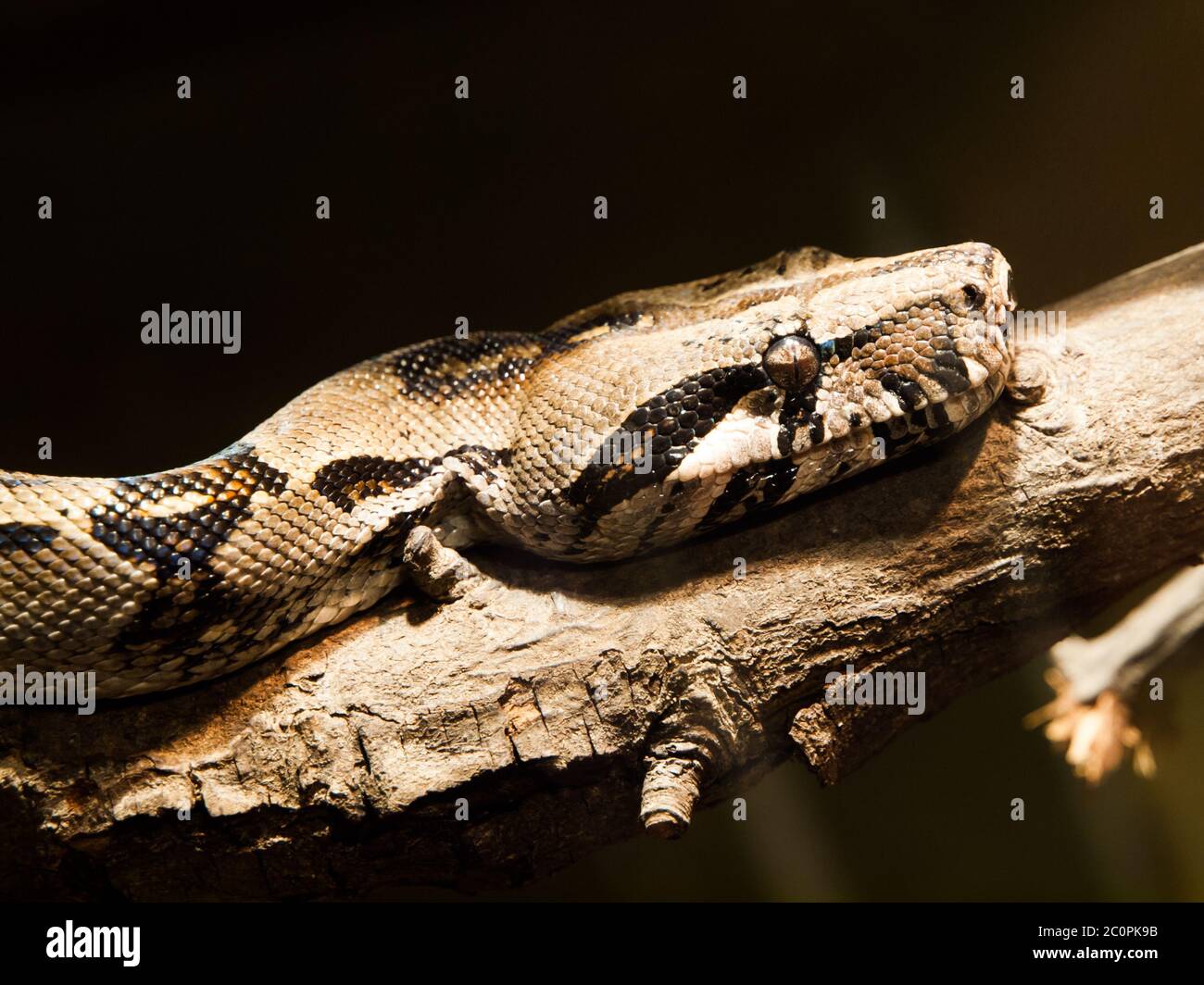 Head of indian python (black-tailed) - large nonvenomous python species (Python molurus) Stock Photohttps://www.alamy.com/image-license-details/?v=1https://www.alamy.com/head-of-indian-python-black-tailed-large-nonvenomous-python-species-python-molurus-image361915831.html
Head of indian python (black-tailed) - large nonvenomous python species (Python molurus) Stock Photohttps://www.alamy.com/image-license-details/?v=1https://www.alamy.com/head-of-indian-python-black-tailed-large-nonvenomous-python-species-python-molurus-image361915831.htmlRF2C0PK9B–Head of indian python (black-tailed) - large nonvenomous python species (Python molurus)
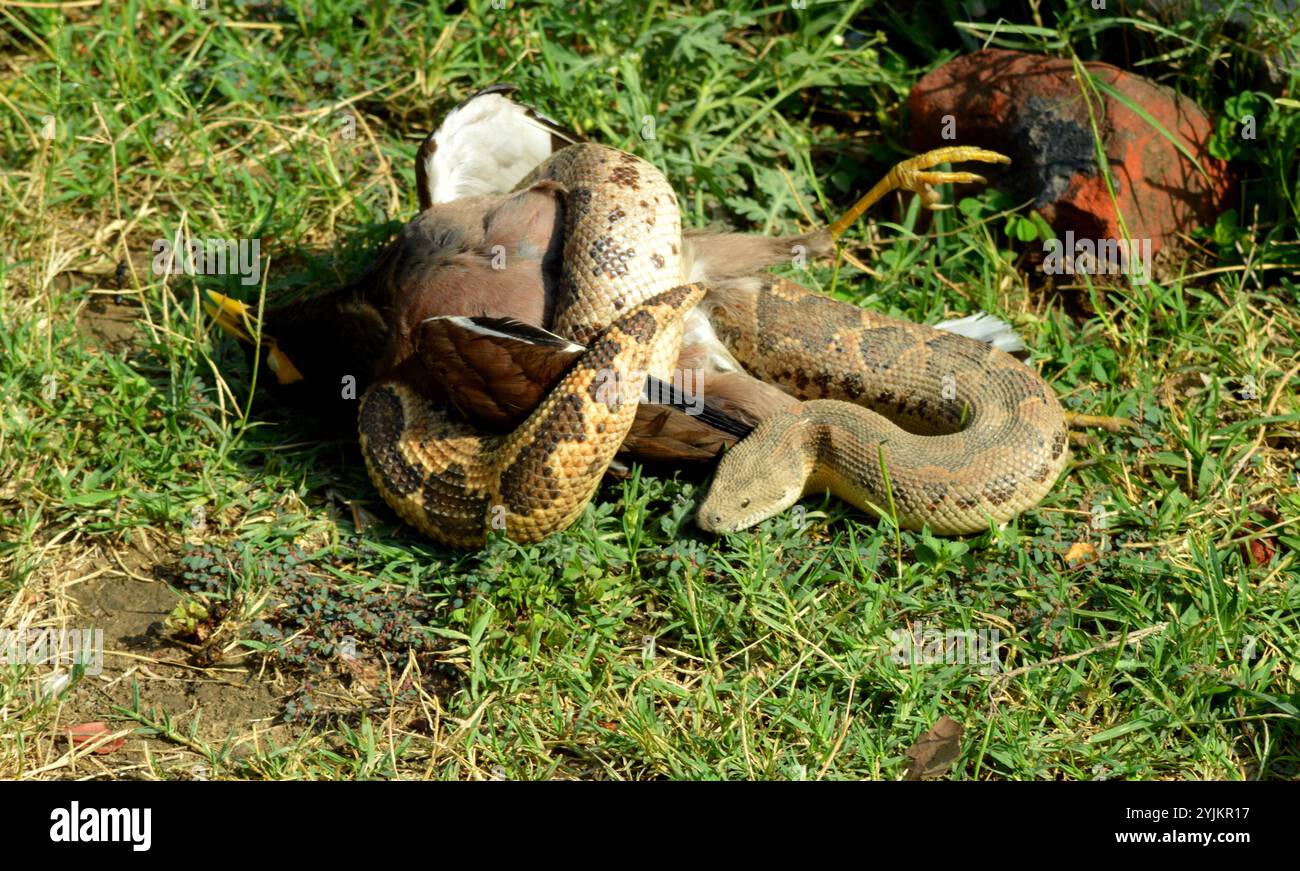 Young python with a kill, Jim corbett national park, Wildlife Bhopal, India Stock Photohttps://www.alamy.com/image-license-details/?v=1https://www.alamy.com/young-python-with-a-kill-jim-corbett-national-park-wildlife-bhopal-india-image631072211.html
Young python with a kill, Jim corbett national park, Wildlife Bhopal, India Stock Photohttps://www.alamy.com/image-license-details/?v=1https://www.alamy.com/young-python-with-a-kill-jim-corbett-national-park-wildlife-bhopal-india-image631072211.htmlRM2YJKR17–Young python with a kill, Jim corbett national park, Wildlife Bhopal, India
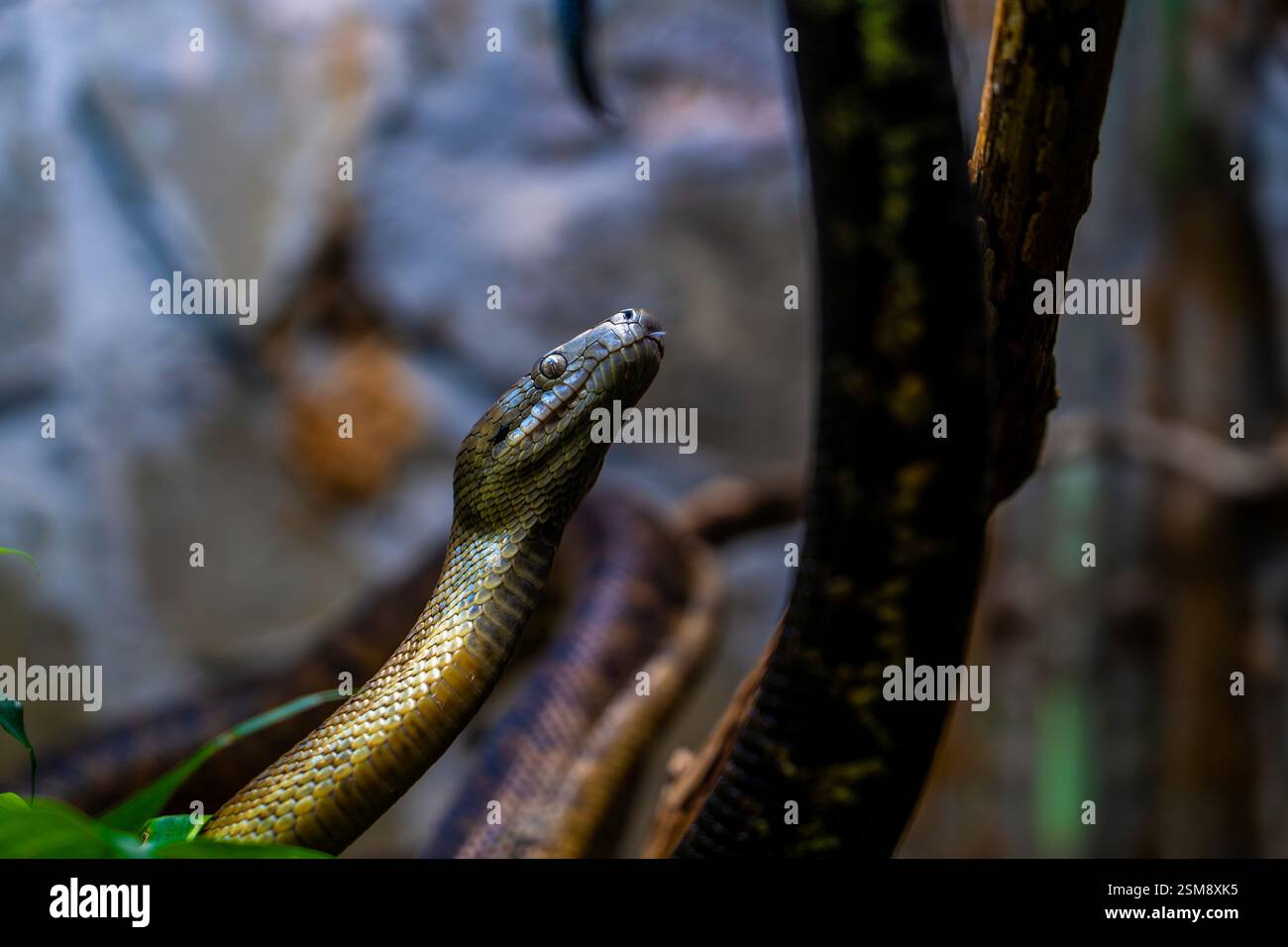 Captivating Close-Up of a Carpet Python (Morelia spilota) Amid Naturalistic Habitat and Textured Background Stock Photohttps://www.alamy.com/image-license-details/?v=1https://www.alamy.com/captivating-close-up-of-a-carpet-python-morelia-spilota-amid-naturalistic-habitat-and-textured-background-image649273273.html
Captivating Close-Up of a Carpet Python (Morelia spilota) Amid Naturalistic Habitat and Textured Background Stock Photohttps://www.alamy.com/image-license-details/?v=1https://www.alamy.com/captivating-close-up-of-a-carpet-python-morelia-spilota-amid-naturalistic-habitat-and-textured-background-image649273273.htmlRF2SM8XK5–Captivating Close-Up of a Carpet Python (Morelia spilota) Amid Naturalistic Habitat and Textured Background
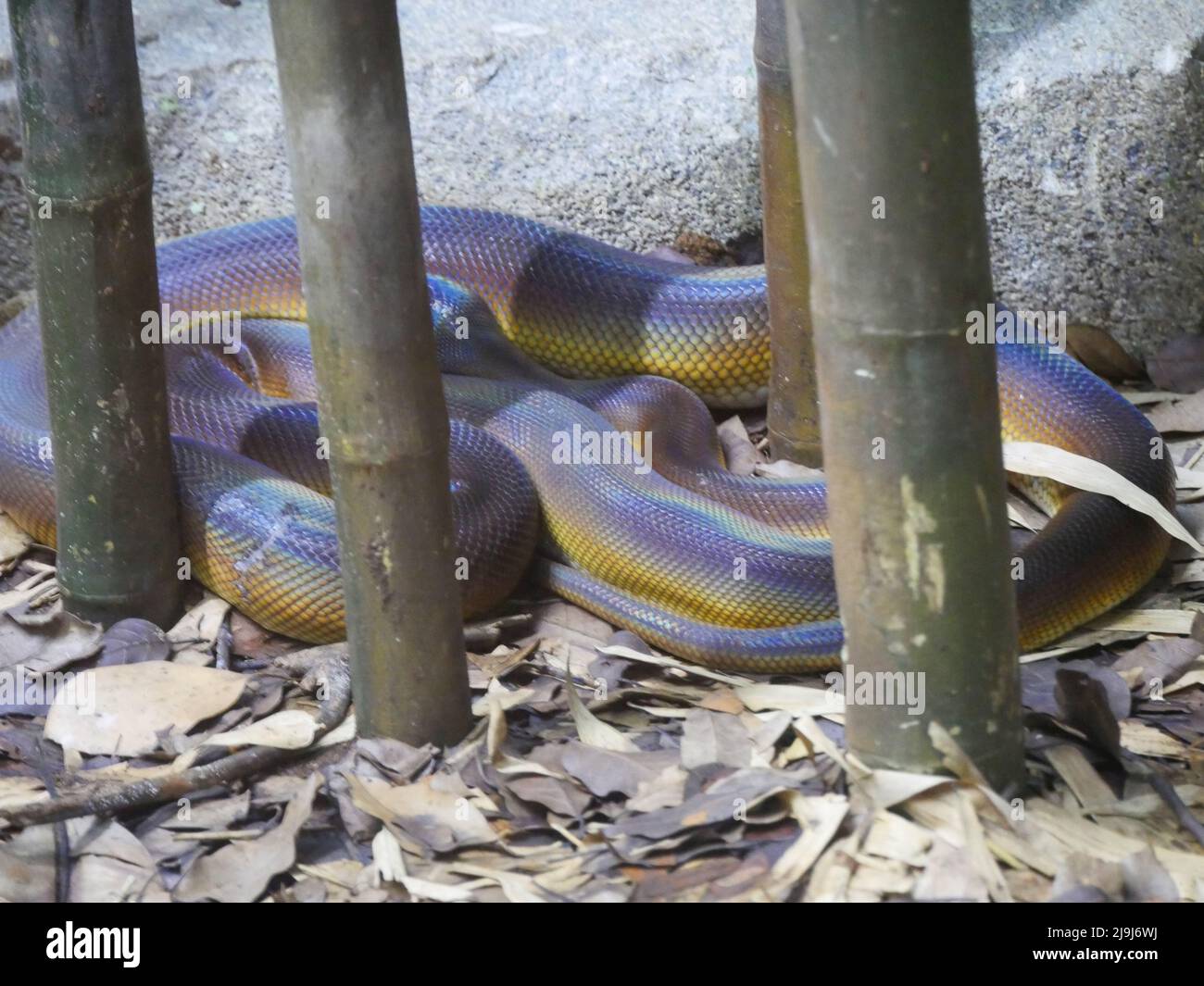 motley golden child reticulated python : The reticulated python (Malayopython reticulatus) is a python species native to South and Southeast Asia. Stock Photohttps://www.alamy.com/image-license-details/?v=1https://www.alamy.com/motley-golden-child-reticulated-python-the-reticulated-python-malayopython-reticulatus-is-a-python-species-native-to-south-and-southeast-asia-image470612398.html
motley golden child reticulated python : The reticulated python (Malayopython reticulatus) is a python species native to South and Southeast Asia. Stock Photohttps://www.alamy.com/image-license-details/?v=1https://www.alamy.com/motley-golden-child-reticulated-python-the-reticulated-python-malayopython-reticulatus-is-a-python-species-native-to-south-and-southeast-asia-image470612398.htmlRF2J9J6WJ–motley golden child reticulated python : The reticulated python (Malayopython reticulatus) is a python species native to South and Southeast Asia.
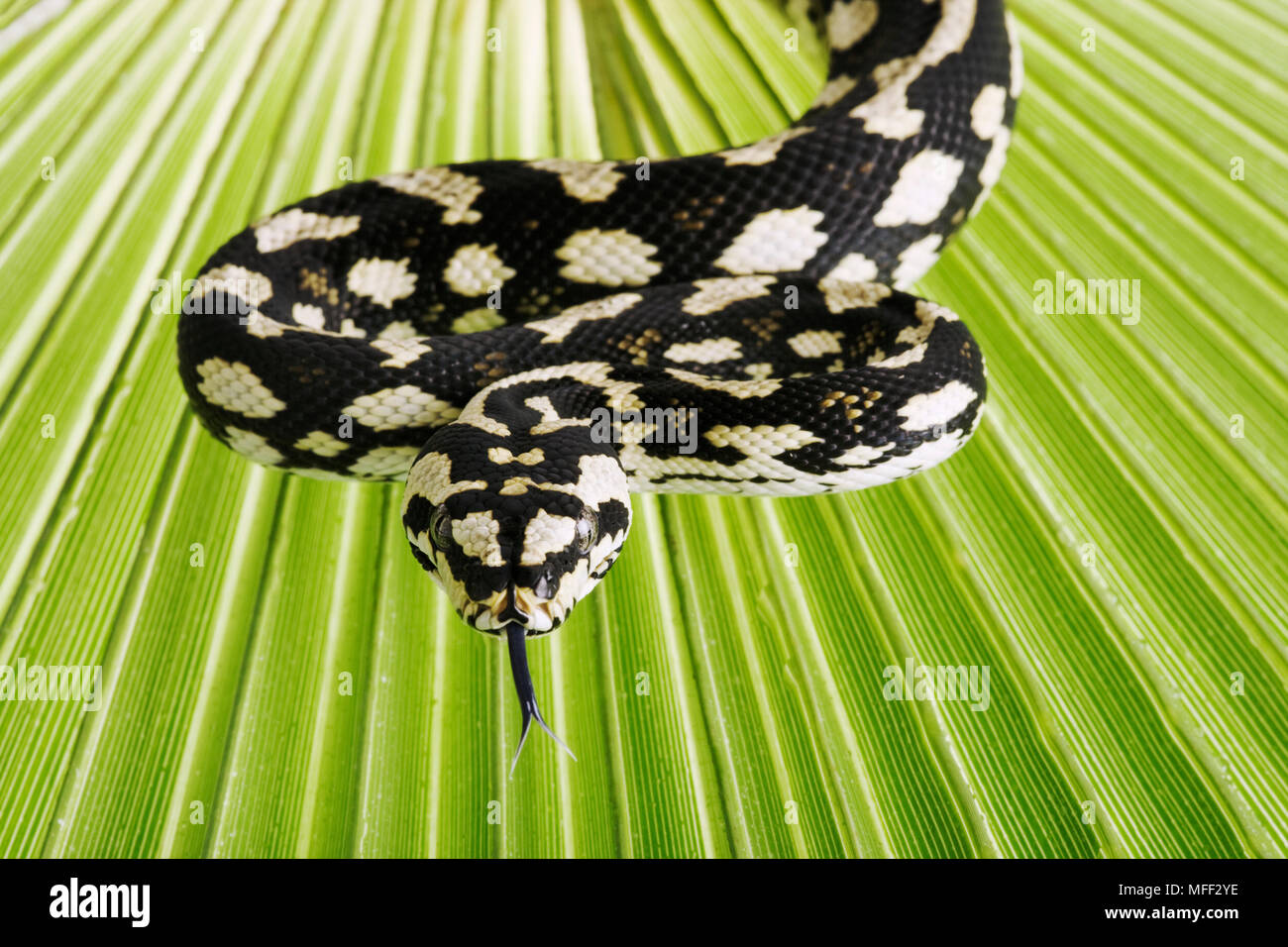 Jungle Carpet Python (Morelia spilota cheynei) Non-venomous python species found in rainforests areas. Dist. Atherton Tableland, northeastern Australi Stock Photohttps://www.alamy.com/image-license-details/?v=1https://www.alamy.com/jungle-carpet-python-morelia-spilota-cheynei-non-venomous-python-species-found-in-rainforests-areas-dist-atherton-tableland-northeastern-australi-image181655138.html
Jungle Carpet Python (Morelia spilota cheynei) Non-venomous python species found in rainforests areas. Dist. Atherton Tableland, northeastern Australi Stock Photohttps://www.alamy.com/image-license-details/?v=1https://www.alamy.com/jungle-carpet-python-morelia-spilota-cheynei-non-venomous-python-species-found-in-rainforests-areas-dist-atherton-tableland-northeastern-australi-image181655138.htmlRMMFF2YE–Jungle Carpet Python (Morelia spilota cheynei) Non-venomous python species found in rainforests areas. Dist. Atherton Tableland, northeastern Australi
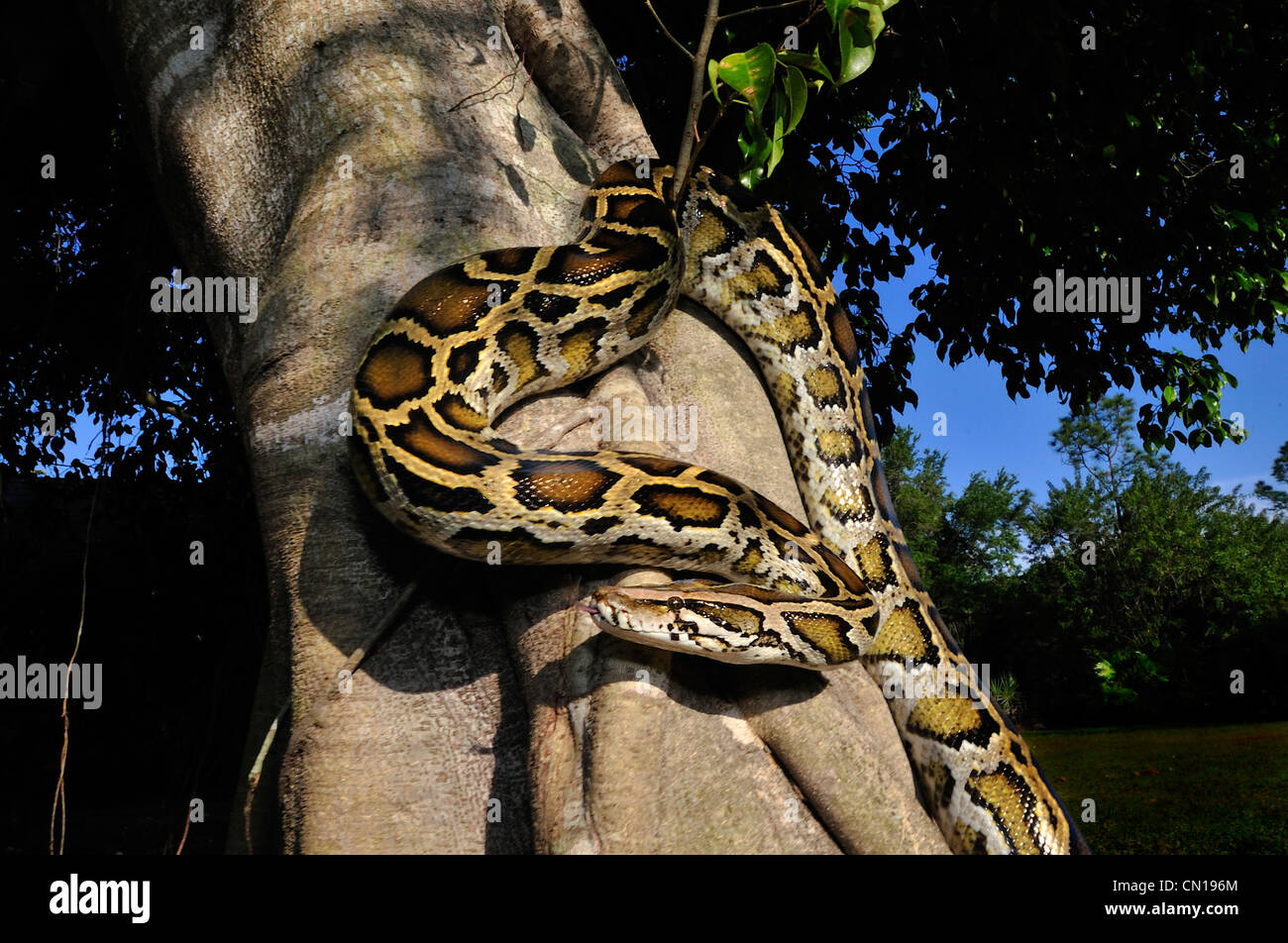 Burmese python, Python molurus bivittatus, Florida Stock Photohttps://www.alamy.com/image-license-details/?v=1https://www.alamy.com/stock-photo-burmese-python-python-molurus-bivittatus-florida-47357708.html
Burmese python, Python molurus bivittatus, Florida Stock Photohttps://www.alamy.com/image-license-details/?v=1https://www.alamy.com/stock-photo-burmese-python-python-molurus-bivittatus-florida-47357708.htmlRMCN196M–Burmese python, Python molurus bivittatus, Florida
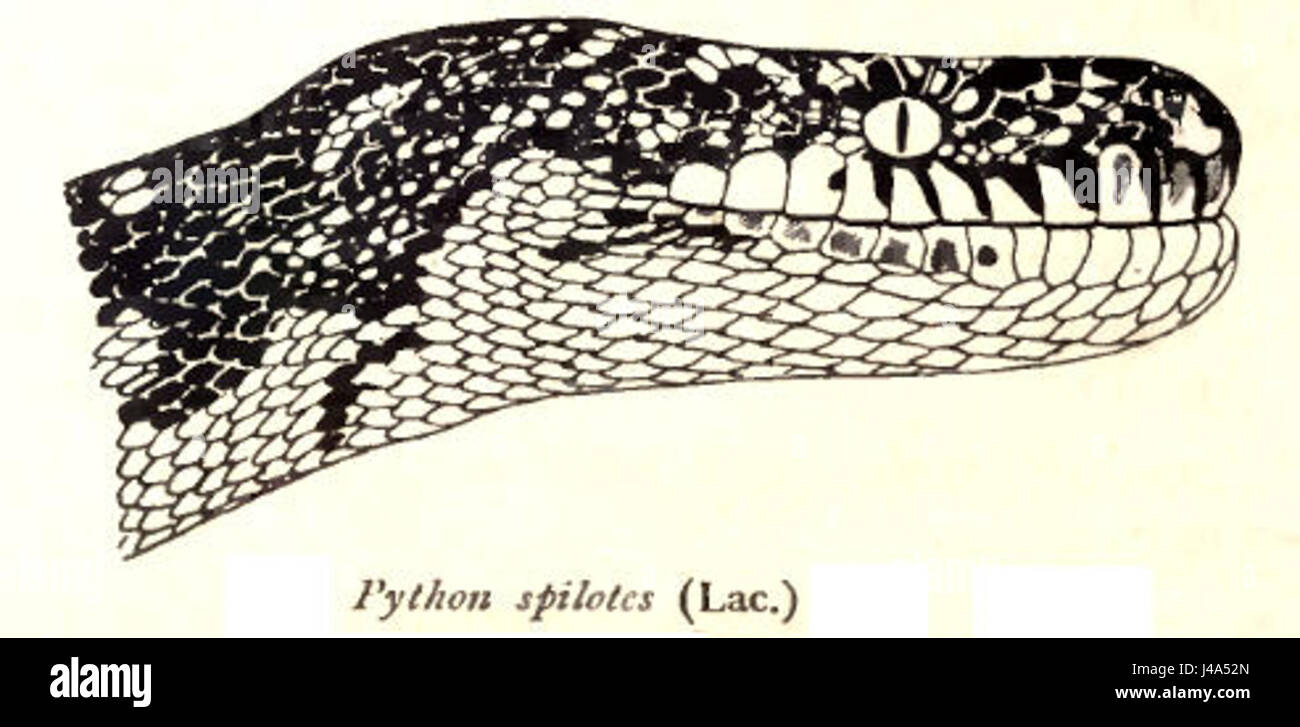 Python Spilotes Rooij refers to a species of large snake found in South America, specifically noted for its striking coloration and unique characteristics among pythons. Stock Photohttps://www.alamy.com/image-license-details/?v=1https://www.alamy.com/stock-photo-python-spilotes-rooij-refers-to-a-species-of-large-snake-found-in-140365085.html
Python Spilotes Rooij refers to a species of large snake found in South America, specifically noted for its striking coloration and unique characteristics among pythons. Stock Photohttps://www.alamy.com/image-license-details/?v=1https://www.alamy.com/stock-photo-python-spilotes-rooij-refers-to-a-species-of-large-snake-found-in-140365085.htmlRMJ4A52N–Python Spilotes Rooij refers to a species of large snake found in South America, specifically noted for its striking coloration and unique characteristics among pythons.
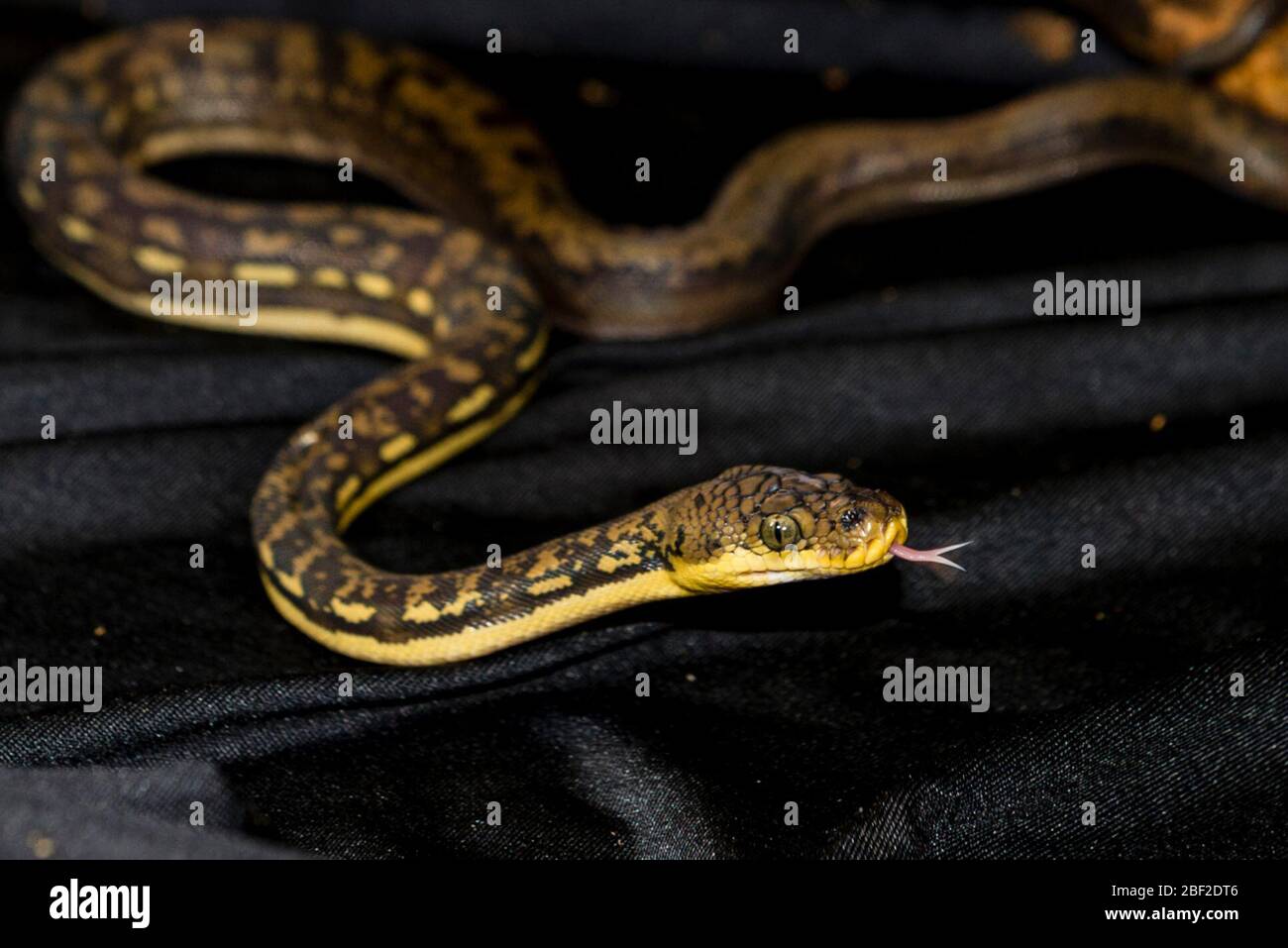 Timor Python. Species: timoriensis,Genus: Python,Family: Pythonidae,Order: Squamata,Class: Reptilia,Phylum: Chordata,Kingdom: Animalia,Reptile,snake,Reptile house Stock Photohttps://www.alamy.com/image-license-details/?v=1https://www.alamy.com/timor-python-species-timoriensisgenus-pythonfamily-pythonidaeorder-squamataclass-reptiliaphylum-chordatakingdom-animaliareptilesnakereptile-house-image353481974.html
Timor Python. Species: timoriensis,Genus: Python,Family: Pythonidae,Order: Squamata,Class: Reptilia,Phylum: Chordata,Kingdom: Animalia,Reptile,snake,Reptile house Stock Photohttps://www.alamy.com/image-license-details/?v=1https://www.alamy.com/timor-python-species-timoriensisgenus-pythonfamily-pythonidaeorder-squamataclass-reptiliaphylum-chordatakingdom-animaliareptilesnakereptile-house-image353481974.htmlRM2BF2DT6–Timor Python. Species: timoriensis,Genus: Python,Family: Pythonidae,Order: Squamata,Class: Reptilia,Phylum: Chordata,Kingdom: Animalia,Reptile,snake,Reptile house
 Python curtus, Print, Python curtus, commonly known as Sumatran short-tailed python, is a species of the family Pythonidae, a nonvenomous snake native to Sumatra., 1700-1880 Stock Photohttps://www.alamy.com/image-license-details/?v=1https://www.alamy.com/python-curtus-print-python-curtus-commonly-known-as-sumatran-short-tailed-python-is-a-species-of-the-family-pythonidae-a-nonvenomous-snake-native-to-sumatra-1700-1880-image328698882.html
Python curtus, Print, Python curtus, commonly known as Sumatran short-tailed python, is a species of the family Pythonidae, a nonvenomous snake native to Sumatra., 1700-1880 Stock Photohttps://www.alamy.com/image-license-details/?v=1https://www.alamy.com/python-curtus-print-python-curtus-commonly-known-as-sumatran-short-tailed-python-is-a-species-of-the-family-pythonidae-a-nonvenomous-snake-native-to-sumatra-1700-1880-image328698882.htmlRM2A2NENP–Python curtus, Print, Python curtus, commonly known as Sumatran short-tailed python, is a species of the family Pythonidae, a nonvenomous snake native to Sumatra., 1700-1880
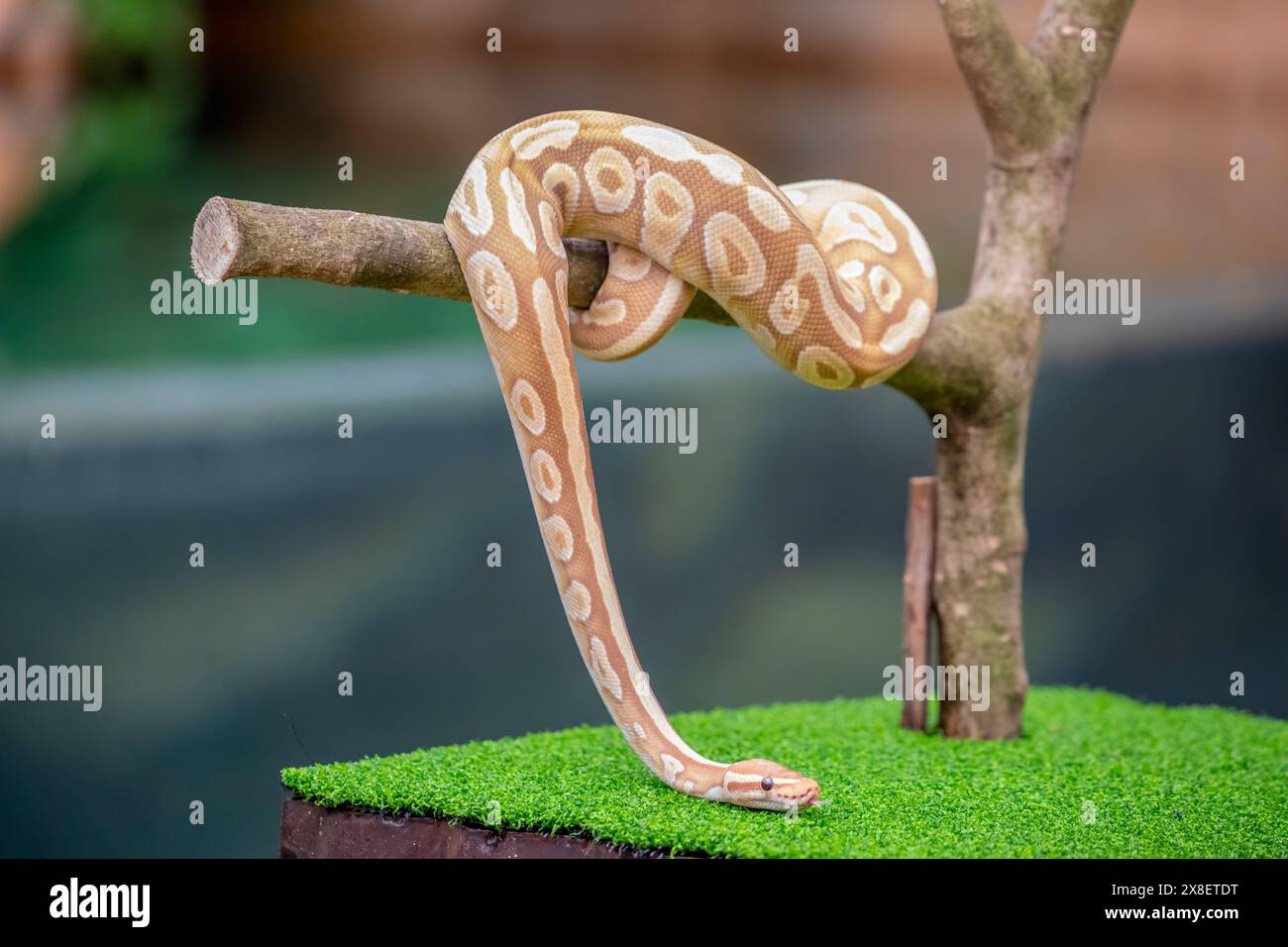 the closeup image of a Banana Pastave Ball Python (Python regius). It is a python species native to West and Central Africa, Stock Photohttps://www.alamy.com/image-license-details/?v=1https://www.alamy.com/the-closeup-image-of-a-banana-pastave-ball-python-python-regius-it-is-a-python-species-native-to-west-and-central-africa-image607606660.html
the closeup image of a Banana Pastave Ball Python (Python regius). It is a python species native to West and Central Africa, Stock Photohttps://www.alamy.com/image-license-details/?v=1https://www.alamy.com/the-closeup-image-of-a-banana-pastave-ball-python-python-regius-it-is-a-python-species-native-to-west-and-central-africa-image607606660.htmlRF2X8ETDT–the closeup image of a Banana Pastave Ball Python (Python regius). It is a python species native to West and Central Africa,
RMP29Y0K–. Python bivittatus . between 1700 and 1880 274 Python bivittatus - 1700-1880 - Print - Iconographia Zoologica - Special Collections University of Amsterdam - UBA01 IZ11800219
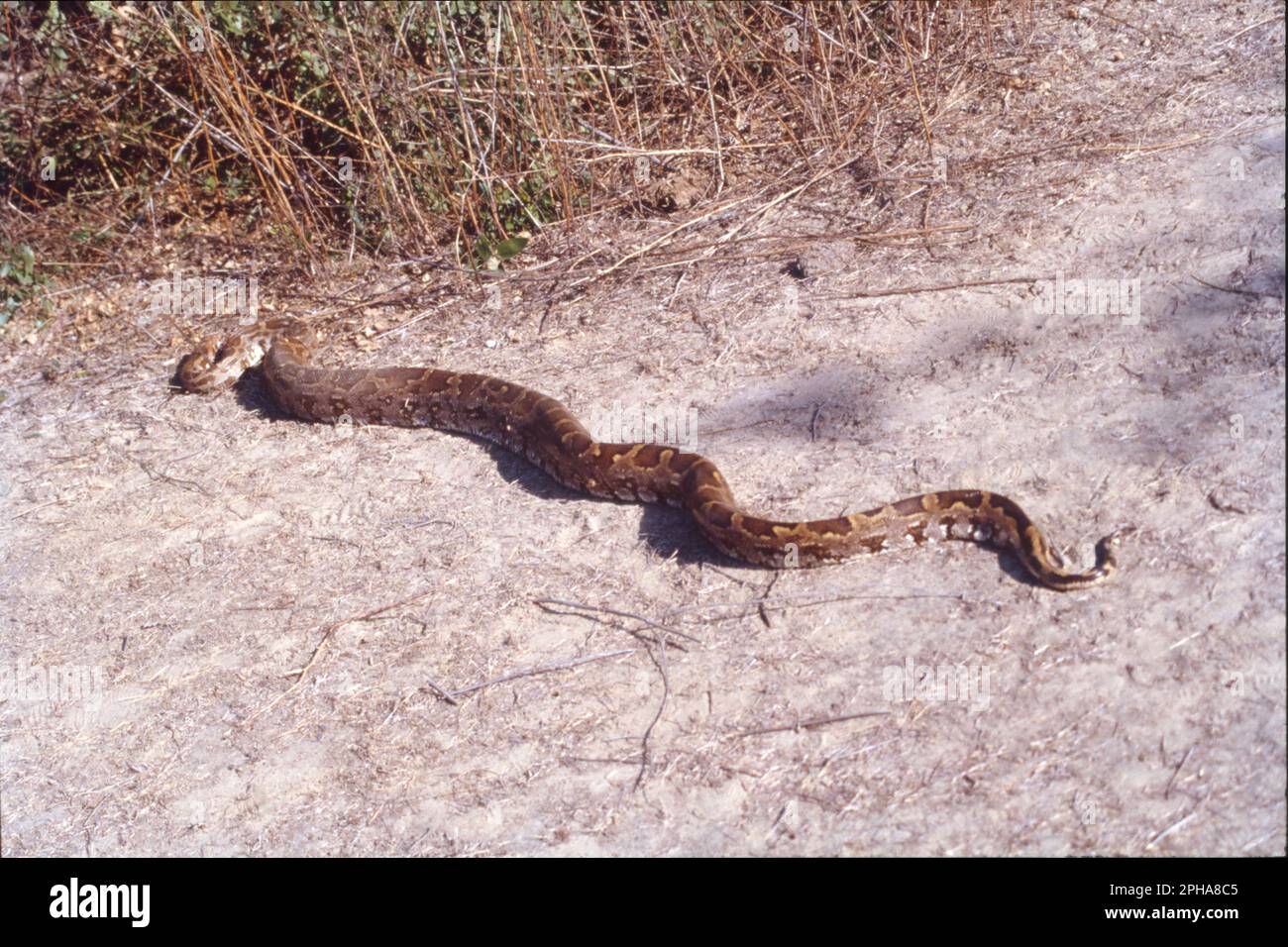 The Indian python is a large python species native to tropical and subtropical regions of the Indian subcontinent and Southeast Asia. It is also known by the common names black-tailed python, Indian rock python, and Asian rock python. Scientific name: Python molurus Stock Photohttps://www.alamy.com/image-license-details/?v=1https://www.alamy.com/the-indian-python-is-a-large-python-species-native-to-tropical-and-subtropical-regions-of-the-indian-subcontinent-and-southeast-asia-it-is-also-known-by-the-common-names-black-tailed-python-indian-rock-python-and-asian-rock-python-scientific-name-python-molurus-image544196693.html
The Indian python is a large python species native to tropical and subtropical regions of the Indian subcontinent and Southeast Asia. It is also known by the common names black-tailed python, Indian rock python, and Asian rock python. Scientific name: Python molurus Stock Photohttps://www.alamy.com/image-license-details/?v=1https://www.alamy.com/the-indian-python-is-a-large-python-species-native-to-tropical-and-subtropical-regions-of-the-indian-subcontinent-and-southeast-asia-it-is-also-known-by-the-common-names-black-tailed-python-indian-rock-python-and-asian-rock-python-scientific-name-python-molurus-image544196693.htmlRF2PHA8C5–The Indian python is a large python species native to tropical and subtropical regions of the Indian subcontinent and Southeast Asia. It is also known by the common names black-tailed python, Indian rock python, and Asian rock python. Scientific name: Python molurus
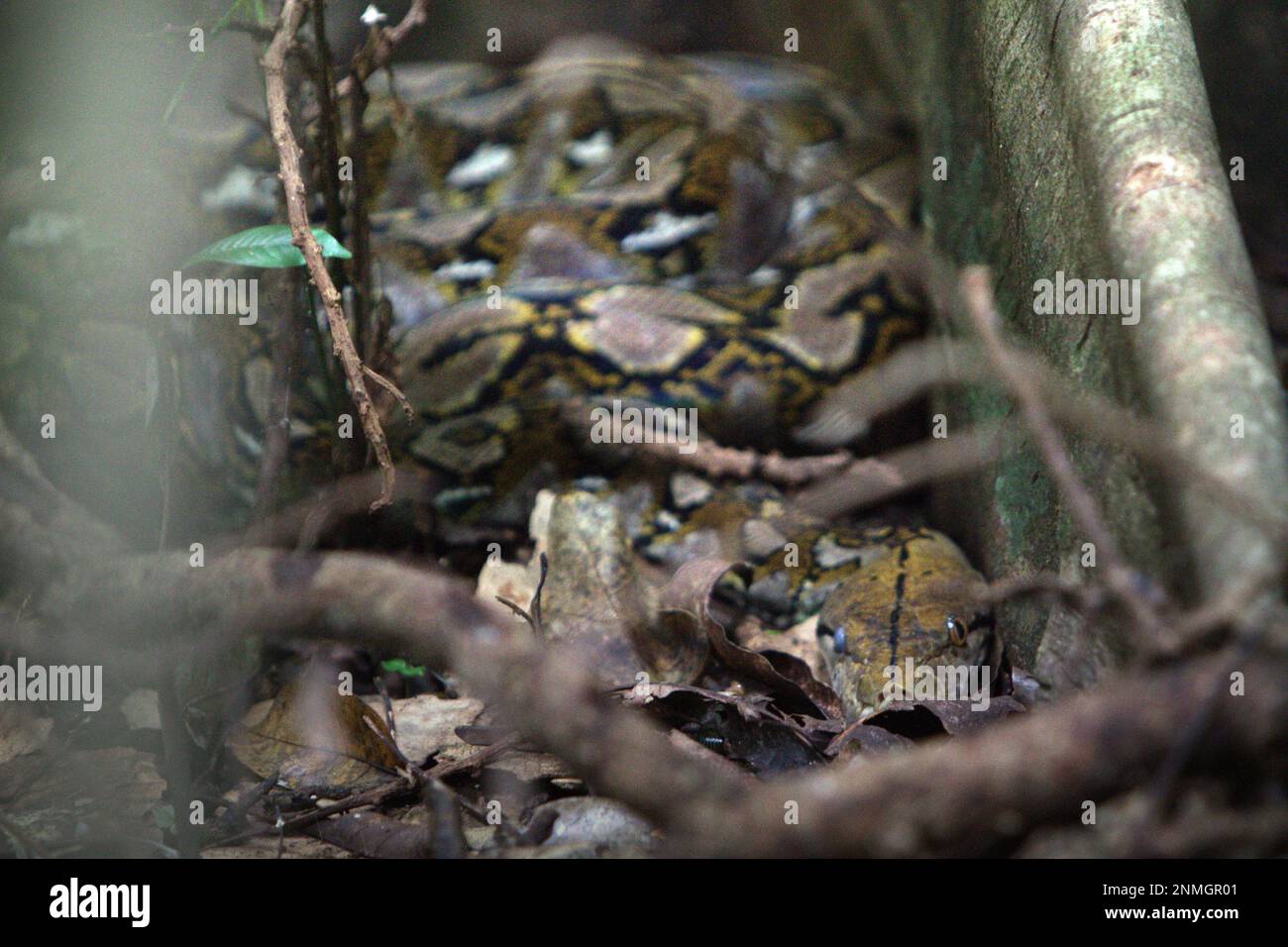 An unidentified python species is spotted below a fig tree in Tangkoko Nature Reserves, North Sulawesi, Indonesia. Latest research suggests that reptile richness is likely to decrease significantly across most parts of the world with ongoing future climate change. 'This effect, in addition to considerable impacts on species range extent, overlap and position, was visible across lizards, snakes and turtles alike,' wrote a team of scientists led by Matthias Biber (Department for Life Science Systems, School of Life Sciences, Technical University of Munich, Freising). Stock Photohttps://www.alamy.com/image-license-details/?v=1https://www.alamy.com/an-unidentified-python-species-is-spotted-below-a-fig-tree-in-tangkoko-nature-reserves-north-sulawesi-indonesia-latest-research-suggests-that-reptile-richness-is-likely-to-decrease-significantly-across-most-parts-of-the-world-with-ongoing-future-climate-change-this-effect-in-addition-to-considerable-impacts-on-species-range-extent-overlap-and-position-was-visible-across-lizards-snakes-and-turtles-alike-wrote-a-team-of-scientists-led-by-matthias-biber-department-for-life-science-systems-school-of-life-sciences-technical-university-of-munich-freising-image528973425.html
An unidentified python species is spotted below a fig tree in Tangkoko Nature Reserves, North Sulawesi, Indonesia. Latest research suggests that reptile richness is likely to decrease significantly across most parts of the world with ongoing future climate change. 'This effect, in addition to considerable impacts on species range extent, overlap and position, was visible across lizards, snakes and turtles alike,' wrote a team of scientists led by Matthias Biber (Department for Life Science Systems, School of Life Sciences, Technical University of Munich, Freising). Stock Photohttps://www.alamy.com/image-license-details/?v=1https://www.alamy.com/an-unidentified-python-species-is-spotted-below-a-fig-tree-in-tangkoko-nature-reserves-north-sulawesi-indonesia-latest-research-suggests-that-reptile-richness-is-likely-to-decrease-significantly-across-most-parts-of-the-world-with-ongoing-future-climate-change-this-effect-in-addition-to-considerable-impacts-on-species-range-extent-overlap-and-position-was-visible-across-lizards-snakes-and-turtles-alike-wrote-a-team-of-scientists-led-by-matthias-biber-department-for-life-science-systems-school-of-life-sciences-technical-university-of-munich-freising-image528973425.htmlRM2NMGR01–An unidentified python species is spotted below a fig tree in Tangkoko Nature Reserves, North Sulawesi, Indonesia. Latest research suggests that reptile richness is likely to decrease significantly across most parts of the world with ongoing future climate change. 'This effect, in addition to considerable impacts on species range extent, overlap and position, was visible across lizards, snakes and turtles alike,' wrote a team of scientists led by Matthias Biber (Department for Life Science Systems, School of Life Sciences, Technical University of Munich, Freising).
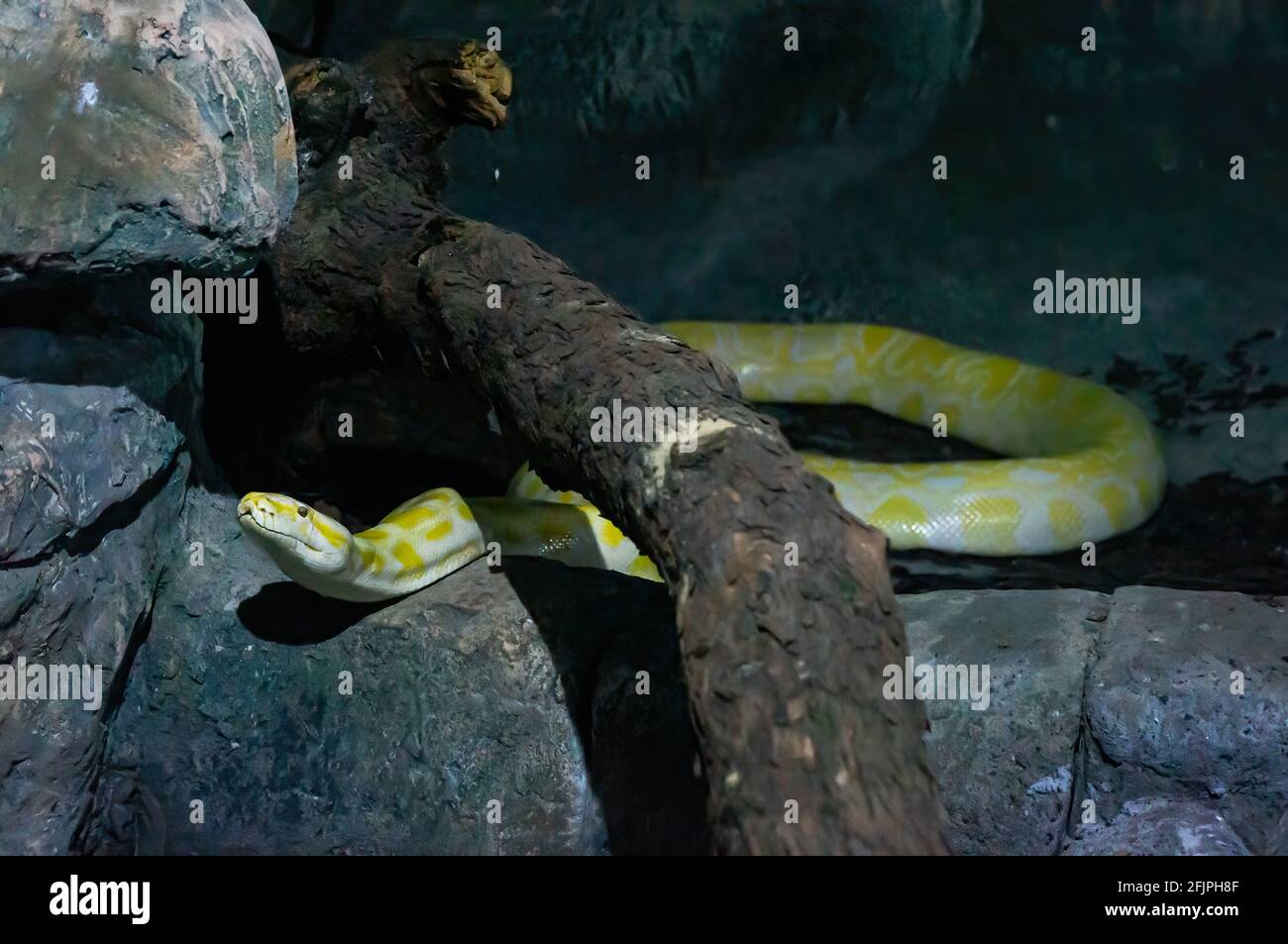 An albino Burmese python (Python mollurus bivittatus - one of the largest species of snakes) inside his animal enclosure in Sao Paulo aquarium. Stock Photohttps://www.alamy.com/image-license-details/?v=1https://www.alamy.com/an-albino-burmese-python-python-mollurus-bivittatus-one-of-the-largest-species-of-snakes-inside-his-animal-enclosure-in-sao-paulo-aquarium-image424609151.html
An albino Burmese python (Python mollurus bivittatus - one of the largest species of snakes) inside his animal enclosure in Sao Paulo aquarium. Stock Photohttps://www.alamy.com/image-license-details/?v=1https://www.alamy.com/an-albino-burmese-python-python-mollurus-bivittatus-one-of-the-largest-species-of-snakes-inside-his-animal-enclosure-in-sao-paulo-aquarium-image424609151.htmlRM2FJPH8F–An albino Burmese python (Python mollurus bivittatus - one of the largest species of snakes) inside his animal enclosure in Sao Paulo aquarium.
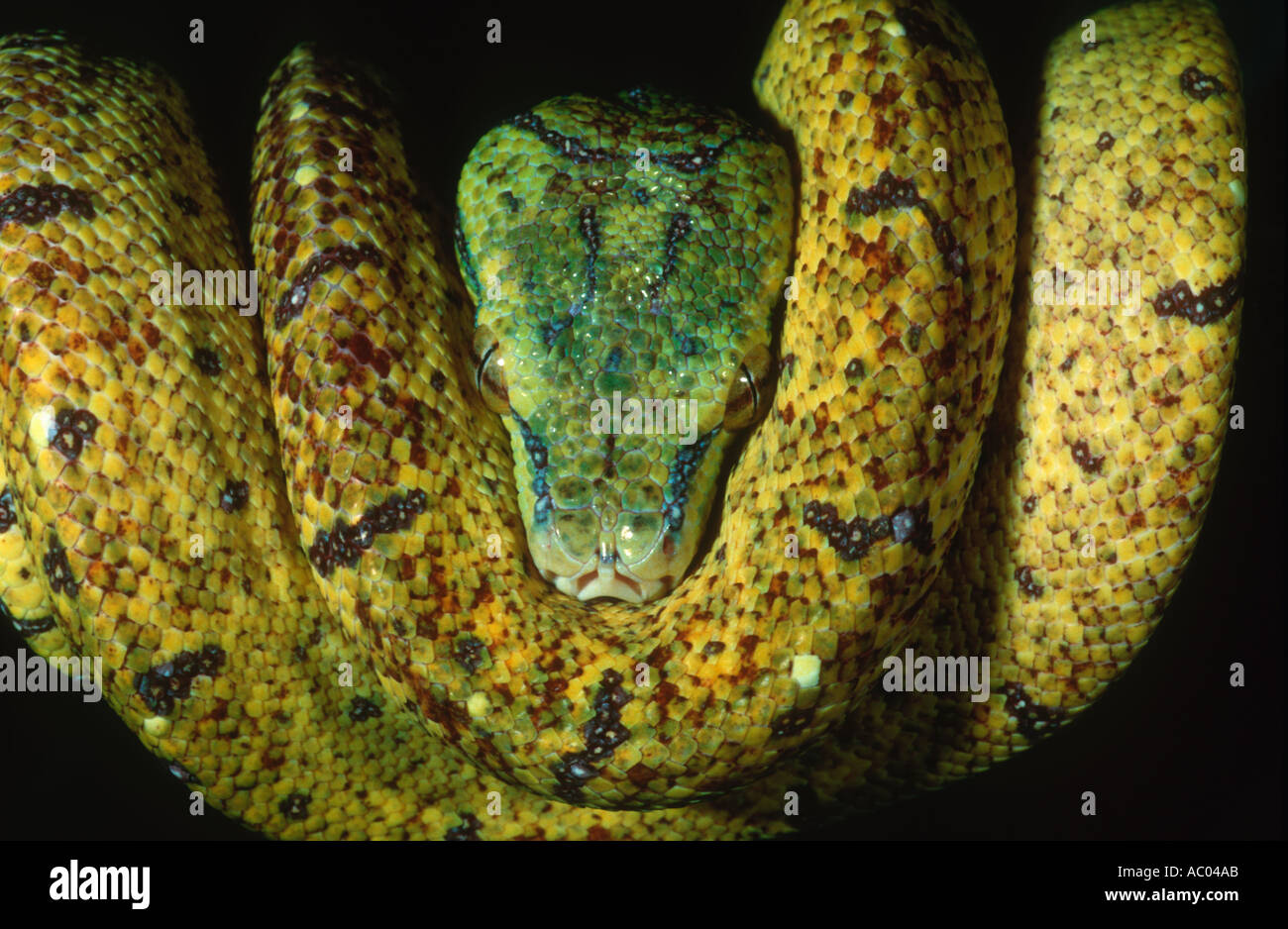 Green Python Chondropython viridis Arboreal rainforest species Immature colouration Australia Stock Photohttps://www.alamy.com/image-license-details/?v=1https://www.alamy.com/green-python-chondropython-viridis-arboreal-rainforest-species-immature-image787627.html
Green Python Chondropython viridis Arboreal rainforest species Immature colouration Australia Stock Photohttps://www.alamy.com/image-license-details/?v=1https://www.alamy.com/green-python-chondropython-viridis-arboreal-rainforest-species-immature-image787627.htmlRMAC04AB–Green Python Chondropython viridis Arboreal rainforest species Immature colouration Australia
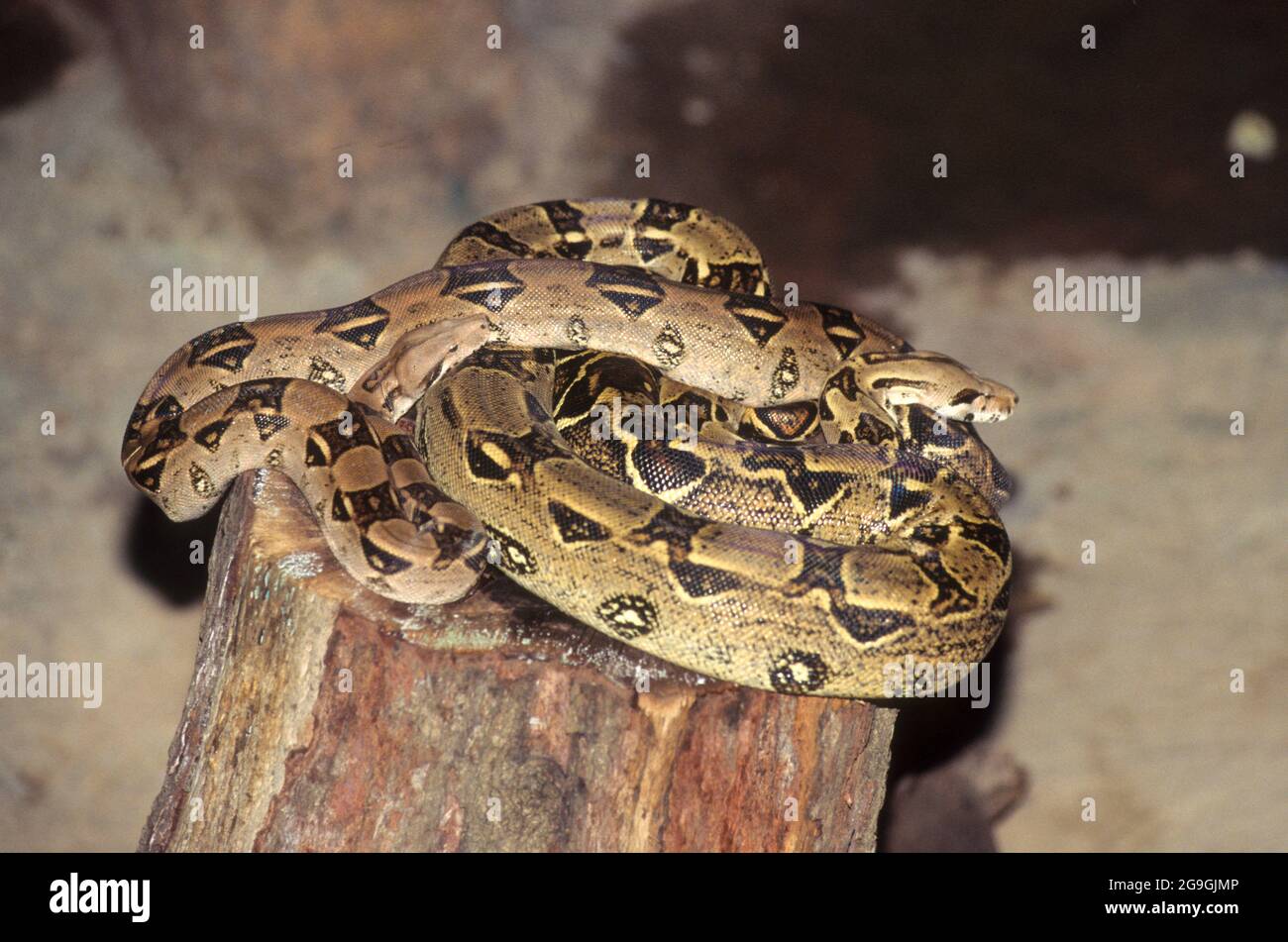 The reticulated python (Malayopython reticulatus) is a python species native to South and Southeast Asia. It is the world's longest snake, and listed Stock Photohttps://www.alamy.com/image-license-details/?v=1https://www.alamy.com/the-reticulated-python-malayopython-reticulatus-is-a-python-species-native-to-south-and-southeast-asia-it-is-the-worlds-longest-snake-and-listed-image436157030.html
The reticulated python (Malayopython reticulatus) is a python species native to South and Southeast Asia. It is the world's longest snake, and listed Stock Photohttps://www.alamy.com/image-license-details/?v=1https://www.alamy.com/the-reticulated-python-malayopython-reticulatus-is-a-python-species-native-to-south-and-southeast-asia-it-is-the-worlds-longest-snake-and-listed-image436157030.htmlRF2G9GJMP–The reticulated python (Malayopython reticulatus) is a python species native to South and Southeast Asia. It is the world's longest snake, and listed
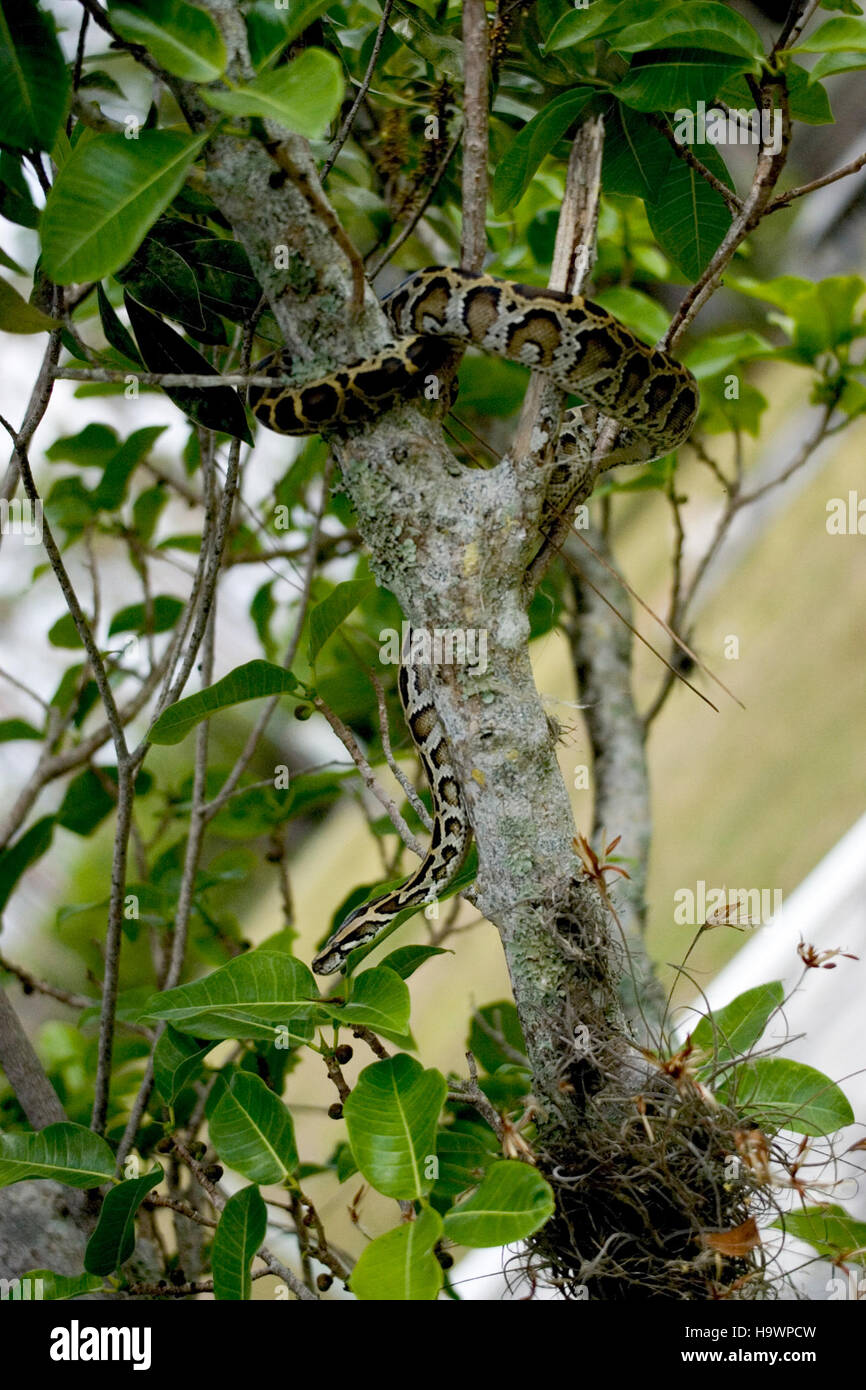 A Burmese python, an invasive species, is photographed in Everglades National Park, highlighting the ongoing efforts to manage invasive species and protect native ecosystems. Stock Photohttps://www.alamy.com/image-license-details/?v=1https://www.alamy.com/stock-photo-a-burmese-python-an-invasive-species-is-photographed-in-everglades-126570889.html
A Burmese python, an invasive species, is photographed in Everglades National Park, highlighting the ongoing efforts to manage invasive species and protect native ecosystems. Stock Photohttps://www.alamy.com/image-license-details/?v=1https://www.alamy.com/stock-photo-a-burmese-python-an-invasive-species-is-photographed-in-everglades-126570889.htmlRMH9WPCW–A Burmese python, an invasive species, is photographed in Everglades National Park, highlighting the ongoing efforts to manage invasive species and protect native ecosystems.
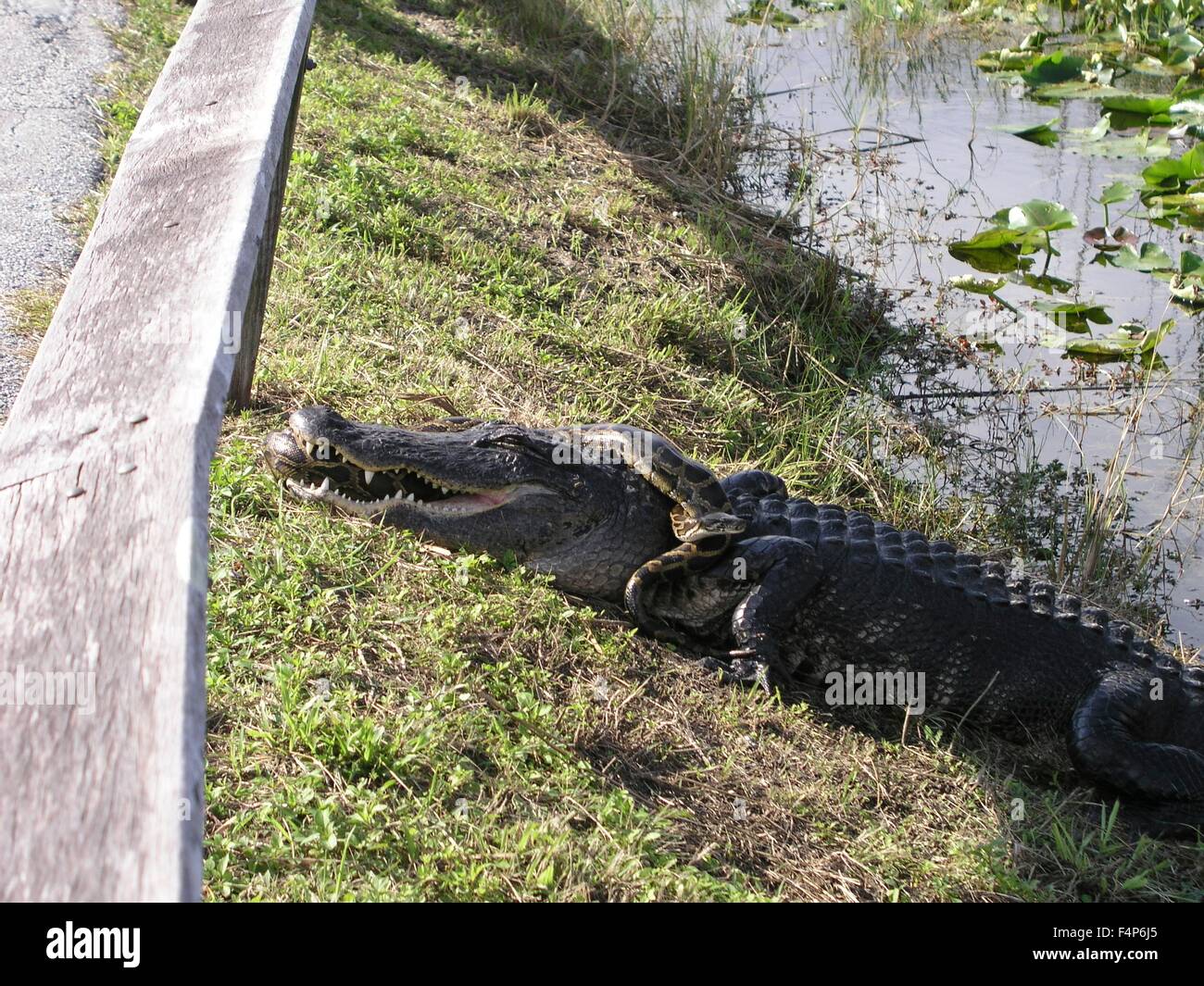 A Burmese pythons battles an American alligator in the Everglades National Park December 23, 2005 near Homestead, Florida. The python is an invasive species introduced by accident and now competing directly with the top predators in the Everglades ecosystem. Stock Photohttps://www.alamy.com/image-license-details/?v=1https://www.alamy.com/stock-photo-a-burmese-pythons-battles-an-american-alligator-in-the-everglades-88998621.html
A Burmese pythons battles an American alligator in the Everglades National Park December 23, 2005 near Homestead, Florida. The python is an invasive species introduced by accident and now competing directly with the top predators in the Everglades ecosystem. Stock Photohttps://www.alamy.com/image-license-details/?v=1https://www.alamy.com/stock-photo-a-burmese-pythons-battles-an-american-alligator-in-the-everglades-88998621.htmlRMF4P6J5–A Burmese pythons battles an American alligator in the Everglades National Park December 23, 2005 near Homestead, Florida. The python is an invasive species introduced by accident and now competing directly with the top predators in the Everglades ecosystem.
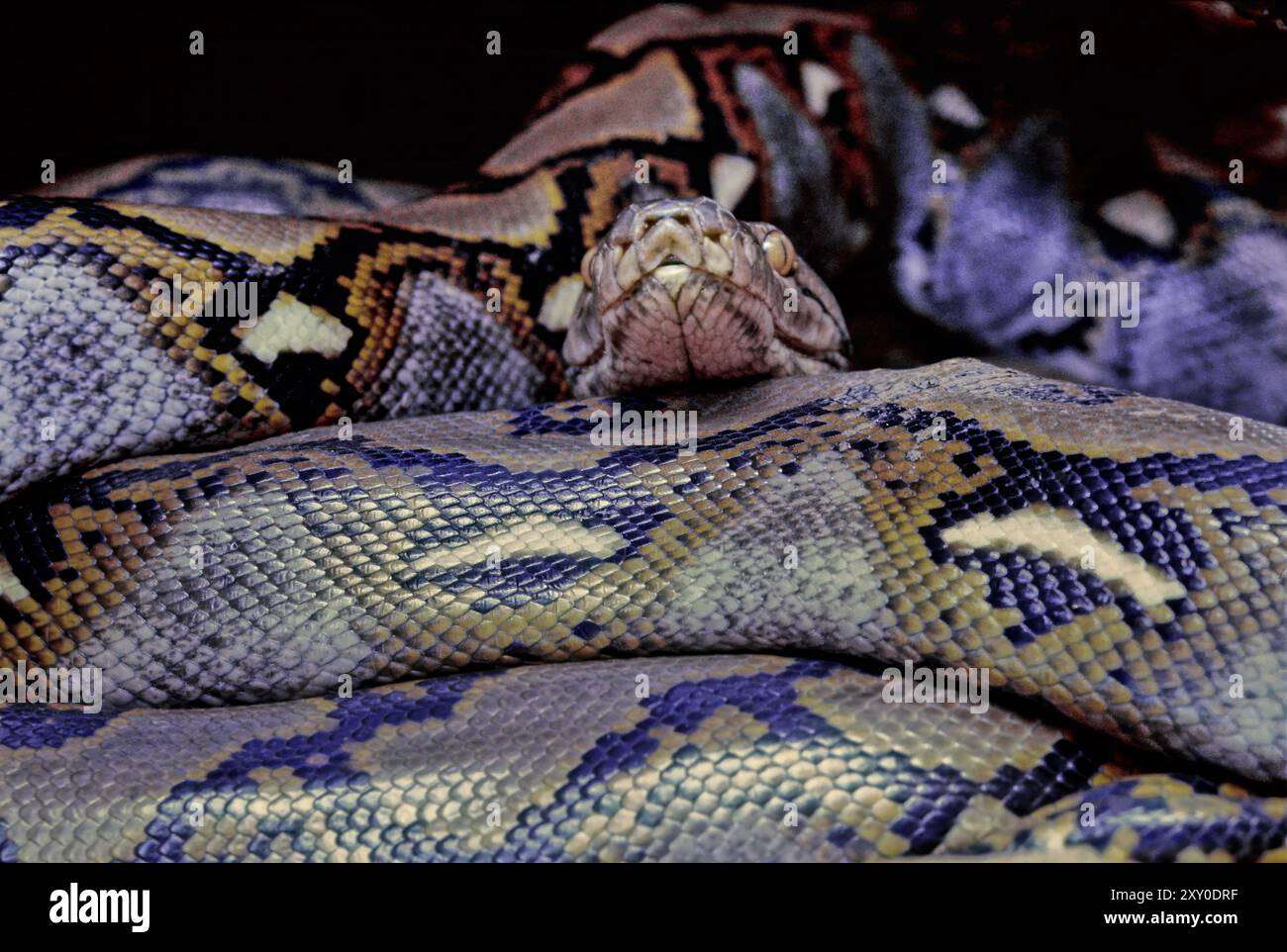 The reticulated python (Malayopython reticulatus) is a python species native to South and Southeast Asia. Stock Photohttps://www.alamy.com/image-license-details/?v=1https://www.alamy.com/the-reticulated-python-malayopython-reticulatus-is-a-python-species-native-to-south-and-southeast-asia-image618969443.html
The reticulated python (Malayopython reticulatus) is a python species native to South and Southeast Asia. Stock Photohttps://www.alamy.com/image-license-details/?v=1https://www.alamy.com/the-reticulated-python-malayopython-reticulatus-is-a-python-species-native-to-south-and-southeast-asia-image618969443.htmlRF2XY0DRF–The reticulated python (Malayopython reticulatus) is a python species native to South and Southeast Asia.
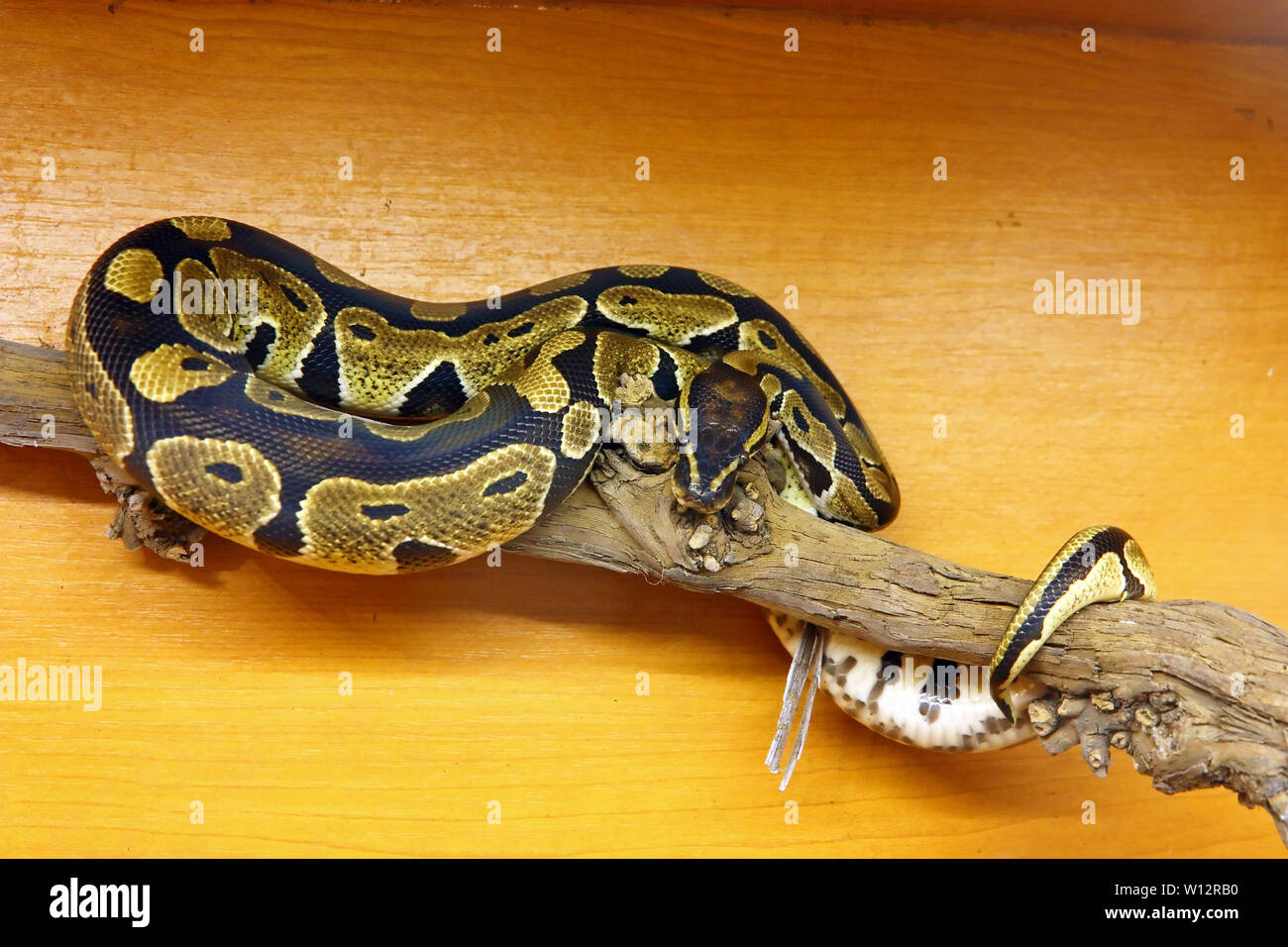 The royal python (python regius), is a python species found in sub-Saharan Africa Stock Photohttps://www.alamy.com/image-license-details/?v=1https://www.alamy.com/the-royal-python-python-regius-is-a-python-species-found-in-sub-saharan-africa-image258832420.html
The royal python (python regius), is a python species found in sub-Saharan Africa Stock Photohttps://www.alamy.com/image-license-details/?v=1https://www.alamy.com/the-royal-python-python-regius-is-a-python-species-found-in-sub-saharan-africa-image258832420.htmlRFW12RB0–The royal python (python regius), is a python species found in sub-Saharan Africa
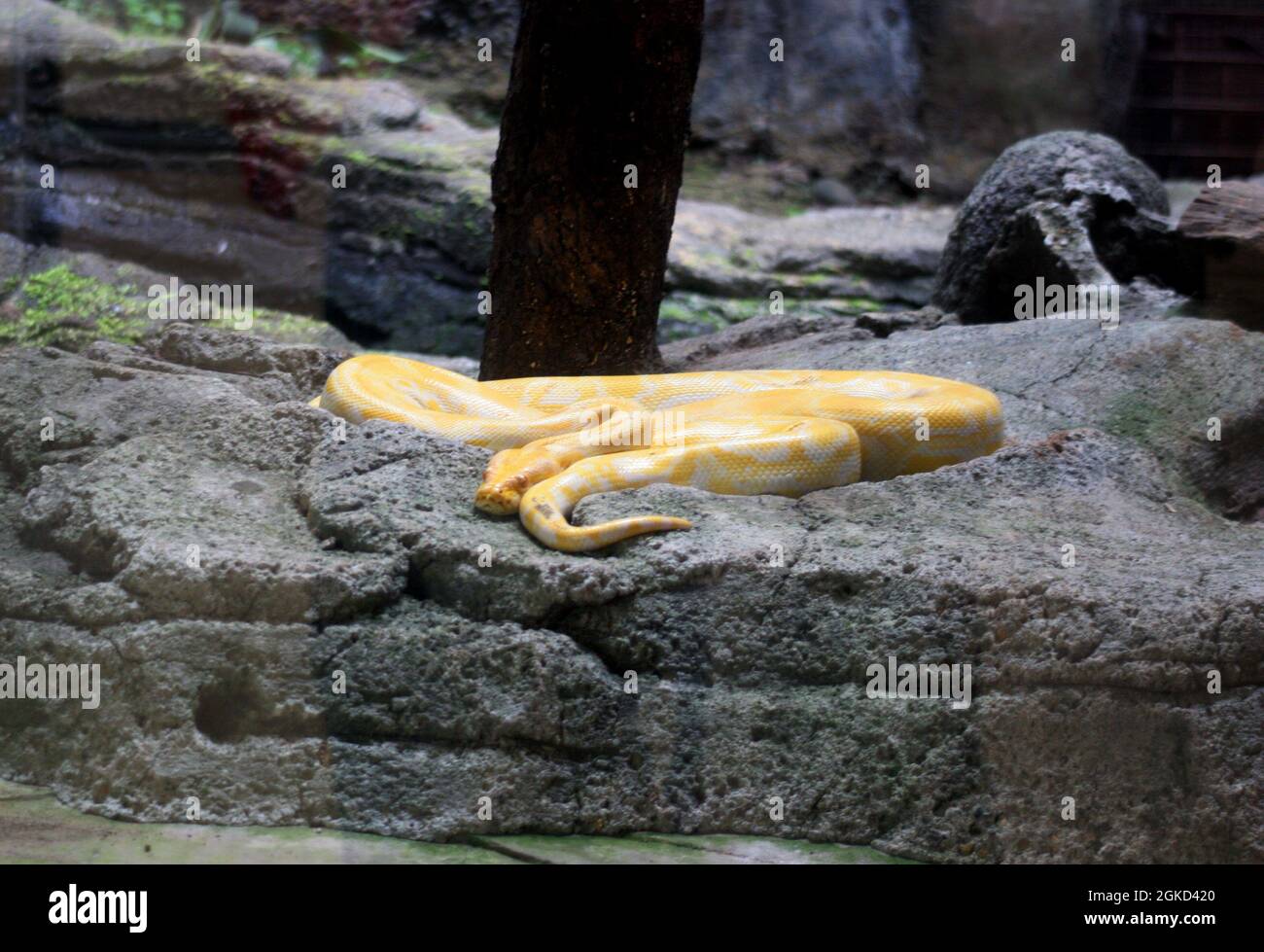 The Albino Ball Phyton. The ball python, also called the royal python, is a python species native to West and Central Africa, Stock Photohttps://www.alamy.com/image-license-details/?v=1https://www.alamy.com/the-albino-ball-phyton-the-ball-python-also-called-the-royal-python-is-a-python-species-native-to-west-and-central-africa-image442226232.html
The Albino Ball Phyton. The ball python, also called the royal python, is a python species native to West and Central Africa, Stock Photohttps://www.alamy.com/image-license-details/?v=1https://www.alamy.com/the-albino-ball-phyton-the-ball-python-also-called-the-royal-python-is-a-python-species-native-to-west-and-central-africa-image442226232.htmlRM2GKD420–The Albino Ball Phyton. The ball python, also called the royal python, is a python species native to West and Central Africa,
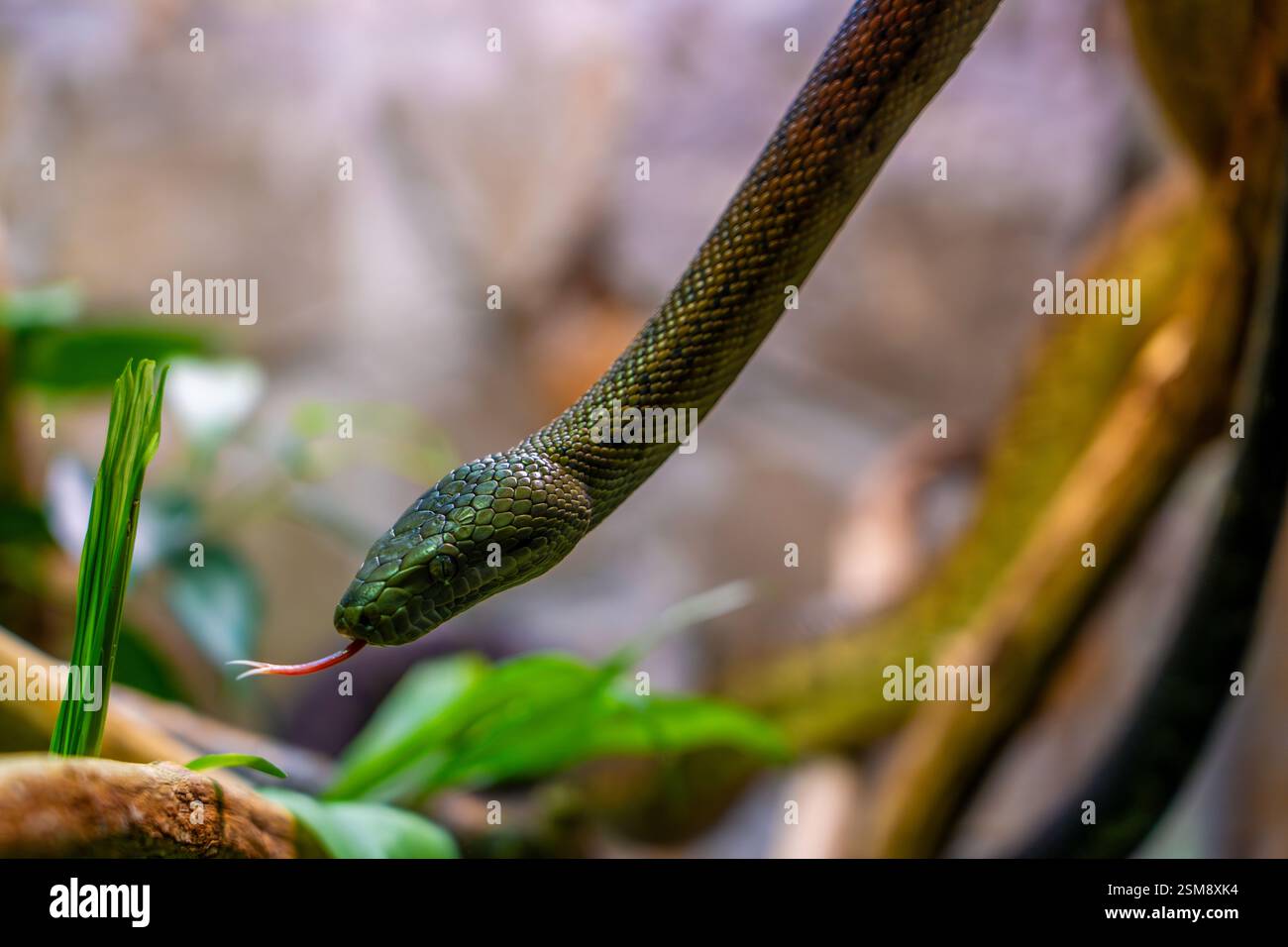 Close-Up of Green Tree Python (Morelia viridis) with Forked Tongue in a Lush Tropical Habitat Stock Photohttps://www.alamy.com/image-license-details/?v=1https://www.alamy.com/close-up-of-green-tree-python-morelia-viridis-with-forked-tongue-in-a-lush-tropical-habitat-image649273272.html
Close-Up of Green Tree Python (Morelia viridis) with Forked Tongue in a Lush Tropical Habitat Stock Photohttps://www.alamy.com/image-license-details/?v=1https://www.alamy.com/close-up-of-green-tree-python-morelia-viridis-with-forked-tongue-in-a-lush-tropical-habitat-image649273272.htmlRF2SM8XK4–Close-Up of Green Tree Python (Morelia viridis) with Forked Tongue in a Lush Tropical Habitat
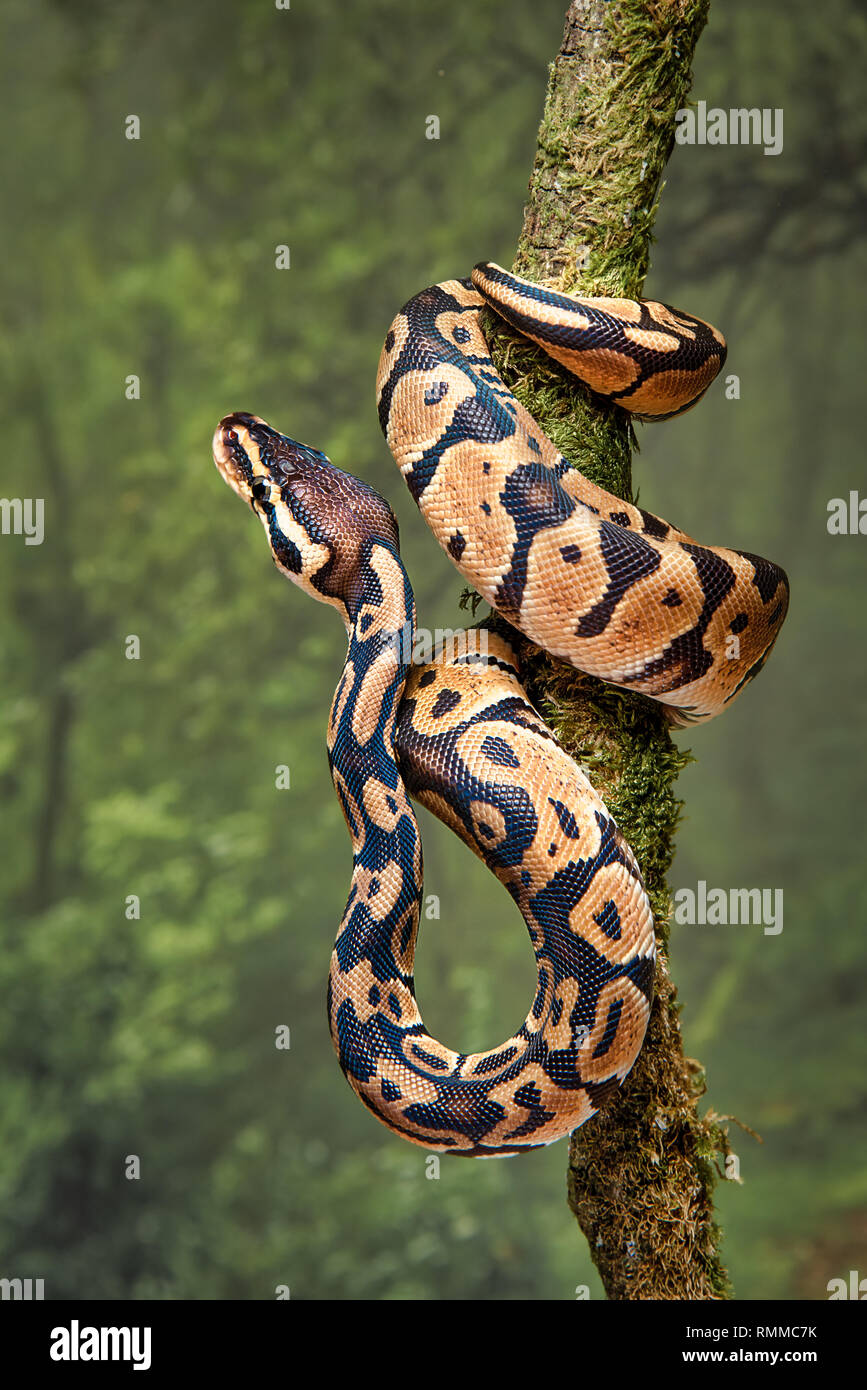 A young royal python wrapped around a tree trunk with its head facing upwards Stock Photohttps://www.alamy.com/image-license-details/?v=1https://www.alamy.com/a-young-royal-python-wrapped-around-a-tree-trunk-with-its-head-facing-upwards-image236476567.html
A young royal python wrapped around a tree trunk with its head facing upwards Stock Photohttps://www.alamy.com/image-license-details/?v=1https://www.alamy.com/a-young-royal-python-wrapped-around-a-tree-trunk-with-its-head-facing-upwards-image236476567.htmlRFRMMC7K–A young royal python wrapped around a tree trunk with its head facing upwards
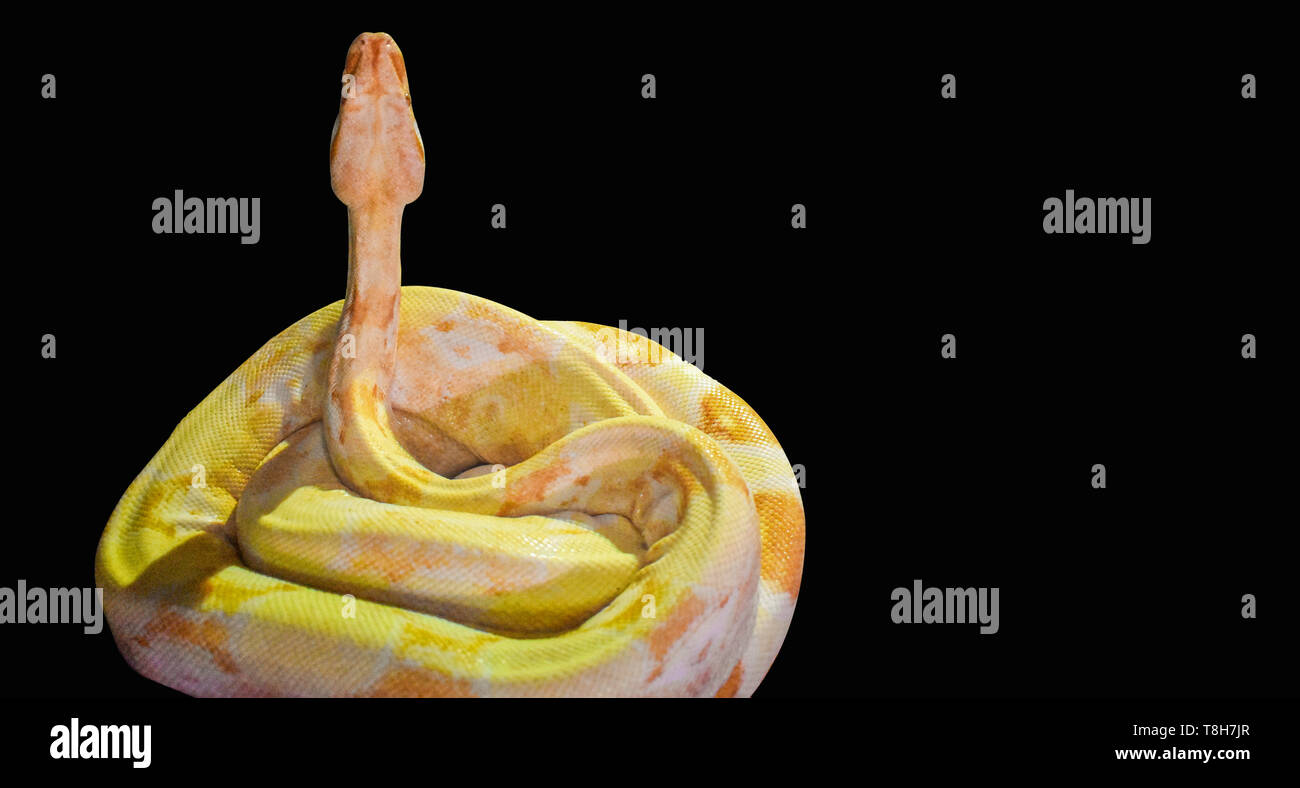 Yellow big snake isolated on white background. The ball python (Python regius), also known as the royal python, is a python species found in sub-Sahar Stock Photohttps://www.alamy.com/image-license-details/?v=1https://www.alamy.com/yellow-big-snake-isolated-on-white-background-the-ball-python-python-regius-also-known-as-the-royal-python-is-a-python-species-found-in-sub-sahar-image246241599.html
Yellow big snake isolated on white background. The ball python (Python regius), also known as the royal python, is a python species found in sub-Sahar Stock Photohttps://www.alamy.com/image-license-details/?v=1https://www.alamy.com/yellow-big-snake-isolated-on-white-background-the-ball-python-python-regius-also-known-as-the-royal-python-is-a-python-species-found-in-sub-sahar-image246241599.htmlRFT8H7JR–Yellow big snake isolated on white background. The ball python (Python regius), also known as the royal python, is a python species found in sub-Sahar
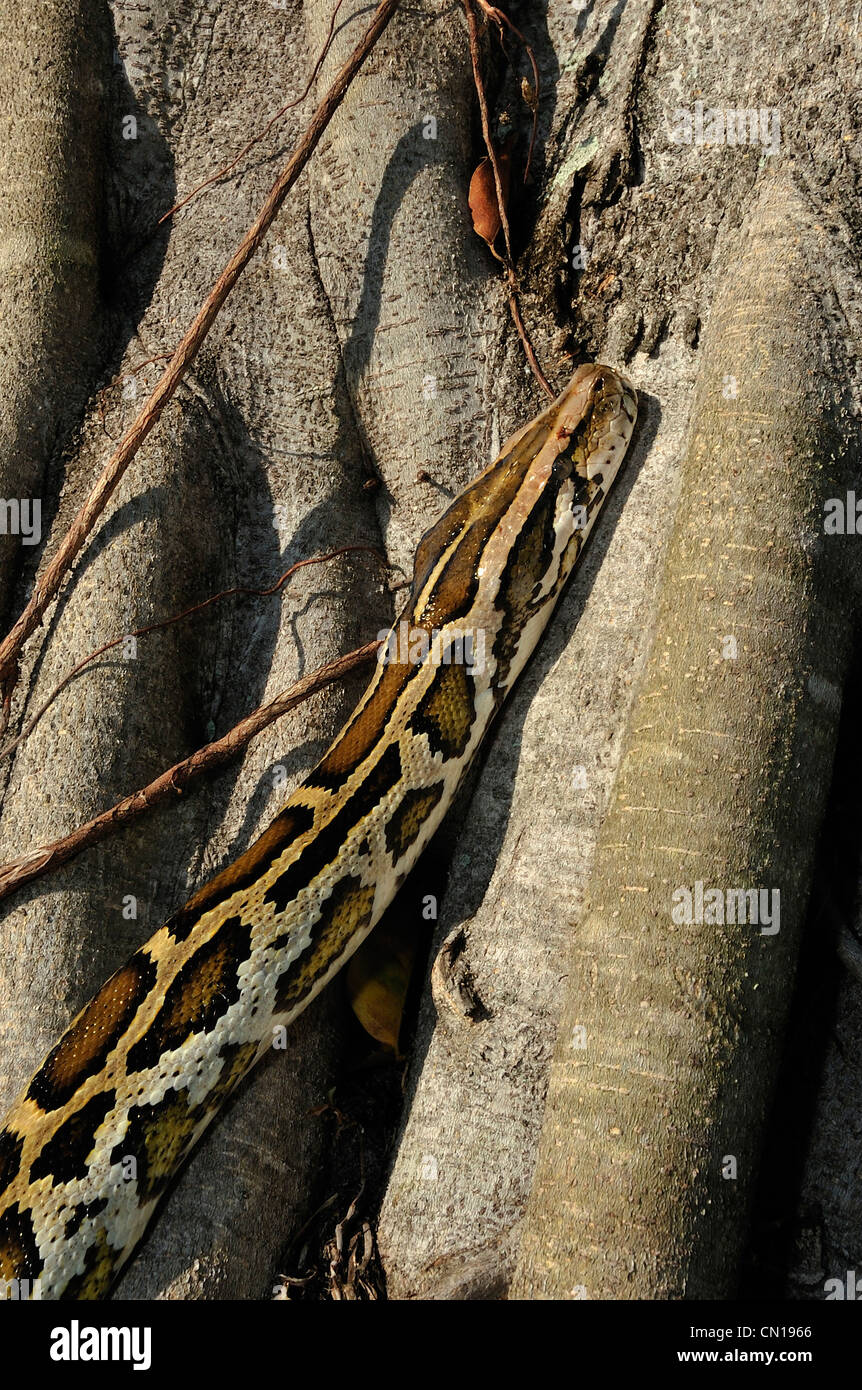 Burmese python, Python molurus bivittatus, Florida Stock Photohttps://www.alamy.com/image-license-details/?v=1https://www.alamy.com/stock-photo-burmese-python-python-molurus-bivittatus-florida-47357694.html
Burmese python, Python molurus bivittatus, Florida Stock Photohttps://www.alamy.com/image-license-details/?v=1https://www.alamy.com/stock-photo-burmese-python-python-molurus-bivittatus-florida-47357694.htmlRMCN1966–Burmese python, Python molurus bivittatus, Florida
 Python hunting, a practice to control the invasive Burmese python population in the Florida Everglades, aims to protect the ecosystem and native wildlife from the destructive impact of the species. Stock Photohttps://www.alamy.com/image-license-details/?v=1https://www.alamy.com/stock-photo-python-hunting-a-practice-to-control-the-invasive-burmese-python-population-140403598.html
Python hunting, a practice to control the invasive Burmese python population in the Florida Everglades, aims to protect the ecosystem and native wildlife from the destructive impact of the species. Stock Photohttps://www.alamy.com/image-license-details/?v=1https://www.alamy.com/stock-photo-python-hunting-a-practice-to-control-the-invasive-burmese-python-population-140403598.htmlRMJ4BX66–Python hunting, a practice to control the invasive Burmese python population in the Florida Everglades, aims to protect the ecosystem and native wildlife from the destructive impact of the species.
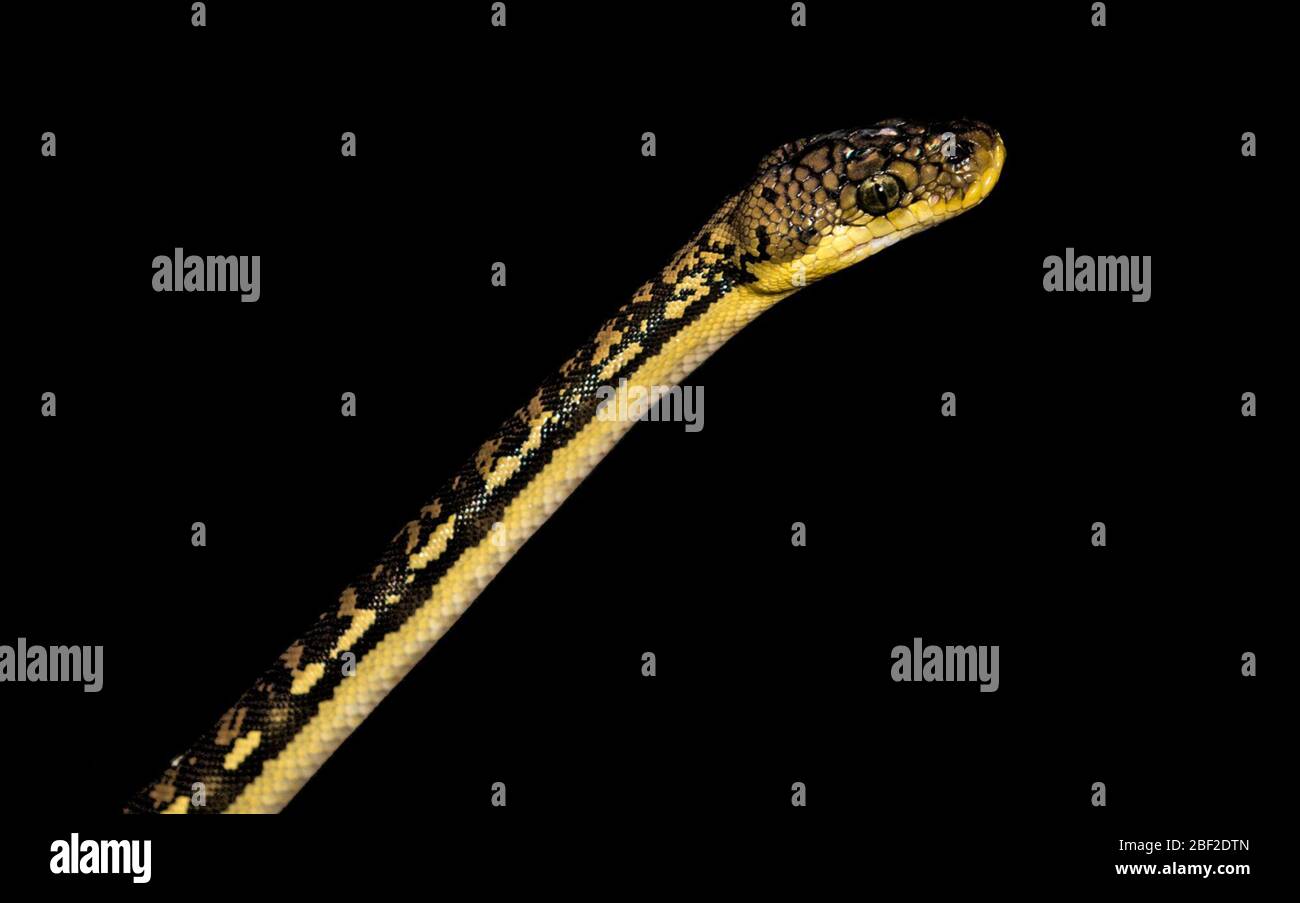 Timor Python. Species: timoriensis,Genus: Python,Family: Pythonidae,Order: Squamata,Class: Reptilia,Phylum: Chordata,Kingdom: Animalia,Reptile,snake,Reptile house Stock Photohttps://www.alamy.com/image-license-details/?v=1https://www.alamy.com/timor-python-species-timoriensisgenus-pythonfamily-pythonidaeorder-squamataclass-reptiliaphylum-chordatakingdom-animaliareptilesnakereptile-house-image353481989.html
Timor Python. Species: timoriensis,Genus: Python,Family: Pythonidae,Order: Squamata,Class: Reptilia,Phylum: Chordata,Kingdom: Animalia,Reptile,snake,Reptile house Stock Photohttps://www.alamy.com/image-license-details/?v=1https://www.alamy.com/timor-python-species-timoriensisgenus-pythonfamily-pythonidaeorder-squamataclass-reptiliaphylum-chordatakingdom-animaliareptilesnakereptile-house-image353481989.htmlRM2BF2DTN–Timor Python. Species: timoriensis,Genus: Python,Family: Pythonidae,Order: Squamata,Class: Reptilia,Phylum: Chordata,Kingdom: Animalia,Reptile,snake,Reptile house
 Calabaria fusca, Print, The Calabar python (Calabaria reinhardtii ) is a nonvenomous boa species endemic to western and central Africa. It is the only species in its genus., 1700-1880 Stock Photohttps://www.alamy.com/image-license-details/?v=1https://www.alamy.com/calabaria-fusca-print-the-calabar-python-calabaria-reinhardtii-is-a-nonvenomous-boa-species-endemic-to-western-and-central-africa-it-is-the-only-species-in-its-genus-1700-1880-image328669066.html
Calabaria fusca, Print, The Calabar python (Calabaria reinhardtii ) is a nonvenomous boa species endemic to western and central Africa. It is the only species in its genus., 1700-1880 Stock Photohttps://www.alamy.com/image-license-details/?v=1https://www.alamy.com/calabaria-fusca-print-the-calabar-python-calabaria-reinhardtii-is-a-nonvenomous-boa-species-endemic-to-western-and-central-africa-it-is-the-only-species-in-its-genus-1700-1880-image328669066.htmlRM2A2M4MX–Calabaria fusca, Print, The Calabar python (Calabaria reinhardtii ) is a nonvenomous boa species endemic to western and central Africa. It is the only species in its genus., 1700-1880
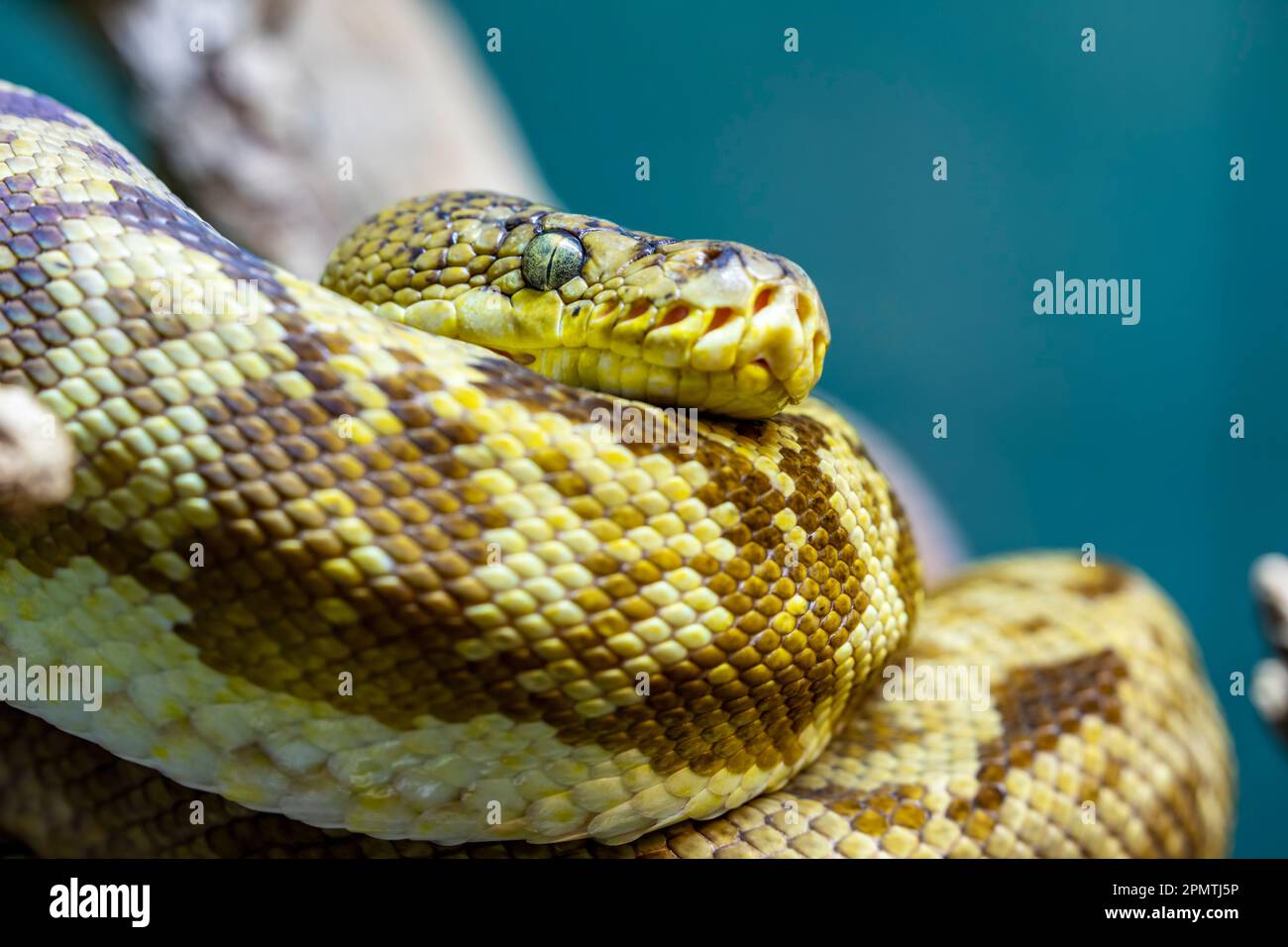 The Timor python (Malayopython timoriensis) is a python species found in Southeast Asia. Like all pythons, it is a nonvenomous constrictor; Stock Photohttps://www.alamy.com/image-license-details/?v=1https://www.alamy.com/the-timor-python-malayopython-timoriensis-is-a-python-species-found-in-southeast-asia-like-all-pythons-it-is-a-nonvenomous-constrictor-image546355650.html
The Timor python (Malayopython timoriensis) is a python species found in Southeast Asia. Like all pythons, it is a nonvenomous constrictor; Stock Photohttps://www.alamy.com/image-license-details/?v=1https://www.alamy.com/the-timor-python-malayopython-timoriensis-is-a-python-species-found-in-southeast-asia-like-all-pythons-it-is-a-nonvenomous-constrictor-image546355650.htmlRF2PMTJ5P–The Timor python (Malayopython timoriensis) is a python species found in Southeast Asia. Like all pythons, it is a nonvenomous constrictor;
RMP29XYD–. Python curtus . between 1700 and 1880 274 Python curtus - 1700-1880 - Print - Iconographia Zoologica - Special Collections University of Amsterdam - UBA01 IZ11800207
 Snake skeleton of the world's longest snake species - a Malay Python - 1920's illustration Stock Photohttps://www.alamy.com/image-license-details/?v=1https://www.alamy.com/snake-skeleton-of-the-worlds-longest-snake-species-a-malay-python-1920s-illustration-image255722274.html
Snake skeleton of the world's longest snake species - a Malay Python - 1920's illustration Stock Photohttps://www.alamy.com/image-license-details/?v=1https://www.alamy.com/snake-skeleton-of-the-worlds-longest-snake-species-a-malay-python-1920s-illustration-image255722274.htmlRMTT14AA–Snake skeleton of the world's longest snake species - a Malay Python - 1920's illustration
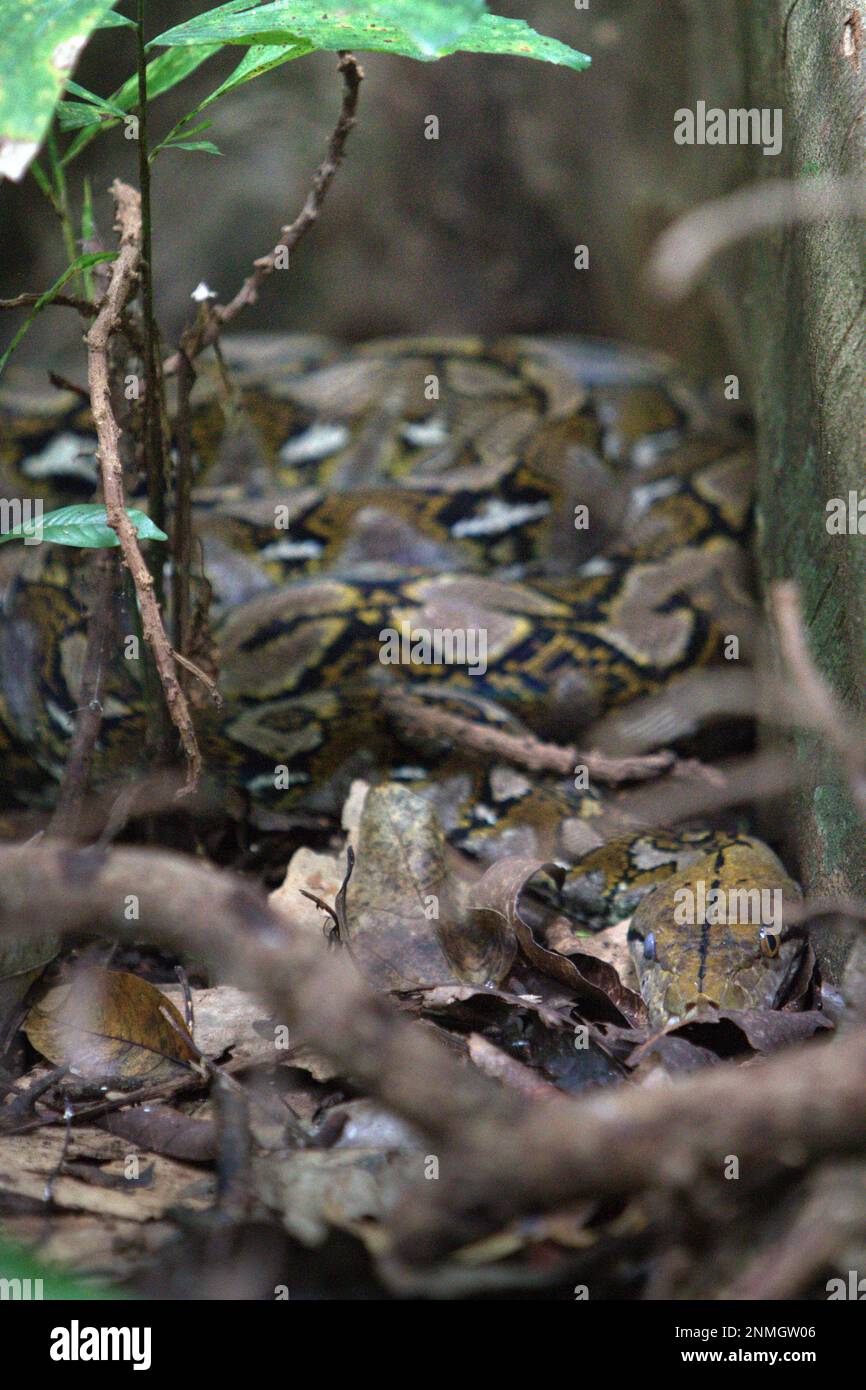 An unidentified python species is spotted below a fig tree in Tangkoko Nature Reserves, North Sulawesi, Indonesia. Latest research suggests that reptile richness is likely to decrease significantly across most parts of the world with ongoing future climate change. 'This effect, in addition to considerable impacts on species range extent, overlap and position, was visible across lizards, snakes and turtles alike,' wrote a team of scientists led by Matthias Biber (Department for Life Science Systems, School of Life Sciences, Technical University of Munich, Freising). Stock Photohttps://www.alamy.com/image-license-details/?v=1https://www.alamy.com/an-unidentified-python-species-is-spotted-below-a-fig-tree-in-tangkoko-nature-reserves-north-sulawesi-indonesia-latest-research-suggests-that-reptile-richness-is-likely-to-decrease-significantly-across-most-parts-of-the-world-with-ongoing-future-climate-change-this-effect-in-addition-to-considerable-impacts-on-species-range-extent-overlap-and-position-was-visible-across-lizards-snakes-and-turtles-alike-wrote-a-team-of-scientists-led-by-matthias-biber-department-for-life-science-systems-school-of-life-sciences-technical-university-of-munich-freising-image528974998.html
An unidentified python species is spotted below a fig tree in Tangkoko Nature Reserves, North Sulawesi, Indonesia. Latest research suggests that reptile richness is likely to decrease significantly across most parts of the world with ongoing future climate change. 'This effect, in addition to considerable impacts on species range extent, overlap and position, was visible across lizards, snakes and turtles alike,' wrote a team of scientists led by Matthias Biber (Department for Life Science Systems, School of Life Sciences, Technical University of Munich, Freising). Stock Photohttps://www.alamy.com/image-license-details/?v=1https://www.alamy.com/an-unidentified-python-species-is-spotted-below-a-fig-tree-in-tangkoko-nature-reserves-north-sulawesi-indonesia-latest-research-suggests-that-reptile-richness-is-likely-to-decrease-significantly-across-most-parts-of-the-world-with-ongoing-future-climate-change-this-effect-in-addition-to-considerable-impacts-on-species-range-extent-overlap-and-position-was-visible-across-lizards-snakes-and-turtles-alike-wrote-a-team-of-scientists-led-by-matthias-biber-department-for-life-science-systems-school-of-life-sciences-technical-university-of-munich-freising-image528974998.htmlRM2NMGW06–An unidentified python species is spotted below a fig tree in Tangkoko Nature Reserves, North Sulawesi, Indonesia. Latest research suggests that reptile richness is likely to decrease significantly across most parts of the world with ongoing future climate change. 'This effect, in addition to considerable impacts on species range extent, overlap and position, was visible across lizards, snakes and turtles alike,' wrote a team of scientists led by Matthias Biber (Department for Life Science Systems, School of Life Sciences, Technical University of Munich, Freising).
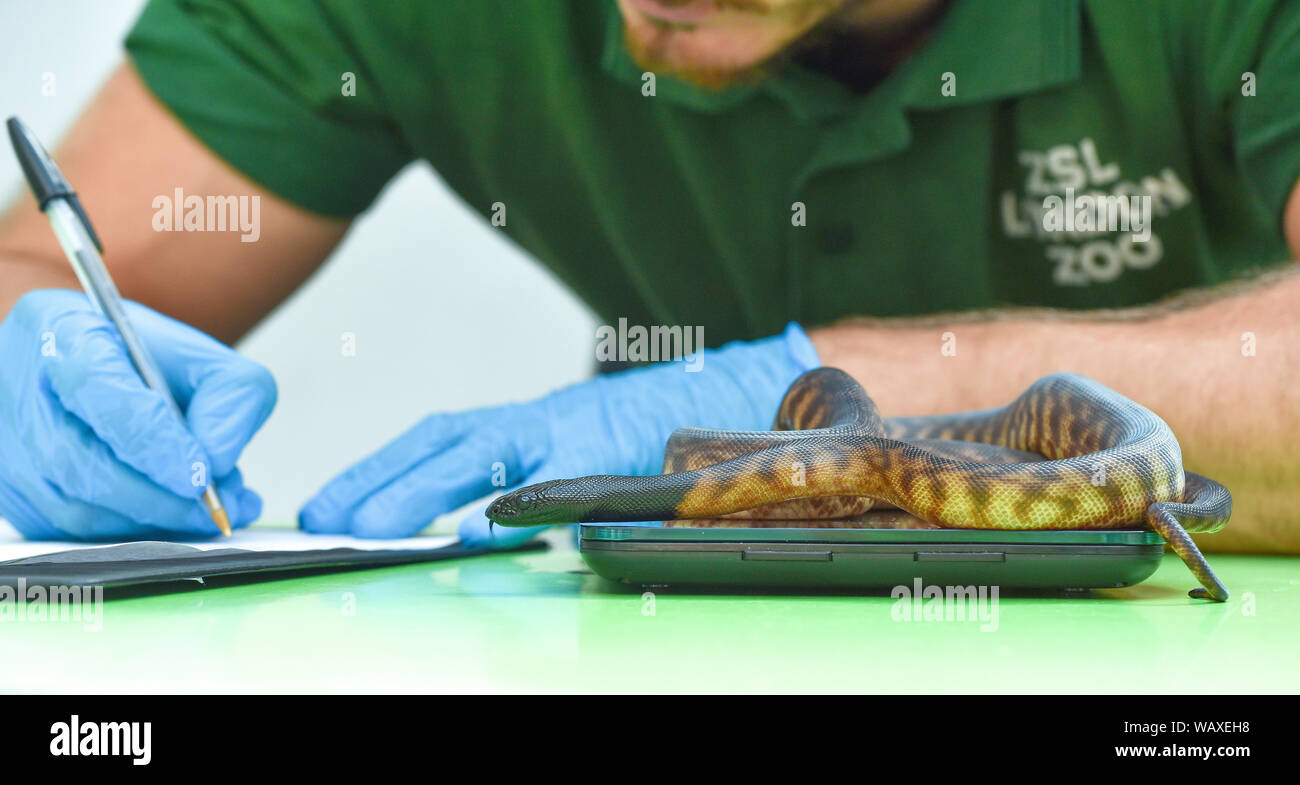 A Black-headed python (juvenile) is being weighed during the Annual weigh-in at ZSL London Zoo in London. Stock Photohttps://www.alamy.com/image-license-details/?v=1https://www.alamy.com/a-black-headed-python-juvenile-is-being-weighed-during-the-annual-weigh-in-at-zsl-london-zoo-in-london-image264884292.html
A Black-headed python (juvenile) is being weighed during the Annual weigh-in at ZSL London Zoo in London. Stock Photohttps://www.alamy.com/image-license-details/?v=1https://www.alamy.com/a-black-headed-python-juvenile-is-being-weighed-during-the-annual-weigh-in-at-zsl-london-zoo-in-london-image264884292.htmlRMWAXEH8–A Black-headed python (juvenile) is being weighed during the Annual weigh-in at ZSL London Zoo in London.
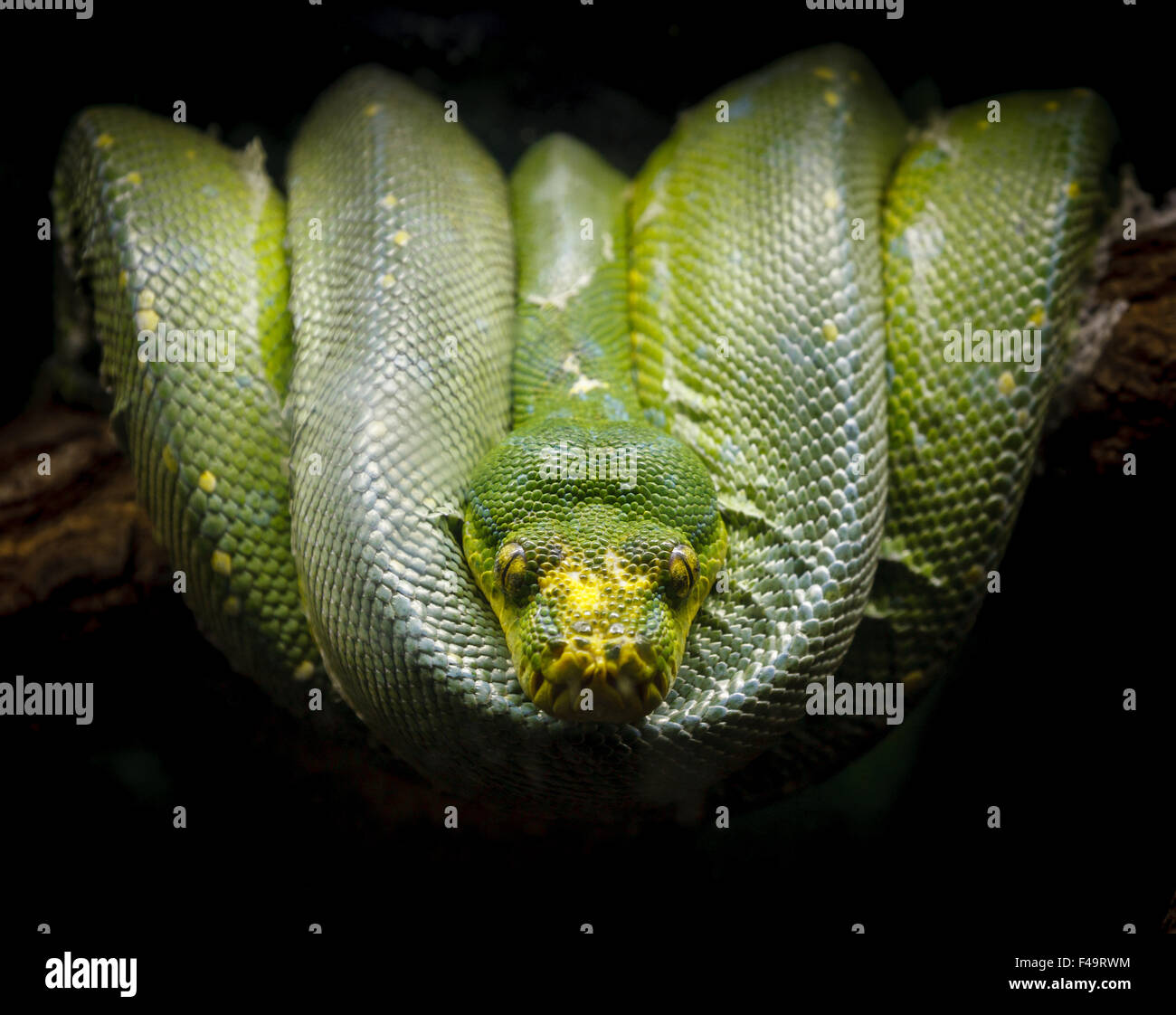 Green python (morelia viridis) comfortably coiled on a tree branch. Photography of a snake species of the pythonidae family. Stock Photohttps://www.alamy.com/image-license-details/?v=1https://www.alamy.com/stock-photo-green-python-morelia-viridis-comfortably-coiled-on-a-tree-branch-photography-88726784.html
Green python (morelia viridis) comfortably coiled on a tree branch. Photography of a snake species of the pythonidae family. Stock Photohttps://www.alamy.com/image-license-details/?v=1https://www.alamy.com/stock-photo-green-python-morelia-viridis-comfortably-coiled-on-a-tree-branch-photography-88726784.htmlRFF49RWM–Green python (morelia viridis) comfortably coiled on a tree branch. Photography of a snake species of the pythonidae family.
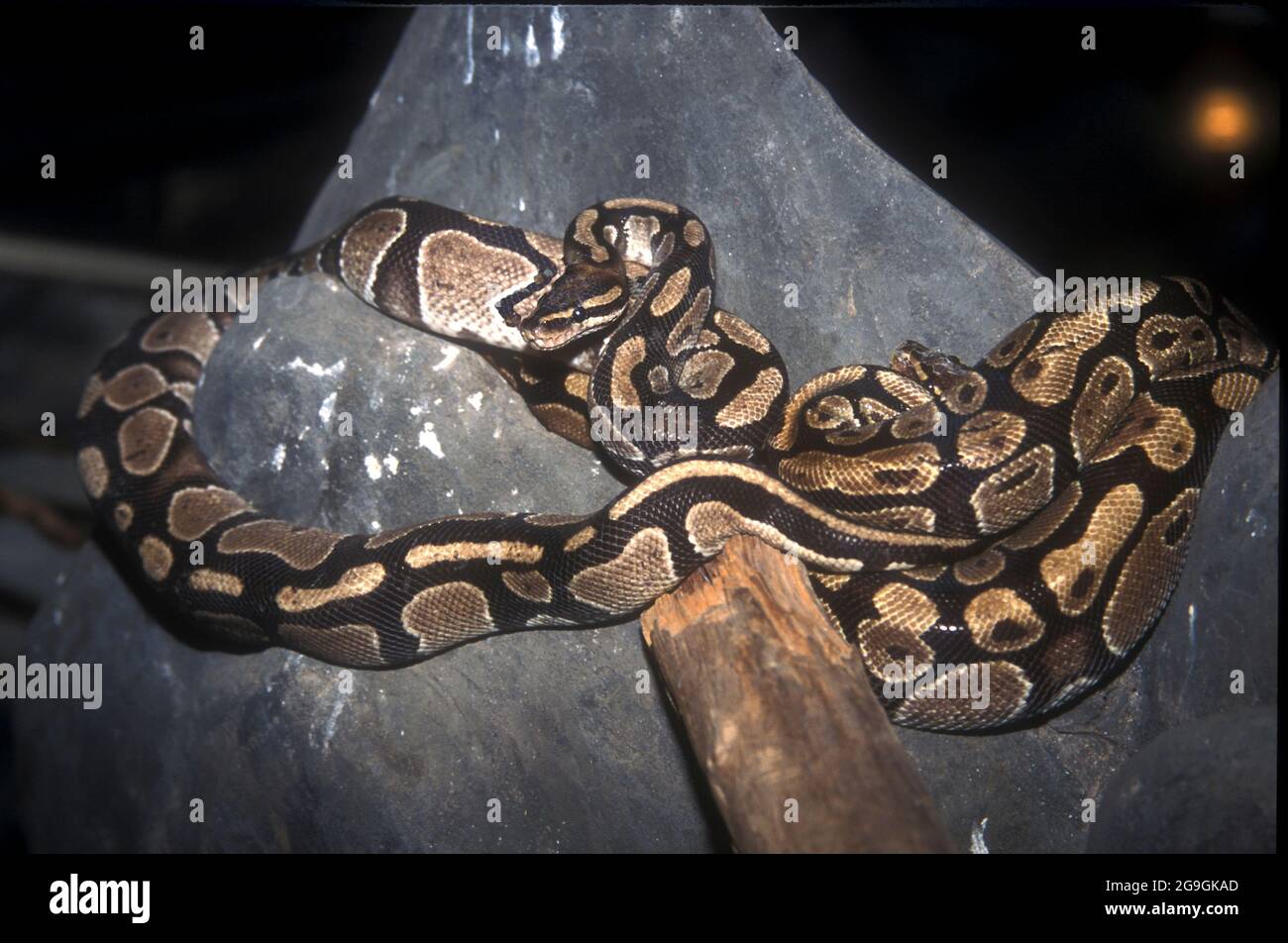 The ball python (Python regius), also called the royal python, is a python species native to West and Central Africa, where it lives in grasslands, sh Stock Photohttps://www.alamy.com/image-license-details/?v=1https://www.alamy.com/the-ball-python-python-regius-also-called-the-royal-python-is-a-python-species-native-to-west-and-central-africa-where-it-lives-in-grasslands-sh-image436157525.html
The ball python (Python regius), also called the royal python, is a python species native to West and Central Africa, where it lives in grasslands, sh Stock Photohttps://www.alamy.com/image-license-details/?v=1https://www.alamy.com/the-ball-python-python-regius-also-called-the-royal-python-is-a-python-species-native-to-west-and-central-africa-where-it-lives-in-grasslands-sh-image436157525.htmlRF2G9GKAD–The ball python (Python regius), also called the royal python, is a python species native to West and Central Africa, where it lives in grasslands, sh
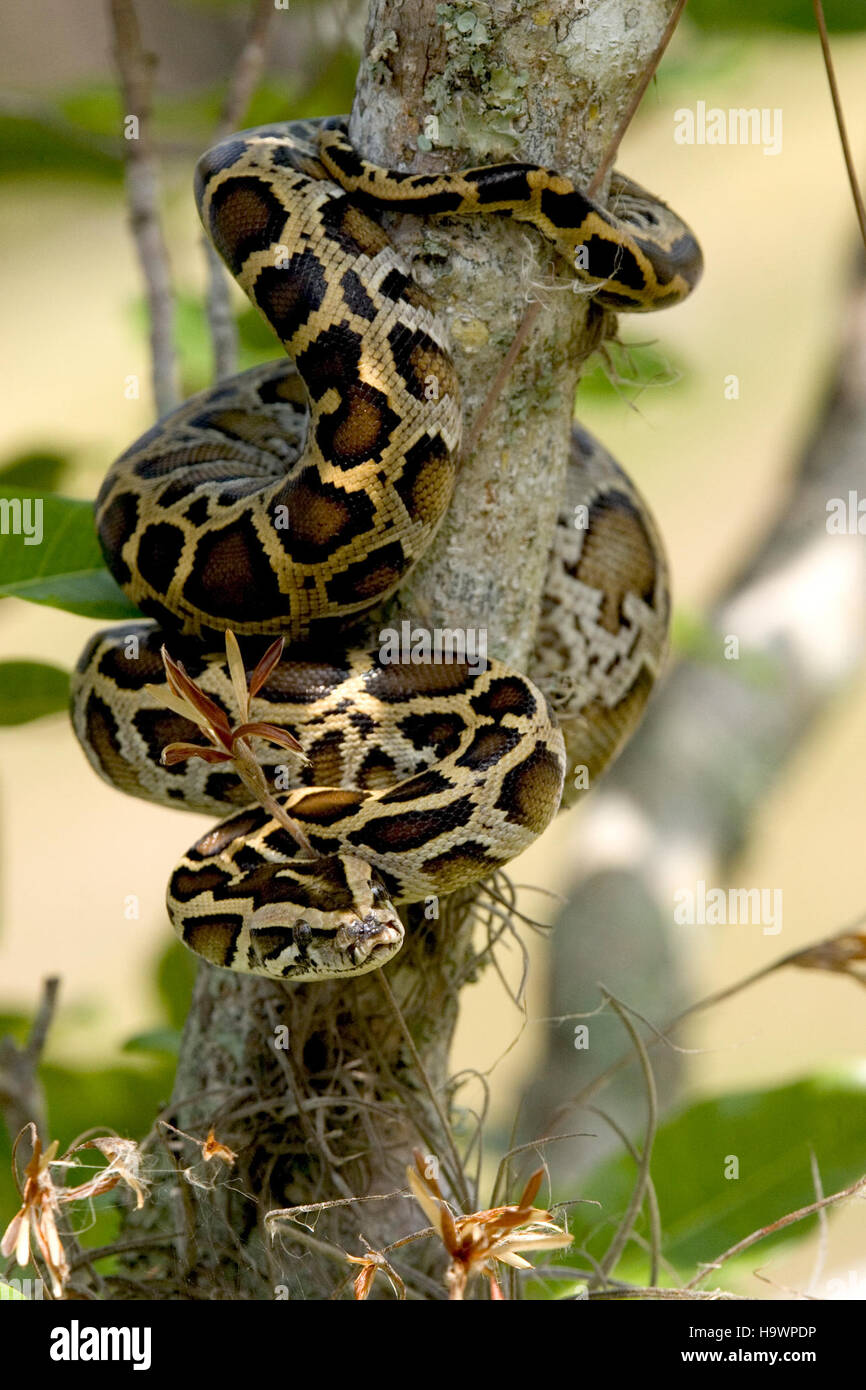 A Burmese Python, an invasive species, is photographed in Everglades National Park. The park works to control its population to protect native wildlife and preserve the ecosystem. Stock Photohttps://www.alamy.com/image-license-details/?v=1https://www.alamy.com/stock-photo-a-burmese-python-an-invasive-species-is-photographed-in-everglades-126570914.html
A Burmese Python, an invasive species, is photographed in Everglades National Park. The park works to control its population to protect native wildlife and preserve the ecosystem. Stock Photohttps://www.alamy.com/image-license-details/?v=1https://www.alamy.com/stock-photo-a-burmese-python-an-invasive-species-is-photographed-in-everglades-126570914.htmlRMH9WPDP–A Burmese Python, an invasive species, is photographed in Everglades National Park. The park works to control its population to protect native wildlife and preserve the ecosystem.
 A Burmese python battles an American alligator in the Everglades National Park December 23, 2005 near Homestead, Florida. The python is an invasive species introduced by accident and now competing directly with the top predators in the Everglades ecosystem. Stock Photohttps://www.alamy.com/image-license-details/?v=1https://www.alamy.com/stock-photo-a-burmese-python-battles-an-american-alligator-in-the-everglades-national-88998580.html
A Burmese python battles an American alligator in the Everglades National Park December 23, 2005 near Homestead, Florida. The python is an invasive species introduced by accident and now competing directly with the top predators in the Everglades ecosystem. Stock Photohttps://www.alamy.com/image-license-details/?v=1https://www.alamy.com/stock-photo-a-burmese-python-battles-an-american-alligator-in-the-everglades-national-88998580.htmlRMF4P6GM–A Burmese python battles an American alligator in the Everglades National Park December 23, 2005 near Homestead, Florida. The python is an invasive species introduced by accident and now competing directly with the top predators in the Everglades ecosystem.
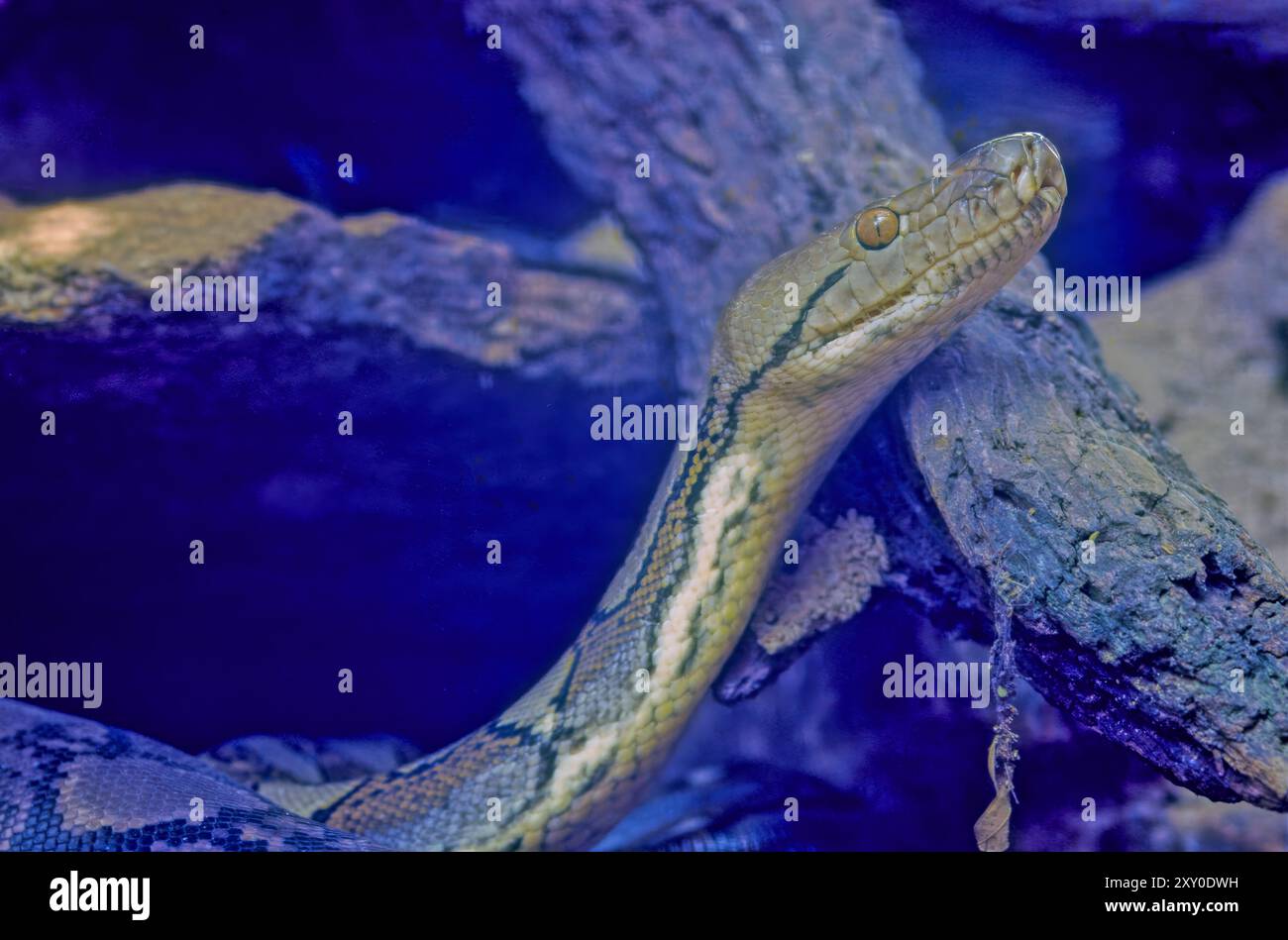 The reticulated python (Malayopython reticulatus) is a python species native to South and Southeast Asia. Stock Photohttps://www.alamy.com/image-license-details/?v=1https://www.alamy.com/the-reticulated-python-malayopython-reticulatus-is-a-python-species-native-to-south-and-southeast-asia-image618969501.html
The reticulated python (Malayopython reticulatus) is a python species native to South and Southeast Asia. Stock Photohttps://www.alamy.com/image-license-details/?v=1https://www.alamy.com/the-reticulated-python-malayopython-reticulatus-is-a-python-species-native-to-south-and-southeast-asia-image618969501.htmlRF2XY0DWH–The reticulated python (Malayopython reticulatus) is a python species native to South and Southeast Asia.
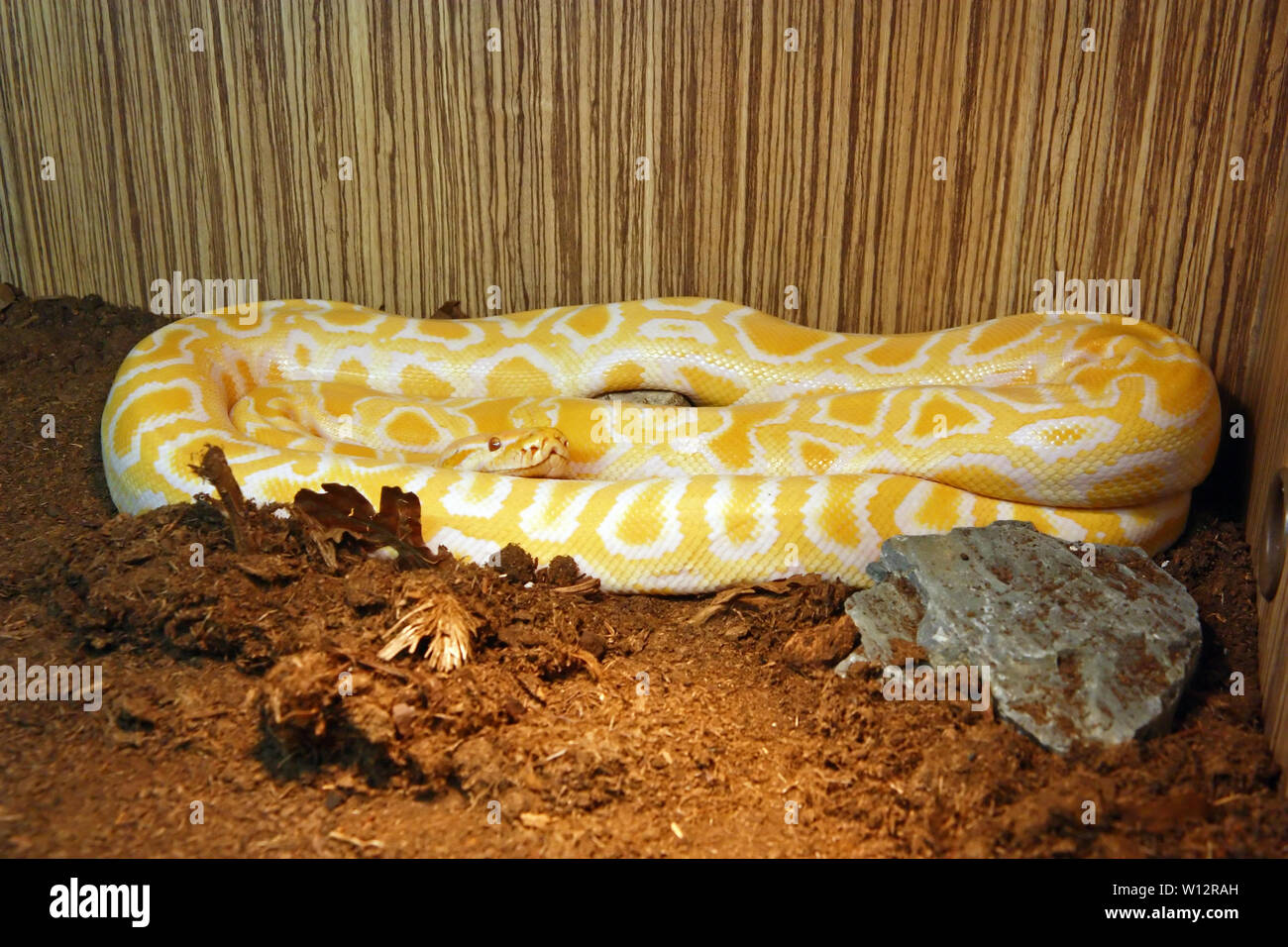 The Burmese python (python bivittatus), is a python species found in tropical South and Southeast Asia Stock Photohttps://www.alamy.com/image-license-details/?v=1https://www.alamy.com/the-burmese-python-python-bivittatus-is-a-python-species-found-in-tropical-south-and-southeast-asia-image258832409.html
The Burmese python (python bivittatus), is a python species found in tropical South and Southeast Asia Stock Photohttps://www.alamy.com/image-license-details/?v=1https://www.alamy.com/the-burmese-python-python-bivittatus-is-a-python-species-found-in-tropical-south-and-southeast-asia-image258832409.htmlRFW12RAH–The Burmese python (python bivittatus), is a python species found in tropical South and Southeast Asia
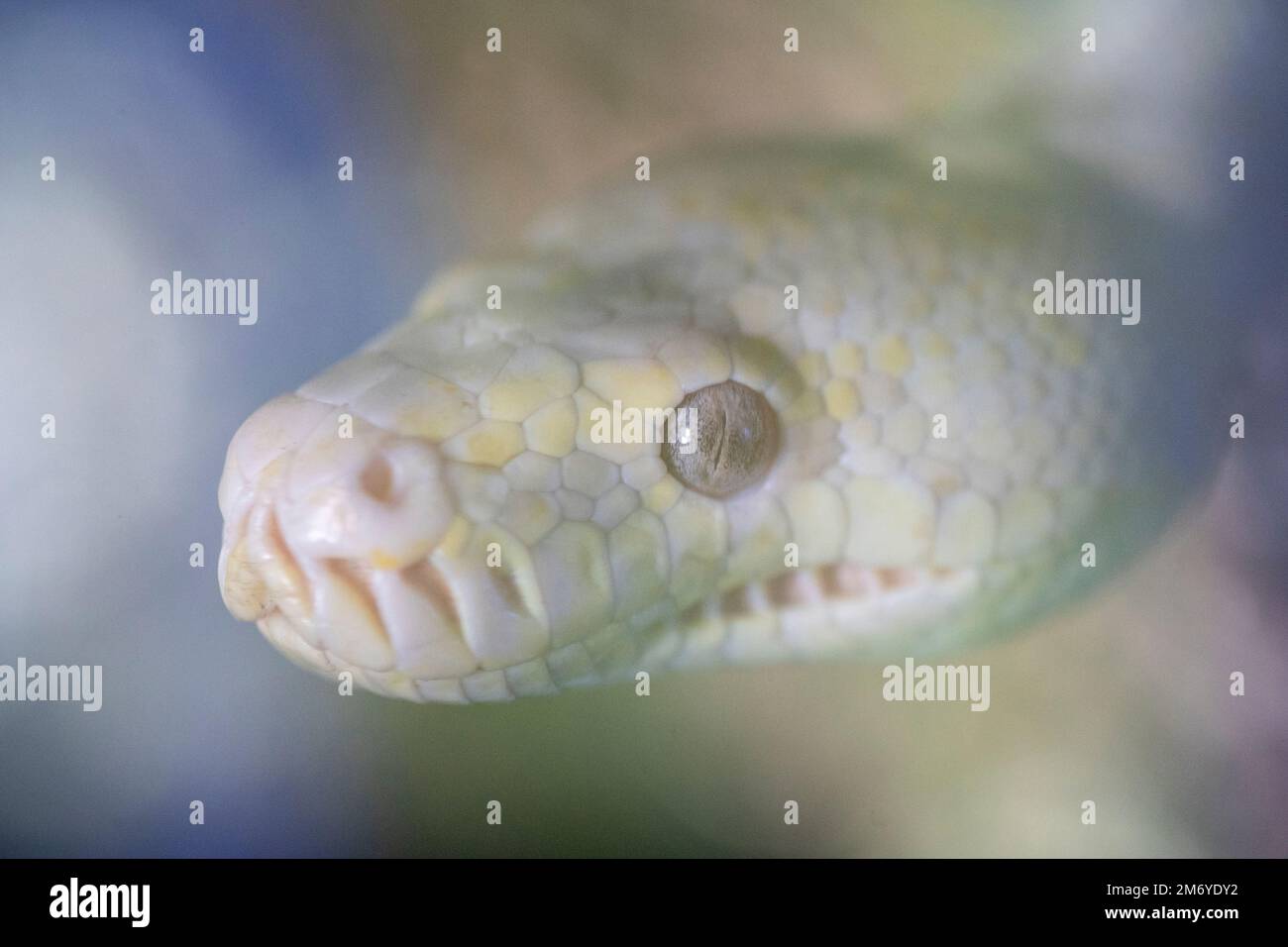 Close up portrait of head of Albino Darwin Carpet Python (Morelia spilota variegata) Stock Photohttps://www.alamy.com/image-license-details/?v=1https://www.alamy.com/close-up-portrait-of-head-of-albino-darwin-carpet-python-morelia-spilota-variegata-image503392262.html
Close up portrait of head of Albino Darwin Carpet Python (Morelia spilota variegata) Stock Photohttps://www.alamy.com/image-license-details/?v=1https://www.alamy.com/close-up-portrait-of-head-of-albino-darwin-carpet-python-morelia-spilota-variegata-image503392262.htmlRF2M6YDY2–Close up portrait of head of Albino Darwin Carpet Python (Morelia spilota variegata)
 Burmese python, Indian python (Python molurus, Python molurus molurus ), medical care at a protected snake species, Sri Lanka, Sinharaja Forest National Park Stock Photohttps://www.alamy.com/image-license-details/?v=1https://www.alamy.com/stock-photo-burmese-python-indian-python-python-molurus-python-molurus-molurus-76012353.html
Burmese python, Indian python (Python molurus, Python molurus molurus ), medical care at a protected snake species, Sri Lanka, Sinharaja Forest National Park Stock Photohttps://www.alamy.com/image-license-details/?v=1https://www.alamy.com/stock-photo-burmese-python-indian-python-python-molurus-python-molurus-molurus-76012353.htmlRMEBJJEW–Burmese python, Indian python (Python molurus, Python molurus molurus ), medical care at a protected snake species, Sri Lanka, Sinharaja Forest National Park
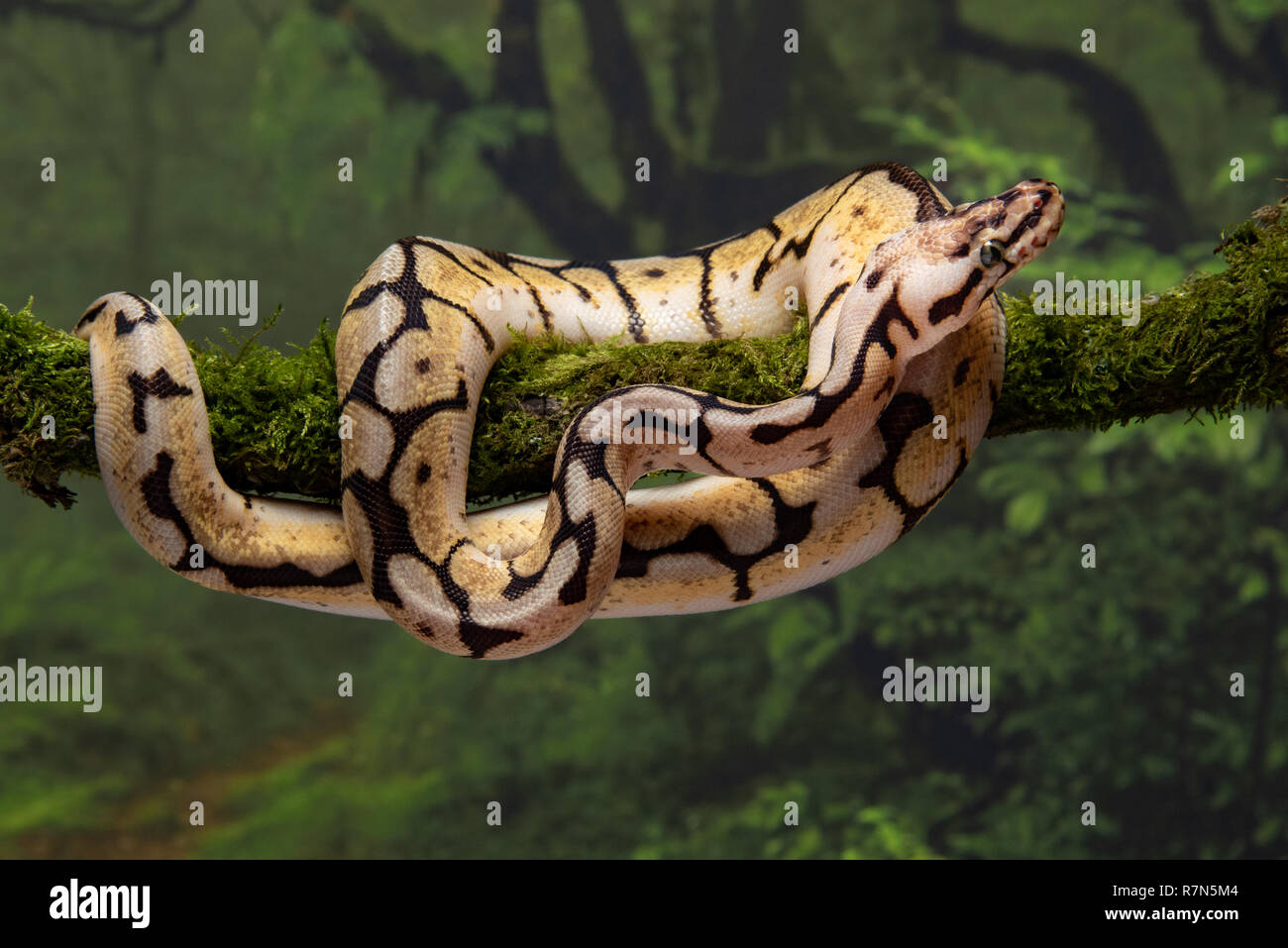 Close up of a bumble bee royal python coiled around a lichen covered branch Stock Photohttps://www.alamy.com/image-license-details/?v=1https://www.alamy.com/close-up-of-a-bumble-bee-royal-python-coiled-around-a-lichen-covered-branch-image228502852.html
Close up of a bumble bee royal python coiled around a lichen covered branch Stock Photohttps://www.alamy.com/image-license-details/?v=1https://www.alamy.com/close-up-of-a-bumble-bee-royal-python-coiled-around-a-lichen-covered-branch-image228502852.htmlRFR7N5M4–Close up of a bumble bee royal python coiled around a lichen covered branch
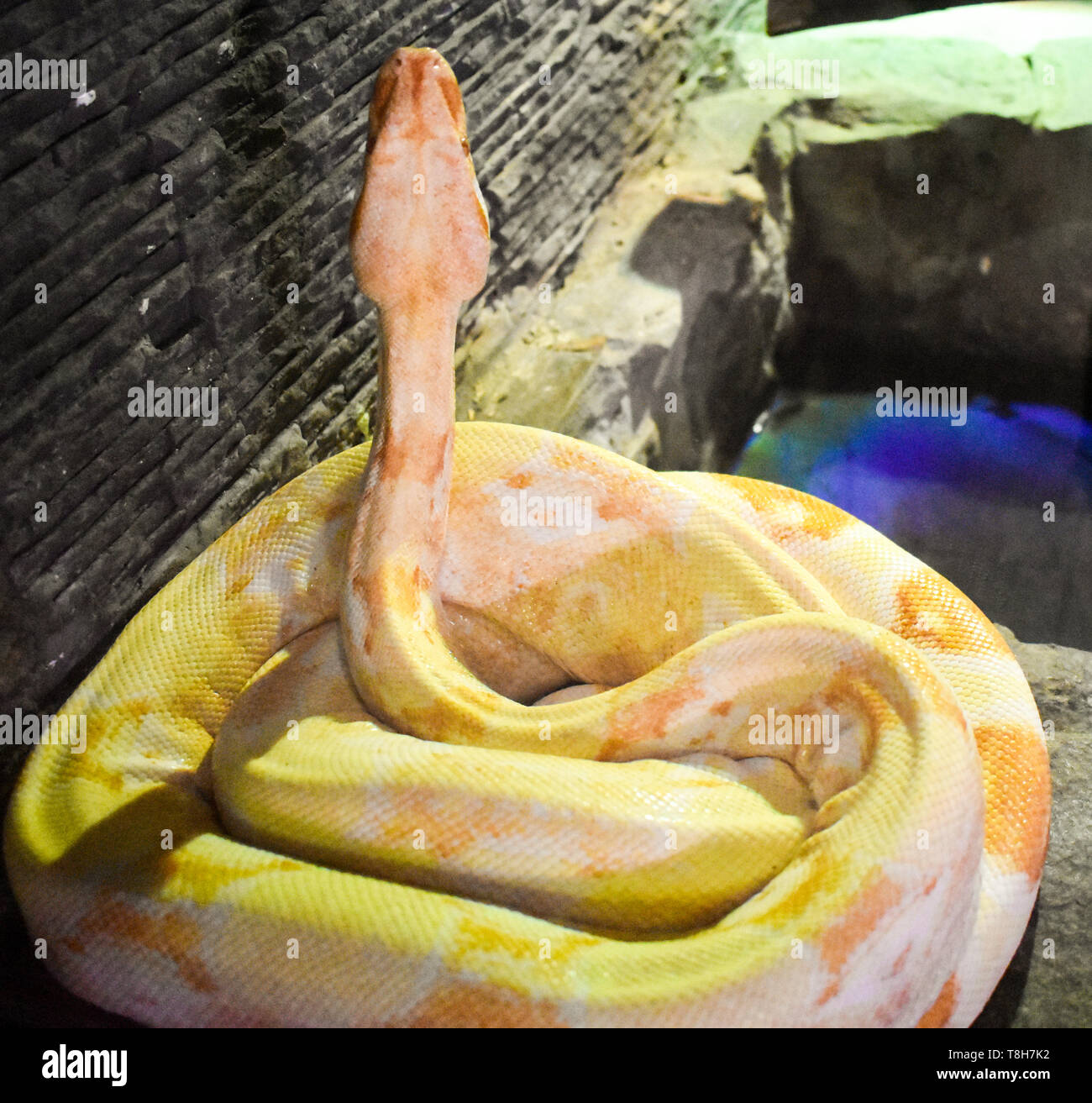 Yellow big snake isolated on white background. The ball python (Python regius), also known as the royal python, is a python species found in sub-Sahar Stock Photohttps://www.alamy.com/image-license-details/?v=1https://www.alamy.com/yellow-big-snake-isolated-on-white-background-the-ball-python-python-regius-also-known-as-the-royal-python-is-a-python-species-found-in-sub-sahar-image246241606.html
Yellow big snake isolated on white background. The ball python (Python regius), also known as the royal python, is a python species found in sub-Sahar Stock Photohttps://www.alamy.com/image-license-details/?v=1https://www.alamy.com/yellow-big-snake-isolated-on-white-background-the-ball-python-python-regius-also-known-as-the-royal-python-is-a-python-species-found-in-sub-sahar-image246241606.htmlRFT8H7K2–Yellow big snake isolated on white background. The ball python (Python regius), also known as the royal python, is a python species found in sub-Sahar
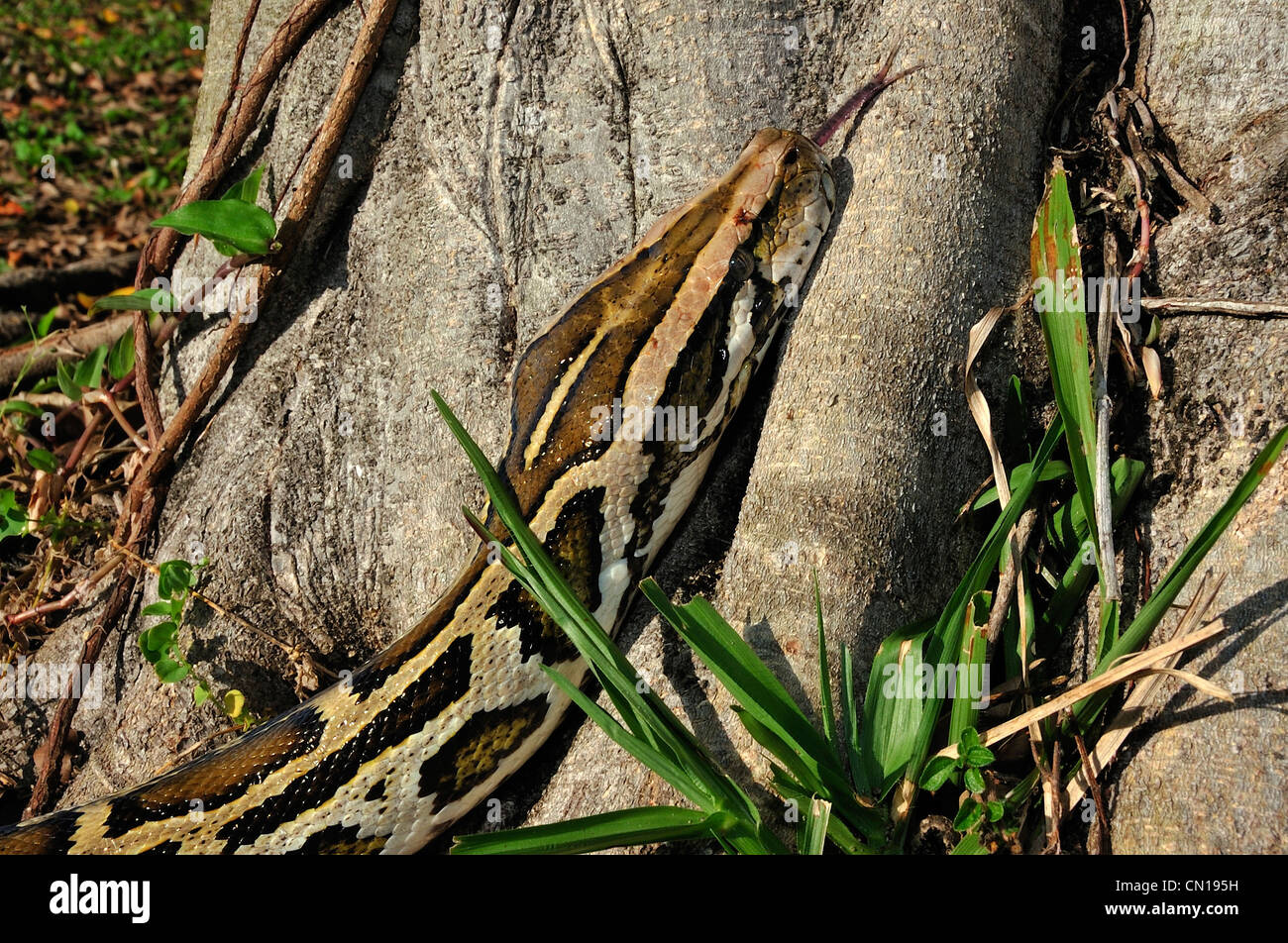 Burmese python, Python molurus bivittatus, Florida Stock Photohttps://www.alamy.com/image-license-details/?v=1https://www.alamy.com/stock-photo-burmese-python-python-molurus-bivittatus-florida-47357677.html
Burmese python, Python molurus bivittatus, Florida Stock Photohttps://www.alamy.com/image-license-details/?v=1https://www.alamy.com/stock-photo-burmese-python-python-molurus-bivittatus-florida-47357677.htmlRMCN195H–Burmese python, Python molurus bivittatus, Florida
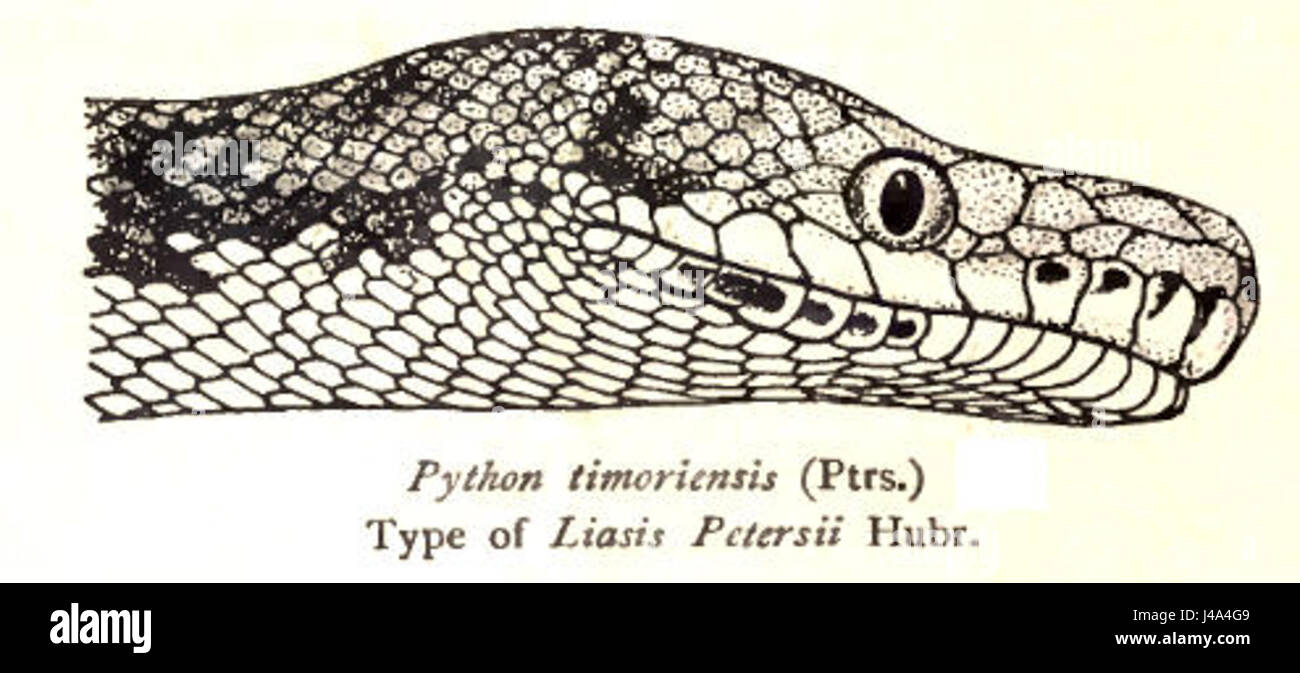 Python Timoriensis, commonly known as the Timor python, is a species of snake native to the island of Timor. It is known for its distinct coloration and is part of the diverse reptilian fauna found in the region. Stock Photohttps://www.alamy.com/image-license-details/?v=1https://www.alamy.com/stock-photo-python-timoriensis-commonly-known-as-the-timor-python-is-a-species-140364681.html
Python Timoriensis, commonly known as the Timor python, is a species of snake native to the island of Timor. It is known for its distinct coloration and is part of the diverse reptilian fauna found in the region. Stock Photohttps://www.alamy.com/image-license-details/?v=1https://www.alamy.com/stock-photo-python-timoriensis-commonly-known-as-the-timor-python-is-a-species-140364681.htmlRMJ4A4G9–Python Timoriensis, commonly known as the Timor python, is a species of snake native to the island of Timor. It is known for its distinct coloration and is part of the diverse reptilian fauna found in the region.
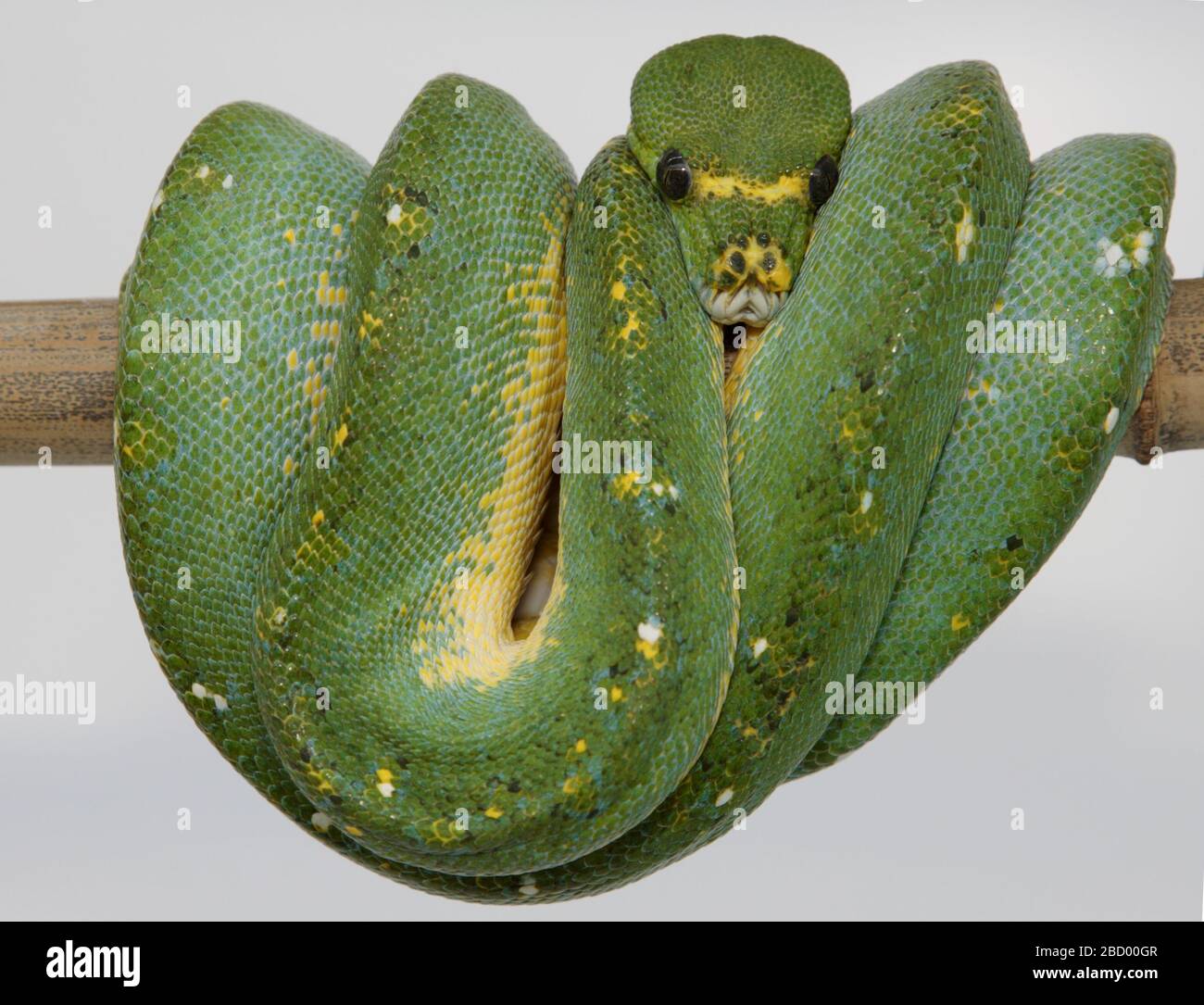 Green Tree Python. Species: viridis,Genus: Morelia,Family: Boidae,Order: Squamata,Class: Reptilia,Phylum: Chordata,Kingdom: Animalia,Reptile,Snake,adult,male Green Tree Python Stock Photohttps://www.alamy.com/image-license-details/?v=1https://www.alamy.com/green-tree-python-species-viridisgenus-moreliafamily-boidaeorder-squamataclass-reptiliaphylum-chordatakingdom-animaliareptilesnakeadultmale-green-tree-python-image352198359.html
Green Tree Python. Species: viridis,Genus: Morelia,Family: Boidae,Order: Squamata,Class: Reptilia,Phylum: Chordata,Kingdom: Animalia,Reptile,Snake,adult,male Green Tree Python Stock Photohttps://www.alamy.com/image-license-details/?v=1https://www.alamy.com/green-tree-python-species-viridisgenus-moreliafamily-boidaeorder-squamataclass-reptiliaphylum-chordatakingdom-animaliareptilesnakeadultmale-green-tree-python-image352198359.htmlRM2BD00GR–Green Tree Python. Species: viridis,Genus: Morelia,Family: Boidae,Order: Squamata,Class: Reptilia,Phylum: Chordata,Kingdom: Animalia,Reptile,Snake,adult,male Green Tree Python
 Python bivittatus, Print, The Burmese python (Python bivittatus) is one of the five largest species of snakes in the world (about the fourth-largest as measured either by length or weight). It is native to a large area of tropical South and Southeast Asia. Until 2009, it was considered a subspecies of Python molurus, but now is recognized as belonging to a distinct species., skull Stock Photohttps://www.alamy.com/image-license-details/?v=1https://www.alamy.com/python-bivittatus-print-the-burmese-python-python-bivittatus-is-one-of-the-five-largest-species-of-snakes-in-the-world-about-the-fourth-largest-as-measured-either-by-length-or-weight-it-is-native-to-a-large-area-of-tropical-south-and-southeast-asia-until-2009-it-was-considered-a-subspecies-of-python-molurus-but-now-is-recognized-as-belonging-to-a-distinct-species-skull-image328698881.html
Python bivittatus, Print, The Burmese python (Python bivittatus) is one of the five largest species of snakes in the world (about the fourth-largest as measured either by length or weight). It is native to a large area of tropical South and Southeast Asia. Until 2009, it was considered a subspecies of Python molurus, but now is recognized as belonging to a distinct species., skull Stock Photohttps://www.alamy.com/image-license-details/?v=1https://www.alamy.com/python-bivittatus-print-the-burmese-python-python-bivittatus-is-one-of-the-five-largest-species-of-snakes-in-the-world-about-the-fourth-largest-as-measured-either-by-length-or-weight-it-is-native-to-a-large-area-of-tropical-south-and-southeast-asia-until-2009-it-was-considered-a-subspecies-of-python-molurus-but-now-is-recognized-as-belonging-to-a-distinct-species-skull-image328698881.htmlRM2A2NENN–Python bivittatus, Print, The Burmese python (Python bivittatus) is one of the five largest species of snakes in the world (about the fourth-largest as measured either by length or weight). It is native to a large area of tropical South and Southeast Asia. Until 2009, it was considered a subspecies of Python molurus, but now is recognized as belonging to a distinct species., skull
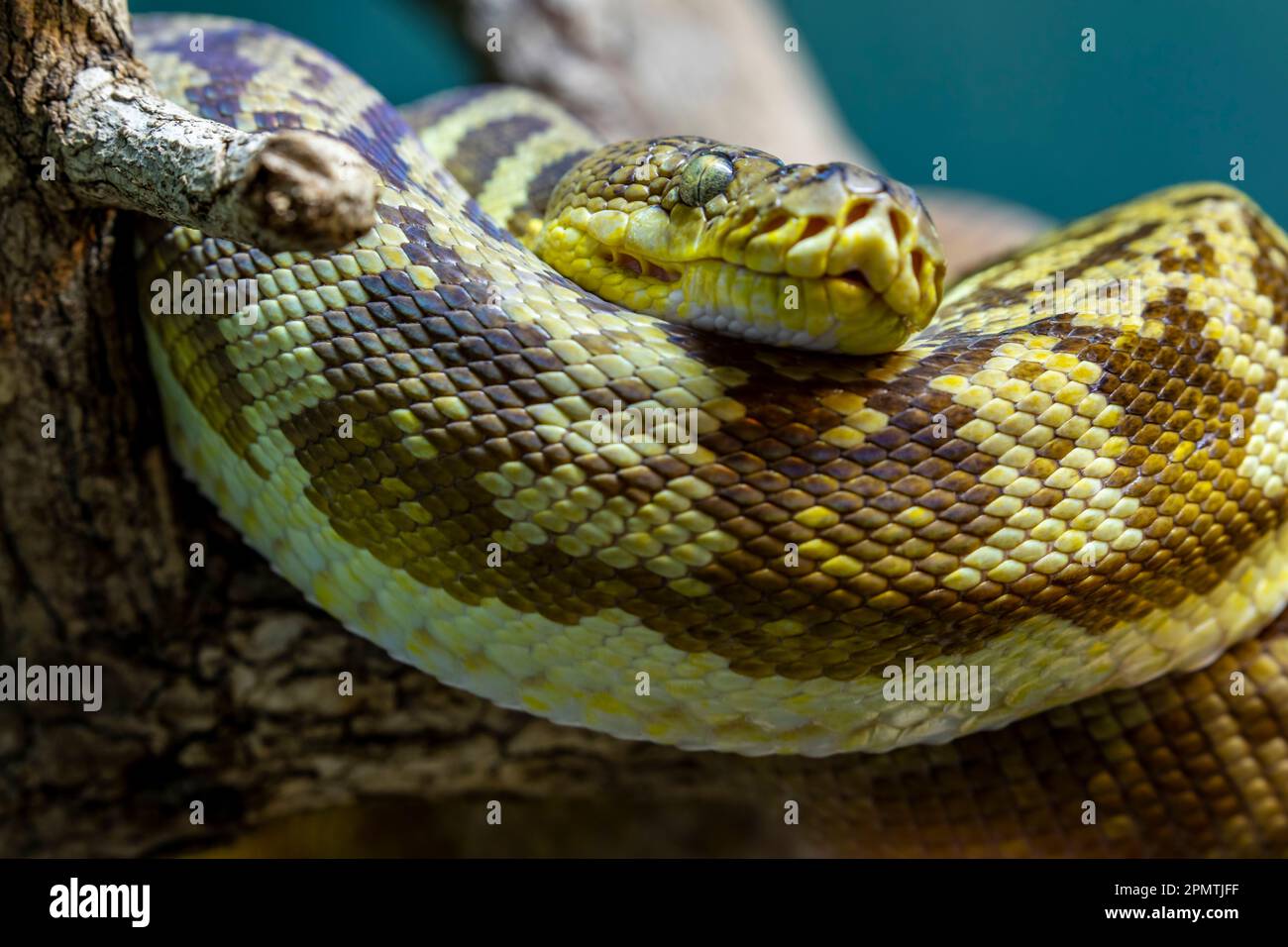 The Timor python (Malayopython timoriensis) is a python species found in Southeast Asia. Like all pythons, it is a nonvenomous constrictor; Stock Photohttps://www.alamy.com/image-license-details/?v=1https://www.alamy.com/the-timor-python-malayopython-timoriensis-is-a-python-species-found-in-southeast-asia-like-all-pythons-it-is-a-nonvenomous-constrictor-image546355923.html
The Timor python (Malayopython timoriensis) is a python species found in Southeast Asia. Like all pythons, it is a nonvenomous constrictor; Stock Photohttps://www.alamy.com/image-license-details/?v=1https://www.alamy.com/the-timor-python-malayopython-timoriensis-is-a-python-species-found-in-southeast-asia-like-all-pythons-it-is-a-nonvenomous-constrictor-image546355923.htmlRF2PMTJFF–The Timor python (Malayopython timoriensis) is a python species found in Southeast Asia. Like all pythons, it is a nonvenomous constrictor;
RMP29Y00–. Python natalensis . between 1700 and 1880 274 Python natalensis - 1700-1880 - Print - Iconographia Zoologica - Special Collections University of Amsterdam - UBA01 IZ11800212
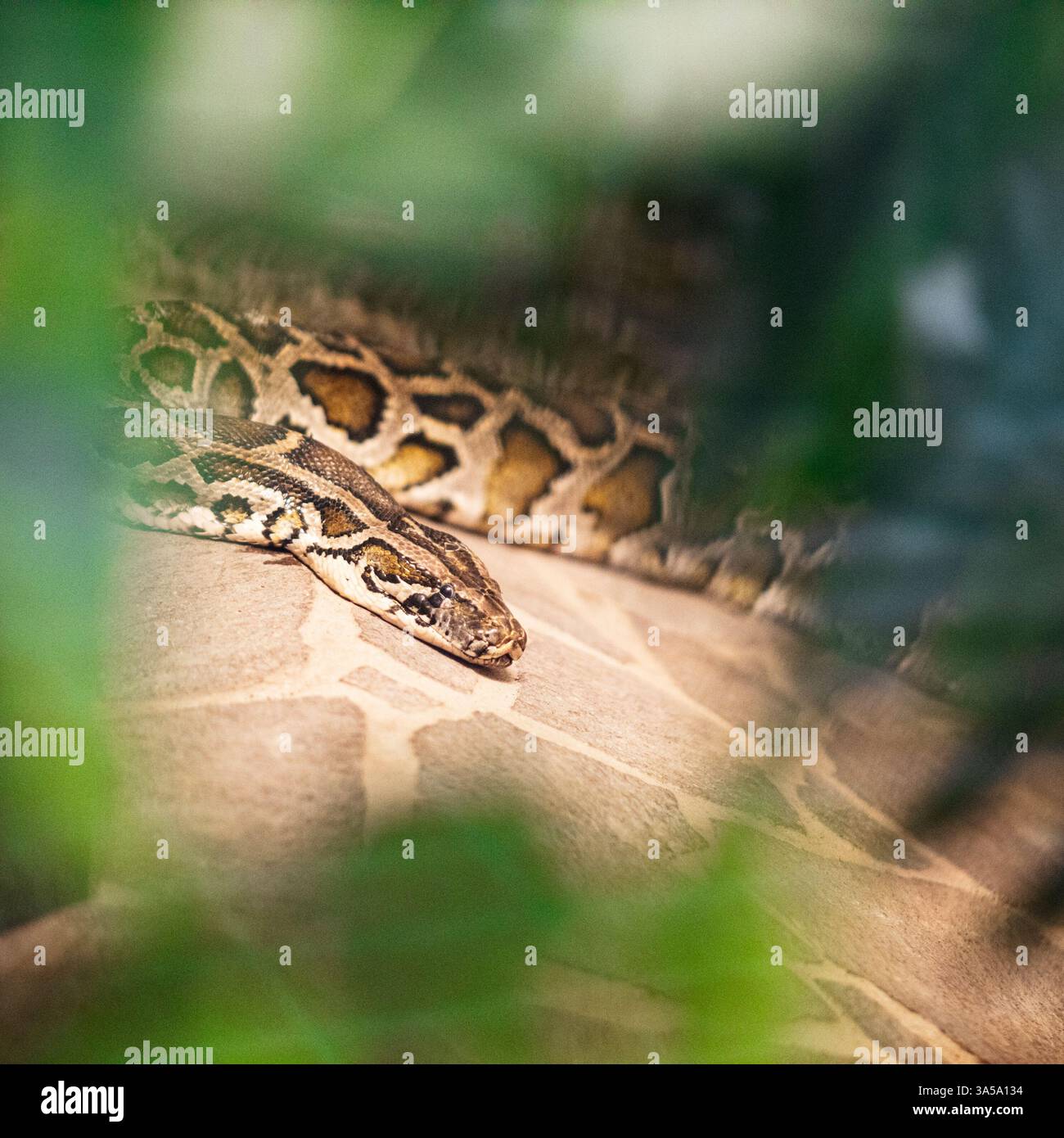 Close up of burmese python (python molurus bivittatus). Stock Photohttps://www.alamy.com/image-license-details/?v=1https://www.alamy.com/close-up-of-burmese-python-python-molurus-bivittatus-image657287656.html
Close up of burmese python (python molurus bivittatus). Stock Photohttps://www.alamy.com/image-license-details/?v=1https://www.alamy.com/close-up-of-burmese-python-python-molurus-bivittatus-image657287656.htmlRF3A5A134–Close up of burmese python (python molurus bivittatus).
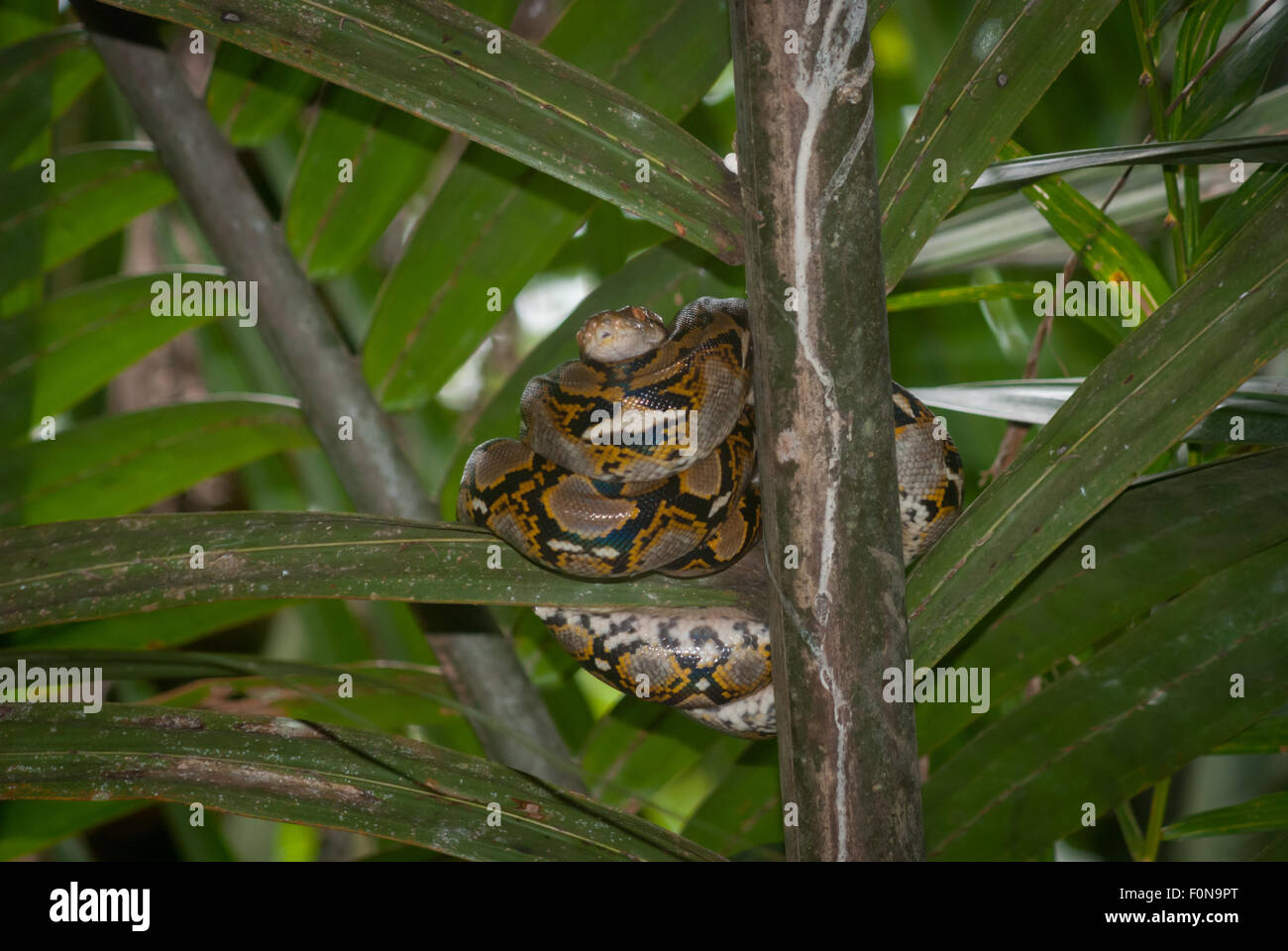 A python, most likely Burmese python (Python bivittatus), resting on a nipa palm on the side of Cigenter river, Ujung Kulon National Park, Indonesia. Stock Photohttps://www.alamy.com/image-license-details/?v=1https://www.alamy.com/stock-photo-a-python-most-likely-burmese-python-python-bivittatus-resting-on-a-86520528.html
A python, most likely Burmese python (Python bivittatus), resting on a nipa palm on the side of Cigenter river, Ujung Kulon National Park, Indonesia. Stock Photohttps://www.alamy.com/image-license-details/?v=1https://www.alamy.com/stock-photo-a-python-most-likely-burmese-python-python-bivittatus-resting-on-a-86520528.htmlRMF0N9PT–A python, most likely Burmese python (Python bivittatus), resting on a nipa palm on the side of Cigenter river, Ujung Kulon National Park, Indonesia.
 A Black-headed python (juvenile) is being weighed during the Annual weigh-in at ZSL London Zoo in London. Stock Photohttps://www.alamy.com/image-license-details/?v=1https://www.alamy.com/a-black-headed-python-juvenile-is-being-weighed-during-the-annual-weigh-in-at-zsl-london-zoo-in-london-image264884314.html
A Black-headed python (juvenile) is being weighed during the Annual weigh-in at ZSL London Zoo in London. Stock Photohttps://www.alamy.com/image-license-details/?v=1https://www.alamy.com/a-black-headed-python-juvenile-is-being-weighed-during-the-annual-weigh-in-at-zsl-london-zoo-in-london-image264884314.htmlRMWAXEJ2–A Black-headed python (juvenile) is being weighed during the Annual weigh-in at ZSL London Zoo in London.
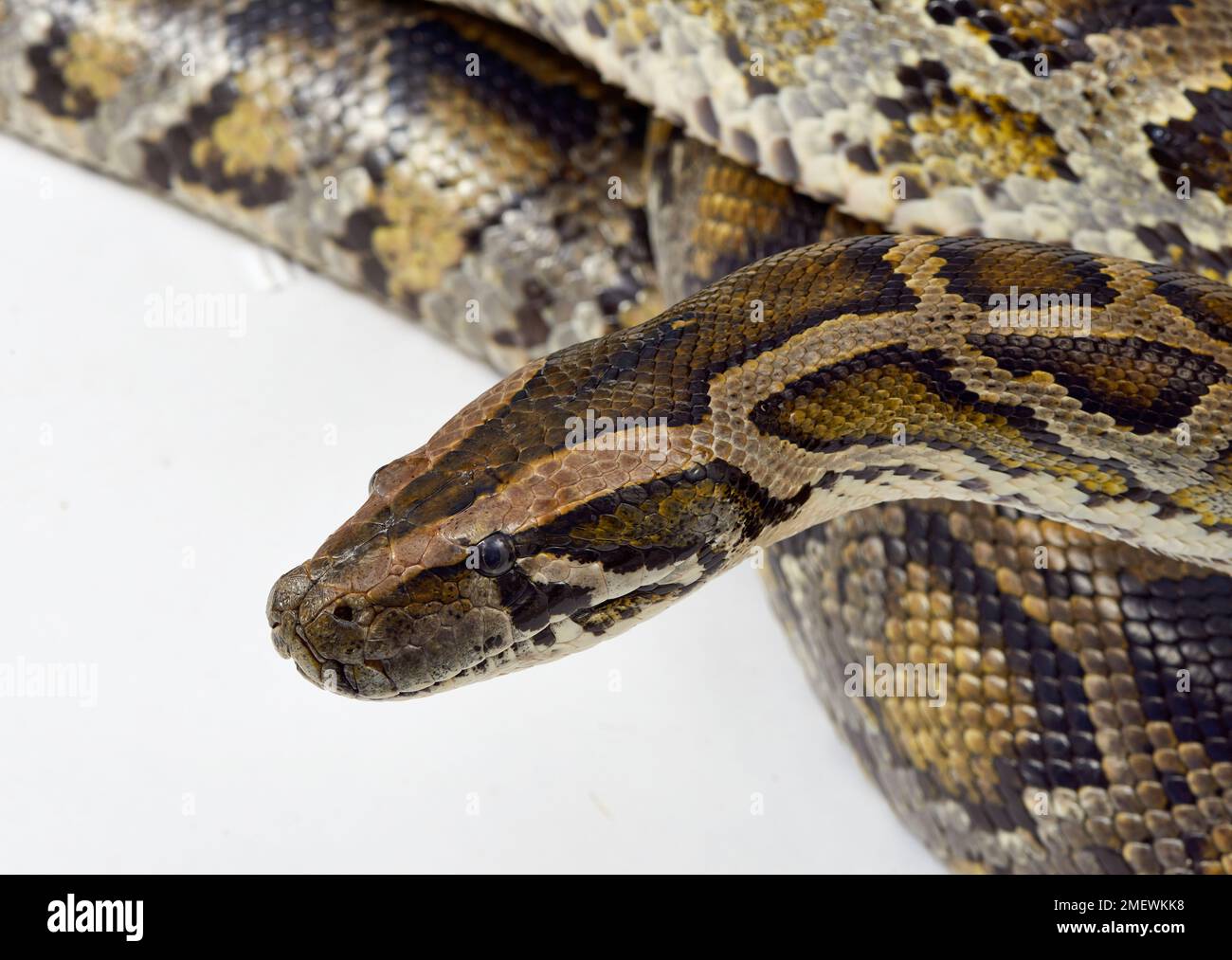 Burmese python (Python bivittatus), captive Stock Photohttps://www.alamy.com/image-license-details/?v=1https://www.alamy.com/burmese-python-python-bivittatus-captive-image508270092.html
Burmese python (Python bivittatus), captive Stock Photohttps://www.alamy.com/image-license-details/?v=1https://www.alamy.com/burmese-python-python-bivittatus-captive-image508270092.htmlRM2MEWKK8–Burmese python (Python bivittatus), captive
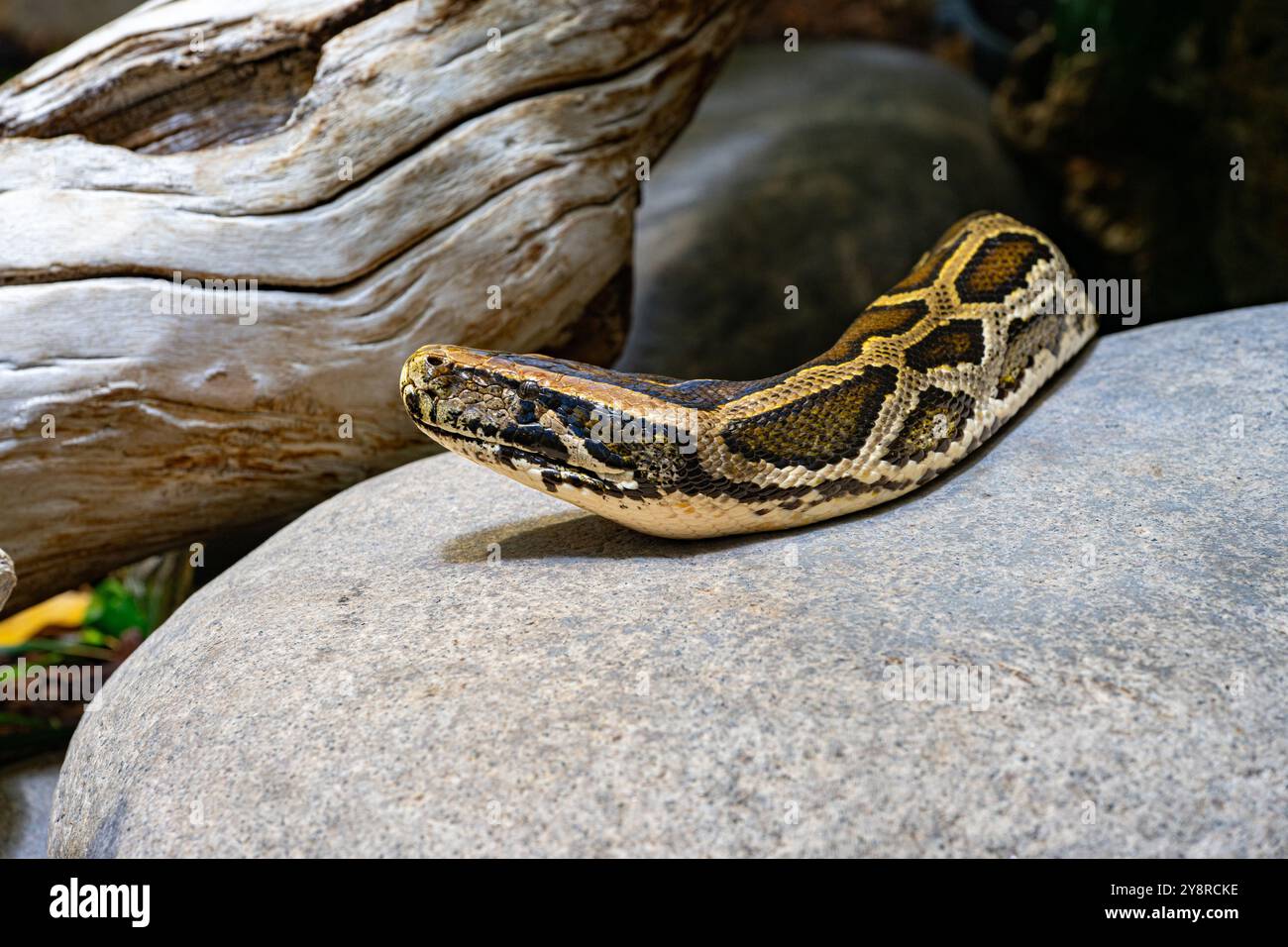 Close up of a burmese python on ground. It is native to a large area of Southeast Asia. Stock Photohttps://www.alamy.com/image-license-details/?v=1https://www.alamy.com/close-up-of-a-burmese-python-on-ground-it-is-native-to-a-large-area-of-southeast-asia-image625005346.html
Close up of a burmese python on ground. It is native to a large area of Southeast Asia. Stock Photohttps://www.alamy.com/image-license-details/?v=1https://www.alamy.com/close-up-of-a-burmese-python-on-ground-it-is-native-to-a-large-area-of-southeast-asia-image625005346.htmlRF2Y8RCKE–Close up of a burmese python on ground. It is native to a large area of Southeast Asia.
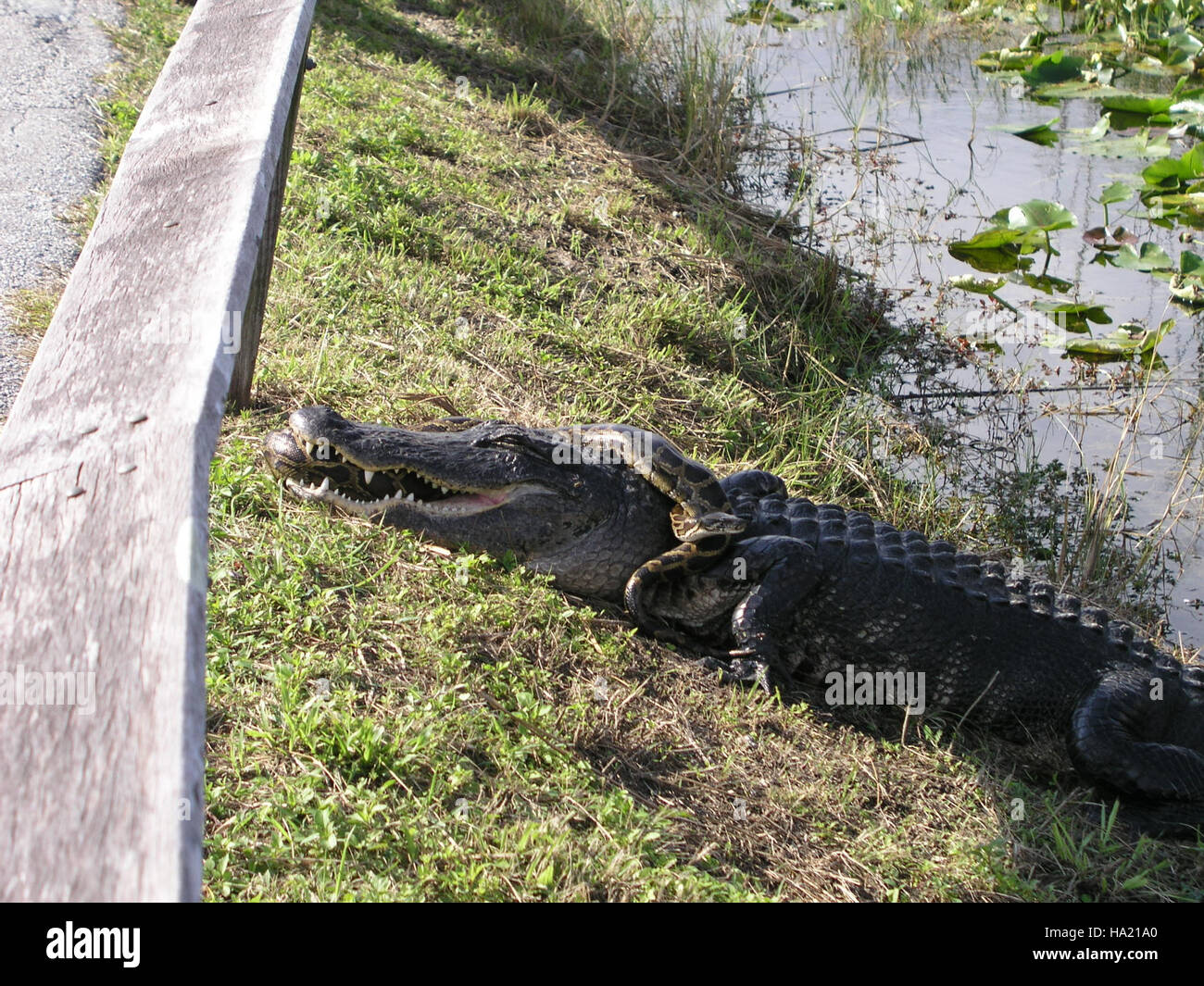 The Everglades National Park captures a dramatic moment in the struggle between an alligator and a python, symbolizing the invasive species challenge in Florida's ecosystems. Stock Photohttps://www.alamy.com/image-license-details/?v=1https://www.alamy.com/stock-photo-the-everglades-national-park-captures-a-dramatic-moment-in-the-struggle-126664104.html
The Everglades National Park captures a dramatic moment in the struggle between an alligator and a python, symbolizing the invasive species challenge in Florida's ecosystems. Stock Photohttps://www.alamy.com/image-license-details/?v=1https://www.alamy.com/stock-photo-the-everglades-national-park-captures-a-dramatic-moment-in-the-struggle-126664104.htmlRMHA21A0–The Everglades National Park captures a dramatic moment in the struggle between an alligator and a python, symbolizing the invasive species challenge in Florida's ecosystems.
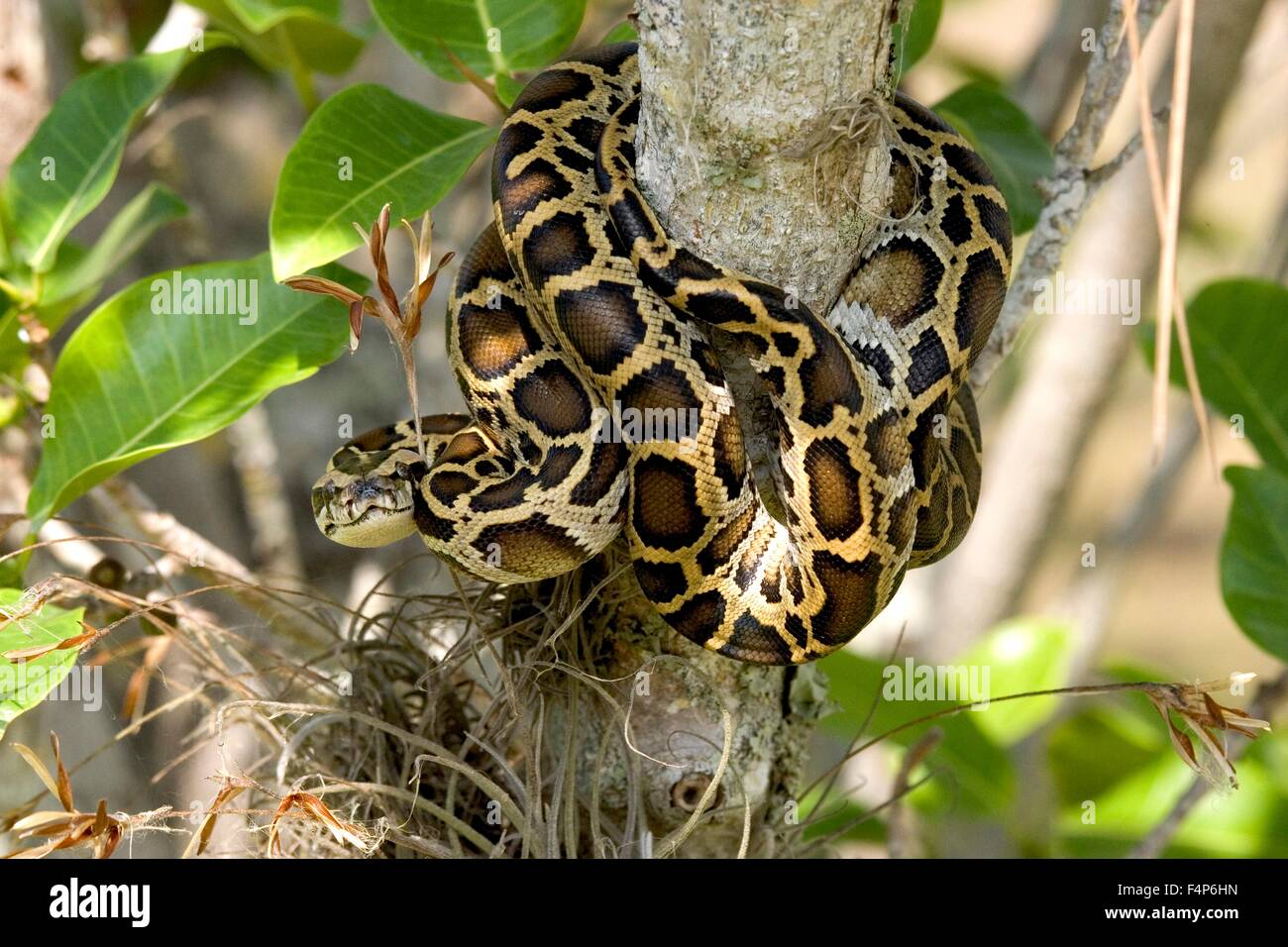 A Burmese python waiting for prey on a tree in the Everglades National Park April 28, 2005 near Homestead, Florida. The python is an invasive species introduced by accident and now competing directly with the top predators in the Everglades ecosystem. Stock Photohttps://www.alamy.com/image-license-details/?v=1https://www.alamy.com/stock-photo-a-burmese-python-waiting-for-prey-on-a-tree-in-the-everglades-national-88998609.html
A Burmese python waiting for prey on a tree in the Everglades National Park April 28, 2005 near Homestead, Florida. The python is an invasive species introduced by accident and now competing directly with the top predators in the Everglades ecosystem. Stock Photohttps://www.alamy.com/image-license-details/?v=1https://www.alamy.com/stock-photo-a-burmese-python-waiting-for-prey-on-a-tree-in-the-everglades-national-88998609.htmlRMF4P6HN–A Burmese python waiting for prey on a tree in the Everglades National Park April 28, 2005 near Homestead, Florida. The python is an invasive species introduced by accident and now competing directly with the top predators in the Everglades ecosystem.
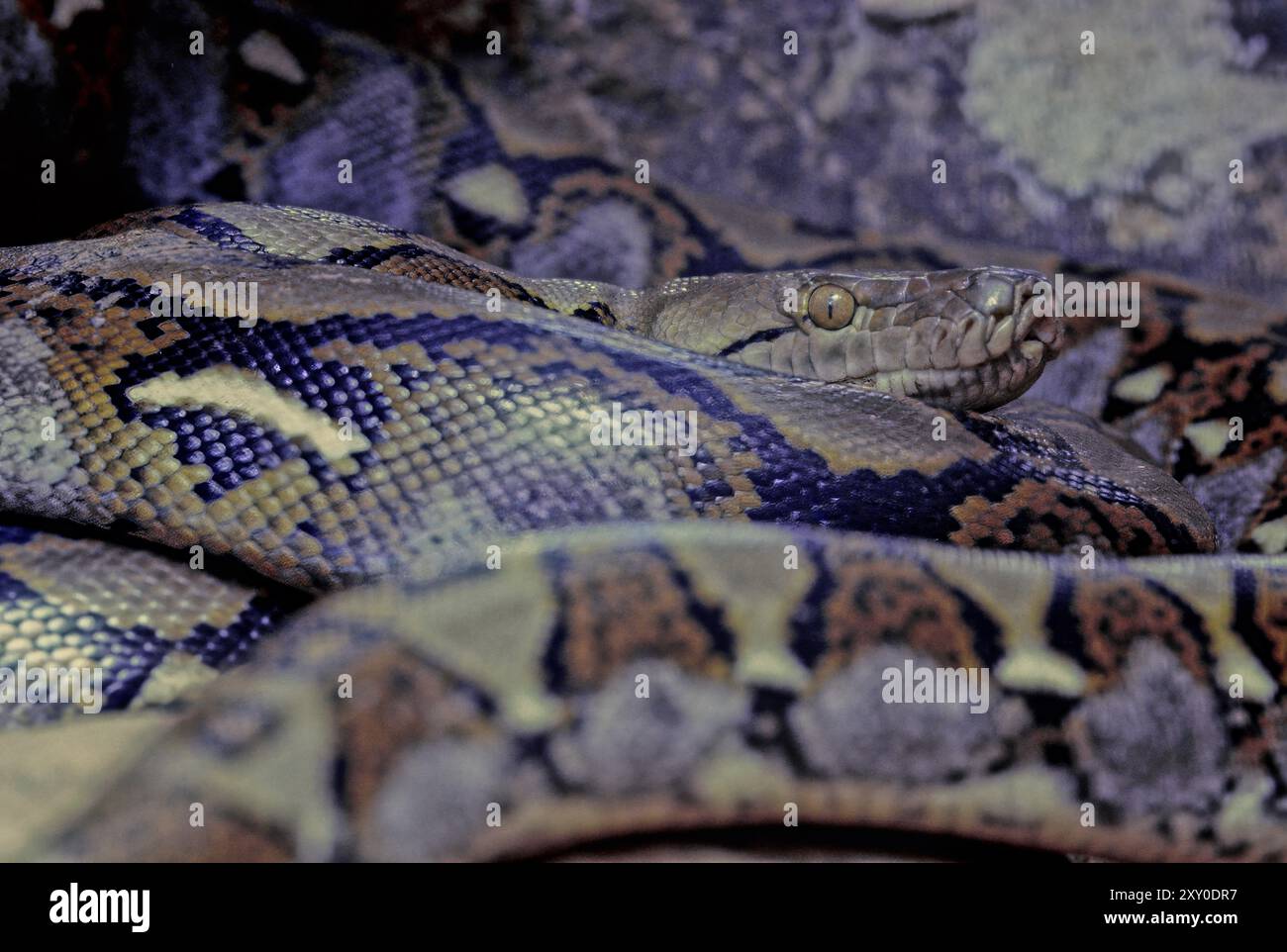 The reticulated python (Malayopython reticulatus) is a python species native to South and Southeast Asia. Stock Photohttps://www.alamy.com/image-license-details/?v=1https://www.alamy.com/the-reticulated-python-malayopython-reticulatus-is-a-python-species-native-to-south-and-southeast-asia-image618969435.html
The reticulated python (Malayopython reticulatus) is a python species native to South and Southeast Asia. Stock Photohttps://www.alamy.com/image-license-details/?v=1https://www.alamy.com/the-reticulated-python-malayopython-reticulatus-is-a-python-species-native-to-south-and-southeast-asia-image618969435.htmlRF2XY0DR7–The reticulated python (Malayopython reticulatus) is a python species native to South and Southeast Asia.
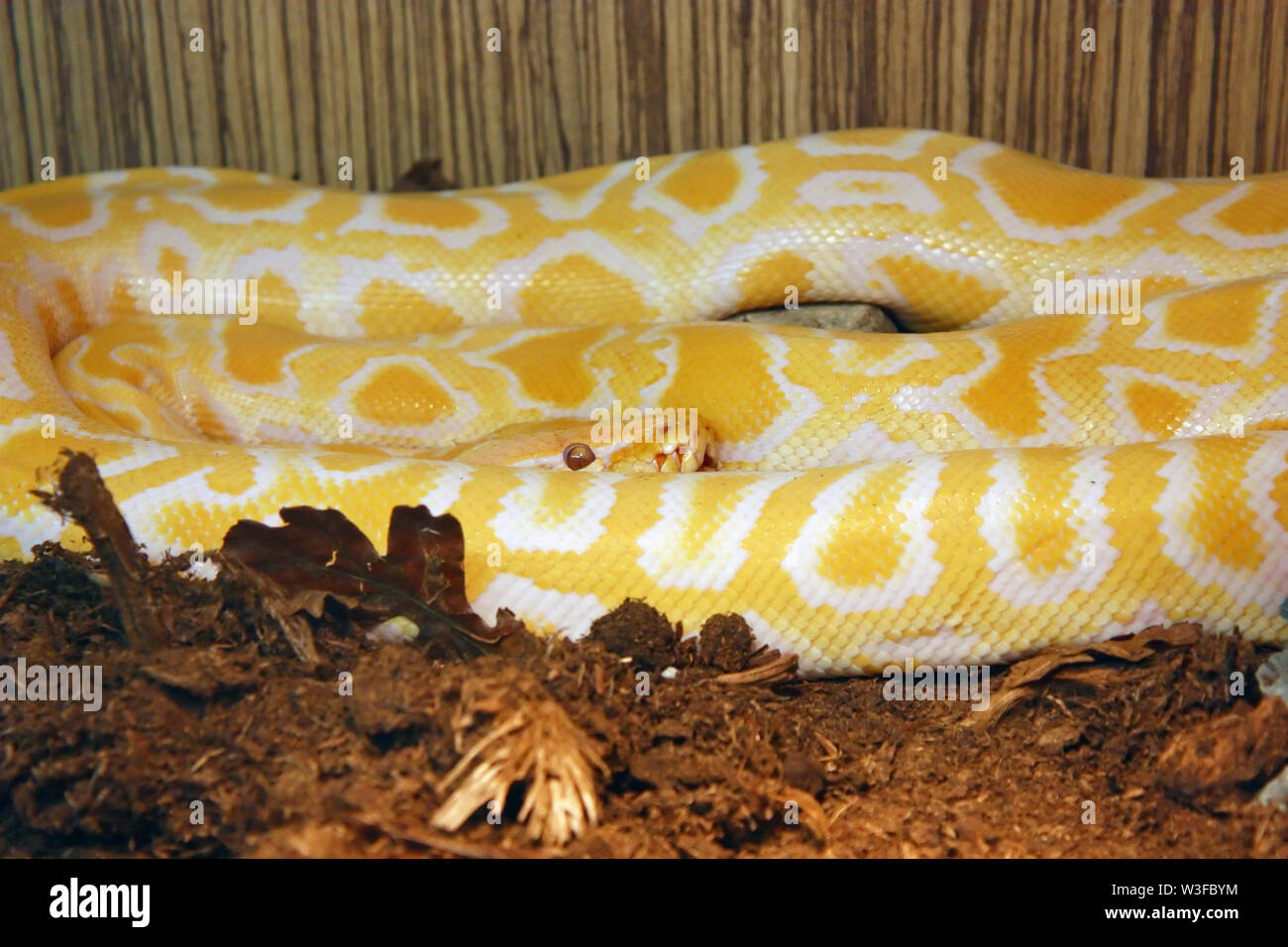 The Burmese python (python bivittatus), is a python species found in tropical South and Southeast Asia Stock Photohttps://www.alamy.com/image-license-details/?v=1https://www.alamy.com/the-burmese-python-python-bivittatus-is-a-python-species-found-in-tropical-south-and-southeast-asia-image260338168.html
The Burmese python (python bivittatus), is a python species found in tropical South and Southeast Asia Stock Photohttps://www.alamy.com/image-license-details/?v=1https://www.alamy.com/the-burmese-python-python-bivittatus-is-a-python-species-found-in-tropical-south-and-southeast-asia-image260338168.htmlRFW3FBYM–The Burmese python (python bivittatus), is a python species found in tropical South and Southeast Asia
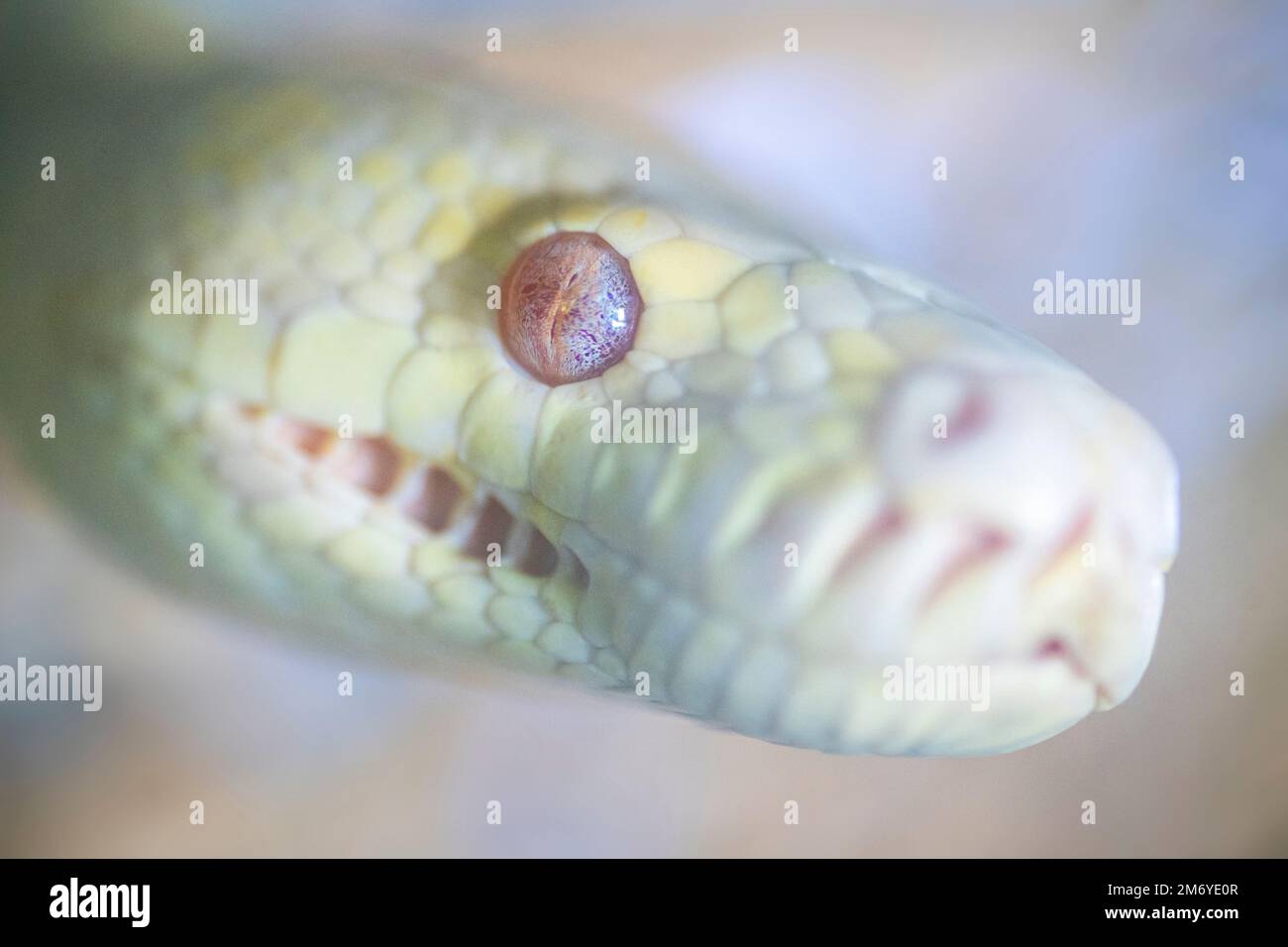 Close up portrait of head of Albino Darwin Carpet Python (Morelia spilota variegata) Stock Photohttps://www.alamy.com/image-license-details/?v=1https://www.alamy.com/close-up-portrait-of-head-of-albino-darwin-carpet-python-morelia-spilota-variegata-image503392311.html
Close up portrait of head of Albino Darwin Carpet Python (Morelia spilota variegata) Stock Photohttps://www.alamy.com/image-license-details/?v=1https://www.alamy.com/close-up-portrait-of-head-of-albino-darwin-carpet-python-morelia-spilota-variegata-image503392311.htmlRF2M6YE0R–Close up portrait of head of Albino Darwin Carpet Python (Morelia spilota variegata)
 Burmese python, Indian python (Python molurus, Python molurus molurus ), medical care at a protected snake species, Sri Lanka, Sinharaja Forest National Park Stock Photohttps://www.alamy.com/image-license-details/?v=1https://www.alamy.com/stock-photo-burmese-python-indian-python-python-molurus-python-molurus-molurus-76012326.html
Burmese python, Indian python (Python molurus, Python molurus molurus ), medical care at a protected snake species, Sri Lanka, Sinharaja Forest National Park Stock Photohttps://www.alamy.com/image-license-details/?v=1https://www.alamy.com/stock-photo-burmese-python-indian-python-python-molurus-python-molurus-molurus-76012326.htmlRMEBJJDX–Burmese python, Indian python (Python molurus, Python molurus molurus ), medical care at a protected snake species, Sri Lanka, Sinharaja Forest National Park
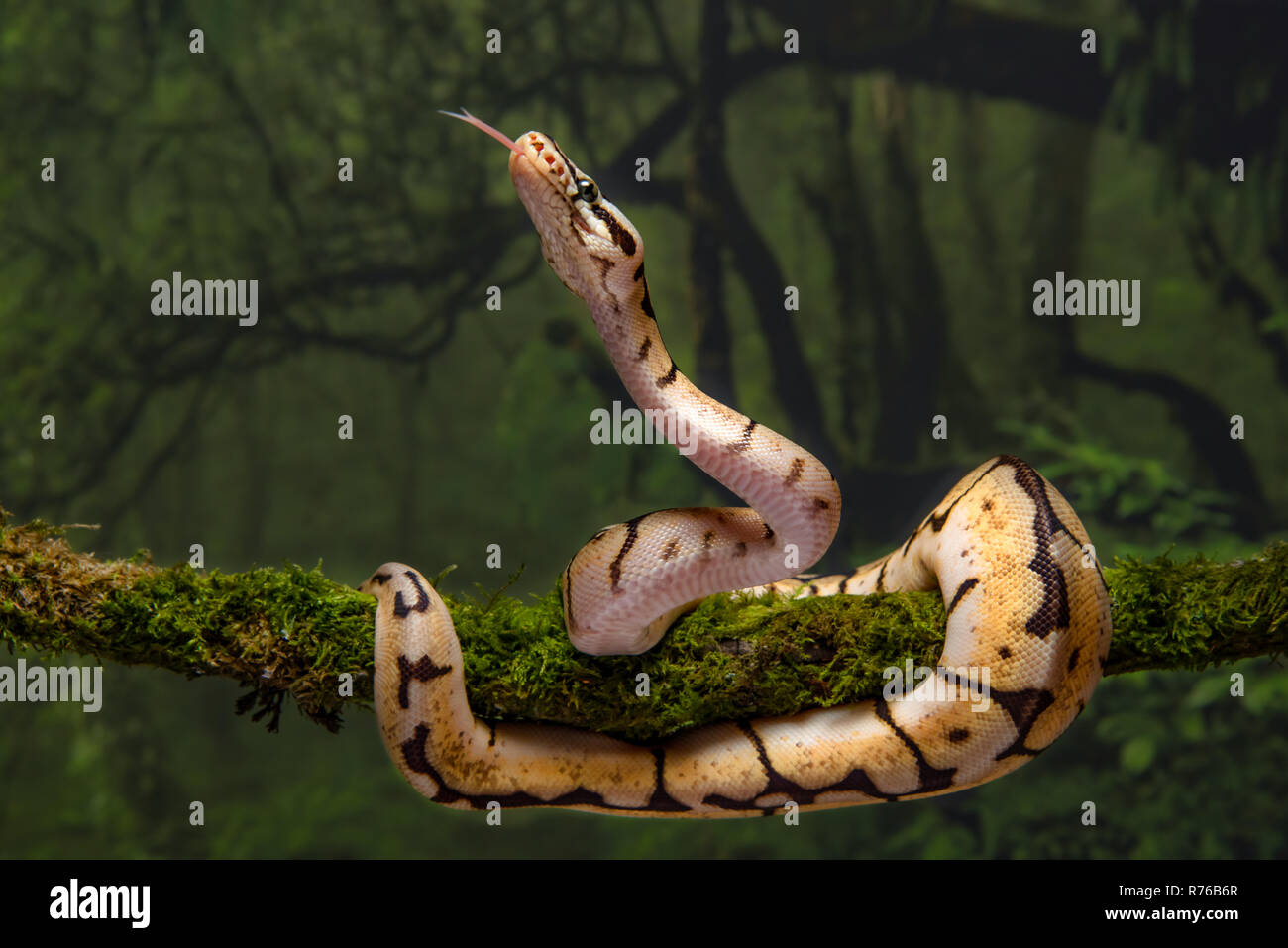 A close up of a baby bumble bee royal python. It is coiled around a tree branch with its head up and tongue out Stock Photohttps://www.alamy.com/image-license-details/?v=1https://www.alamy.com/a-close-up-of-a-baby-bumble-bee-royal-python-it-is-coiled-around-a-tree-branch-with-its-head-up-and-tongue-out-image228177903.html
A close up of a baby bumble bee royal python. It is coiled around a tree branch with its head up and tongue out Stock Photohttps://www.alamy.com/image-license-details/?v=1https://www.alamy.com/a-close-up-of-a-baby-bumble-bee-royal-python-it-is-coiled-around-a-tree-branch-with-its-head-up-and-tongue-out-image228177903.htmlRFR76B6R–A close up of a baby bumble bee royal python. It is coiled around a tree branch with its head up and tongue out
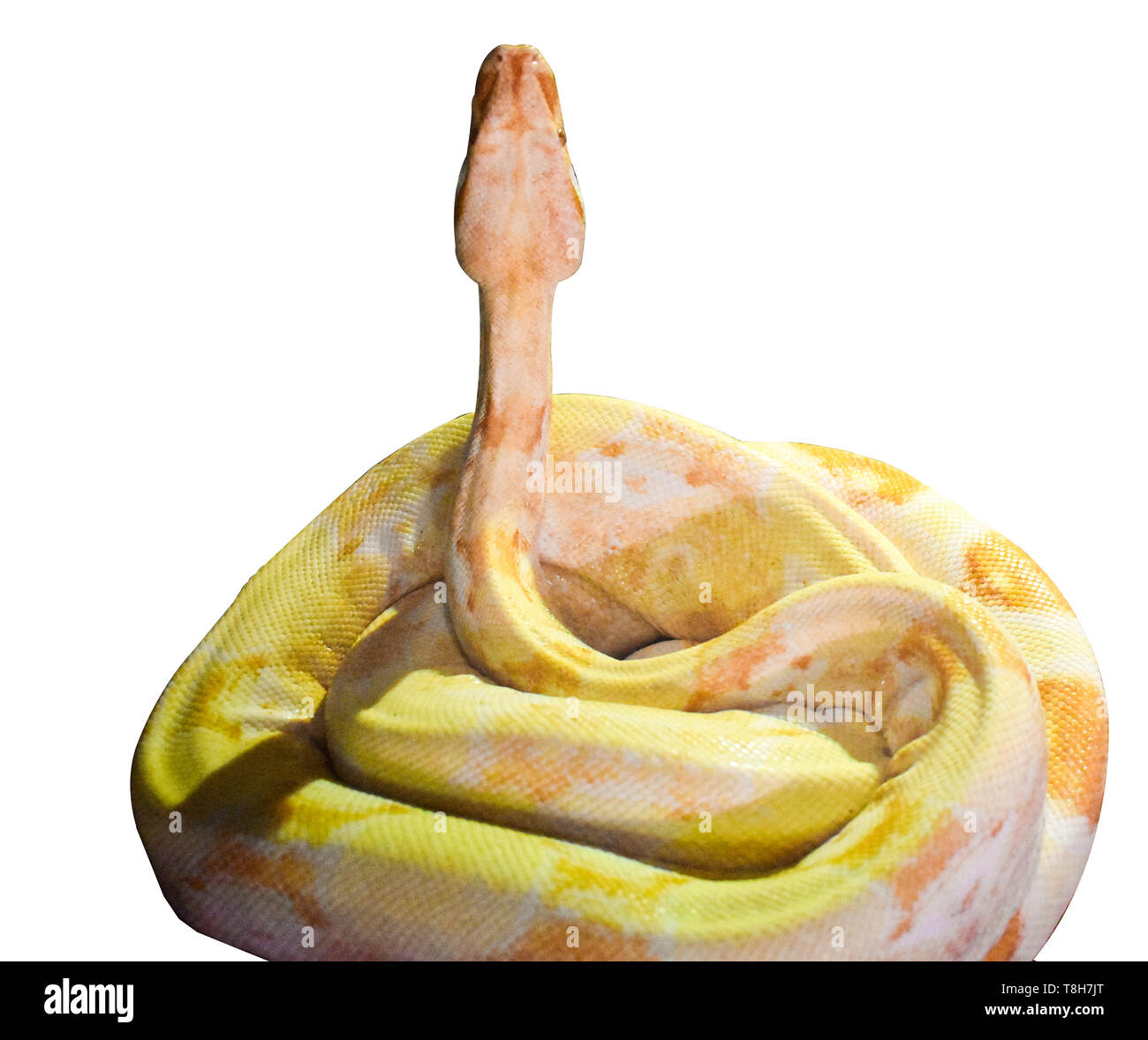 Yellow big snake isolated on white background. The ball python (Python regius), also known as the royal python, is a python species found in sub-Sahar Stock Photohttps://www.alamy.com/image-license-details/?v=1https://www.alamy.com/yellow-big-snake-isolated-on-white-background-the-ball-python-python-regius-also-known-as-the-royal-python-is-a-python-species-found-in-sub-sahar-image246241600.html
Yellow big snake isolated on white background. The ball python (Python regius), also known as the royal python, is a python species found in sub-Sahar Stock Photohttps://www.alamy.com/image-license-details/?v=1https://www.alamy.com/yellow-big-snake-isolated-on-white-background-the-ball-python-python-regius-also-known-as-the-royal-python-is-a-python-species-found-in-sub-sahar-image246241600.htmlRFT8H7JT–Yellow big snake isolated on white background. The ball python (Python regius), also known as the royal python, is a python species found in sub-Sahar
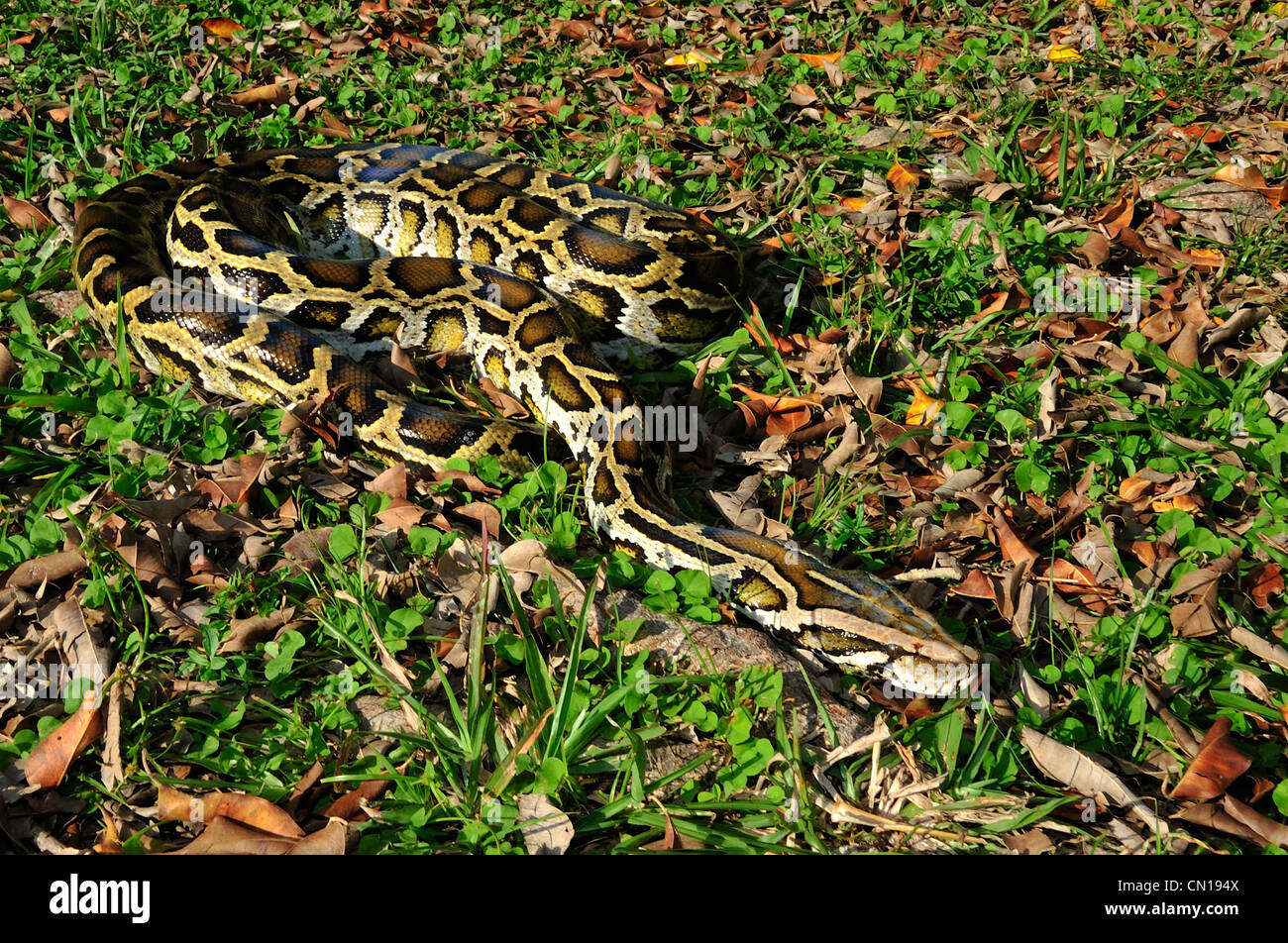 Burmese python, Python molurus bivittatus, Florida Stock Photohttps://www.alamy.com/image-license-details/?v=1https://www.alamy.com/stock-photo-burmese-python-python-molurus-bivittatus-florida-47357658.html
Burmese python, Python molurus bivittatus, Florida Stock Photohttps://www.alamy.com/image-license-details/?v=1https://www.alamy.com/stock-photo-burmese-python-python-molurus-bivittatus-florida-47357658.htmlRMCN194X–Burmese python, Python molurus bivittatus, Florida
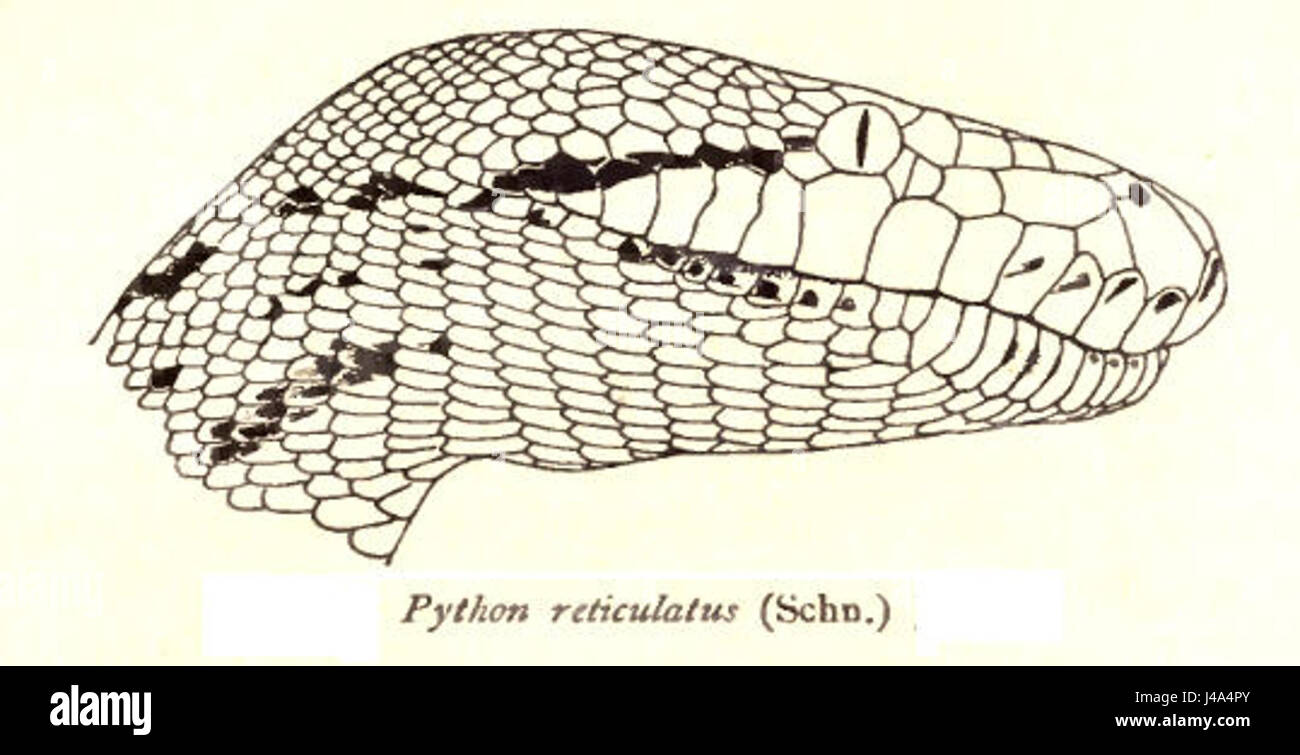 Python Reticulatus, also known as the reticulated python, is one of the largest snake species in the world. Native to Southeast Asia, this species is known for its impressive length and distinctive scale patterns. It is a non-venomous constrictor and preys on various animals, including mammals and birds. The reticulated python is recognized for its ability to reach over 30 feet in length. Stock Photohttps://www.alamy.com/image-license-details/?v=1https://www.alamy.com/stock-photo-python-reticulatus-also-known-as-the-reticulated-python-is-one-of-140364867.html
Python Reticulatus, also known as the reticulated python, is one of the largest snake species in the world. Native to Southeast Asia, this species is known for its impressive length and distinctive scale patterns. It is a non-venomous constrictor and preys on various animals, including mammals and birds. The reticulated python is recognized for its ability to reach over 30 feet in length. Stock Photohttps://www.alamy.com/image-license-details/?v=1https://www.alamy.com/stock-photo-python-reticulatus-also-known-as-the-reticulated-python-is-one-of-140364867.htmlRMJ4A4PY–Python Reticulatus, also known as the reticulated python, is one of the largest snake species in the world. Native to Southeast Asia, this species is known for its impressive length and distinctive scale patterns. It is a non-venomous constrictor and preys on various animals, including mammals and birds. The reticulated python is recognized for its ability to reach over 30 feet in length.
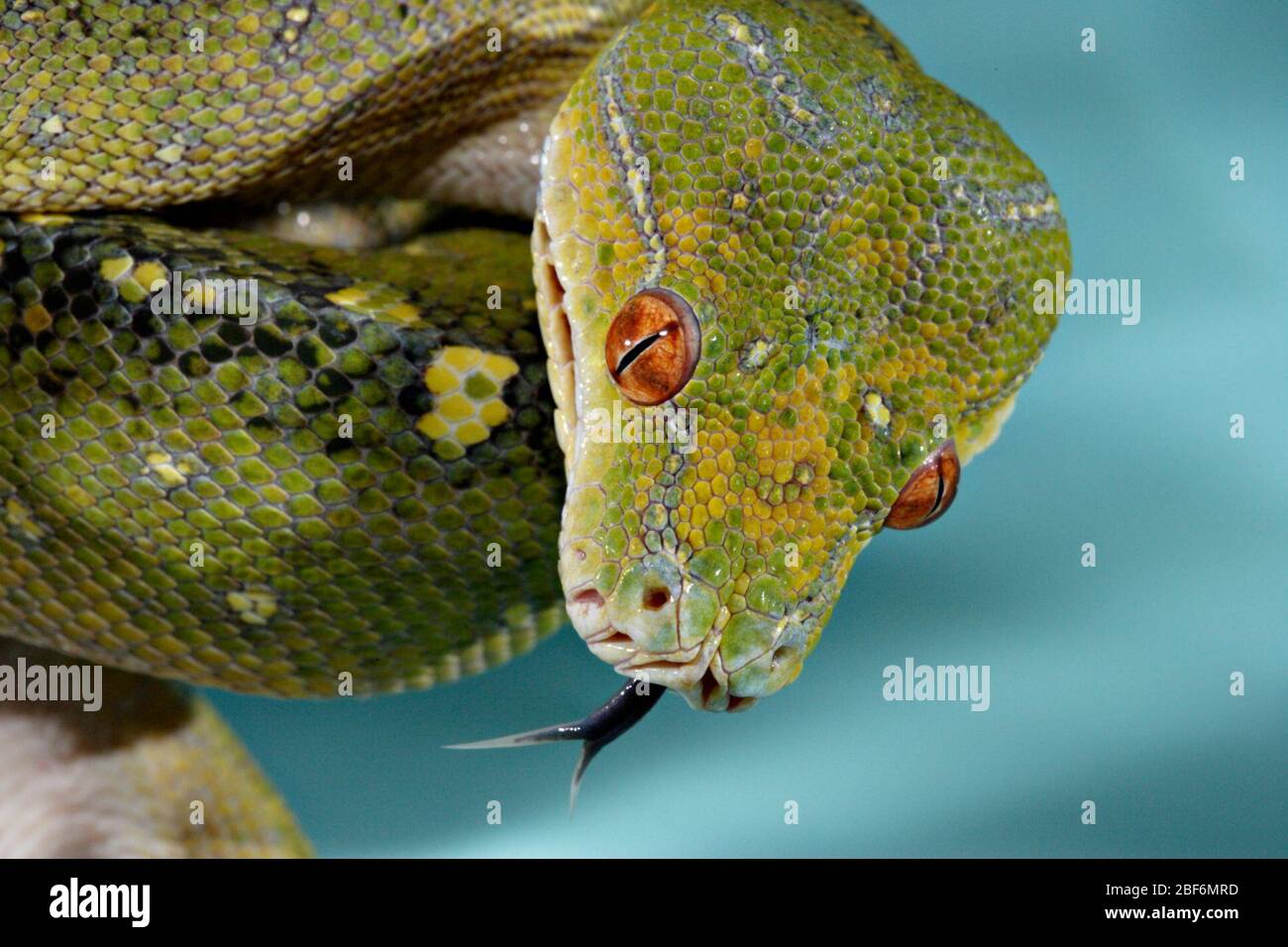 Green Tree Python. young,color change,tongue,Species: viridis,Genus: Morelia,Family: Boidae,Order: Squamata,Class: Reptilia,Phylum: Chordata,Kingdom: Animalia,Reptile,Snake,juvenile,red eyes Stock Photohttps://www.alamy.com/image-license-details/?v=1https://www.alamy.com/green-tree-python-youngcolor-changetonguespecies-viridisgenus-moreliafamily-boidaeorder-squamataclass-reptiliaphylum-chordatakingdom-animaliareptilesnakejuvenilered-eyes-image353575249.html
Green Tree Python. young,color change,tongue,Species: viridis,Genus: Morelia,Family: Boidae,Order: Squamata,Class: Reptilia,Phylum: Chordata,Kingdom: Animalia,Reptile,Snake,juvenile,red eyes Stock Photohttps://www.alamy.com/image-license-details/?v=1https://www.alamy.com/green-tree-python-youngcolor-changetonguespecies-viridisgenus-moreliafamily-boidaeorder-squamataclass-reptiliaphylum-chordatakingdom-animaliareptilesnakejuvenilered-eyes-image353575249.htmlRM2BF6MRD–Green Tree Python. young,color change,tongue,Species: viridis,Genus: Morelia,Family: Boidae,Order: Squamata,Class: Reptilia,Phylum: Chordata,Kingdom: Animalia,Reptile,Snake,juvenile,red eyes
 Python bivittatus, Print, The Burmese python (Python bivittatus) is one of the five largest species of snakes in the world (about the fourth-largest as measured either by length or weight). It is native to a large area of tropical South and Southeast Asia. Until 2009, it was considered a subspecies of Python molurus, but now is recognized as belonging to a distinct species., head Stock Photohttps://www.alamy.com/image-license-details/?v=1https://www.alamy.com/python-bivittatus-print-the-burmese-python-python-bivittatus-is-one-of-the-five-largest-species-of-snakes-in-the-world-about-the-fourth-largest-as-measured-either-by-length-or-weight-it-is-native-to-a-large-area-of-tropical-south-and-southeast-asia-until-2009-it-was-considered-a-subspecies-of-python-molurus-but-now-is-recognized-as-belonging-to-a-distinct-species-head-image328698880.html
Python bivittatus, Print, The Burmese python (Python bivittatus) is one of the five largest species of snakes in the world (about the fourth-largest as measured either by length or weight). It is native to a large area of tropical South and Southeast Asia. Until 2009, it was considered a subspecies of Python molurus, but now is recognized as belonging to a distinct species., head Stock Photohttps://www.alamy.com/image-license-details/?v=1https://www.alamy.com/python-bivittatus-print-the-burmese-python-python-bivittatus-is-one-of-the-five-largest-species-of-snakes-in-the-world-about-the-fourth-largest-as-measured-either-by-length-or-weight-it-is-native-to-a-large-area-of-tropical-south-and-southeast-asia-until-2009-it-was-considered-a-subspecies-of-python-molurus-but-now-is-recognized-as-belonging-to-a-distinct-species-head-image328698880.htmlRM2A2NENM–Python bivittatus, Print, The Burmese python (Python bivittatus) is one of the five largest species of snakes in the world (about the fourth-largest as measured either by length or weight). It is native to a large area of tropical South and Southeast Asia. Until 2009, it was considered a subspecies of Python molurus, but now is recognized as belonging to a distinct species., head
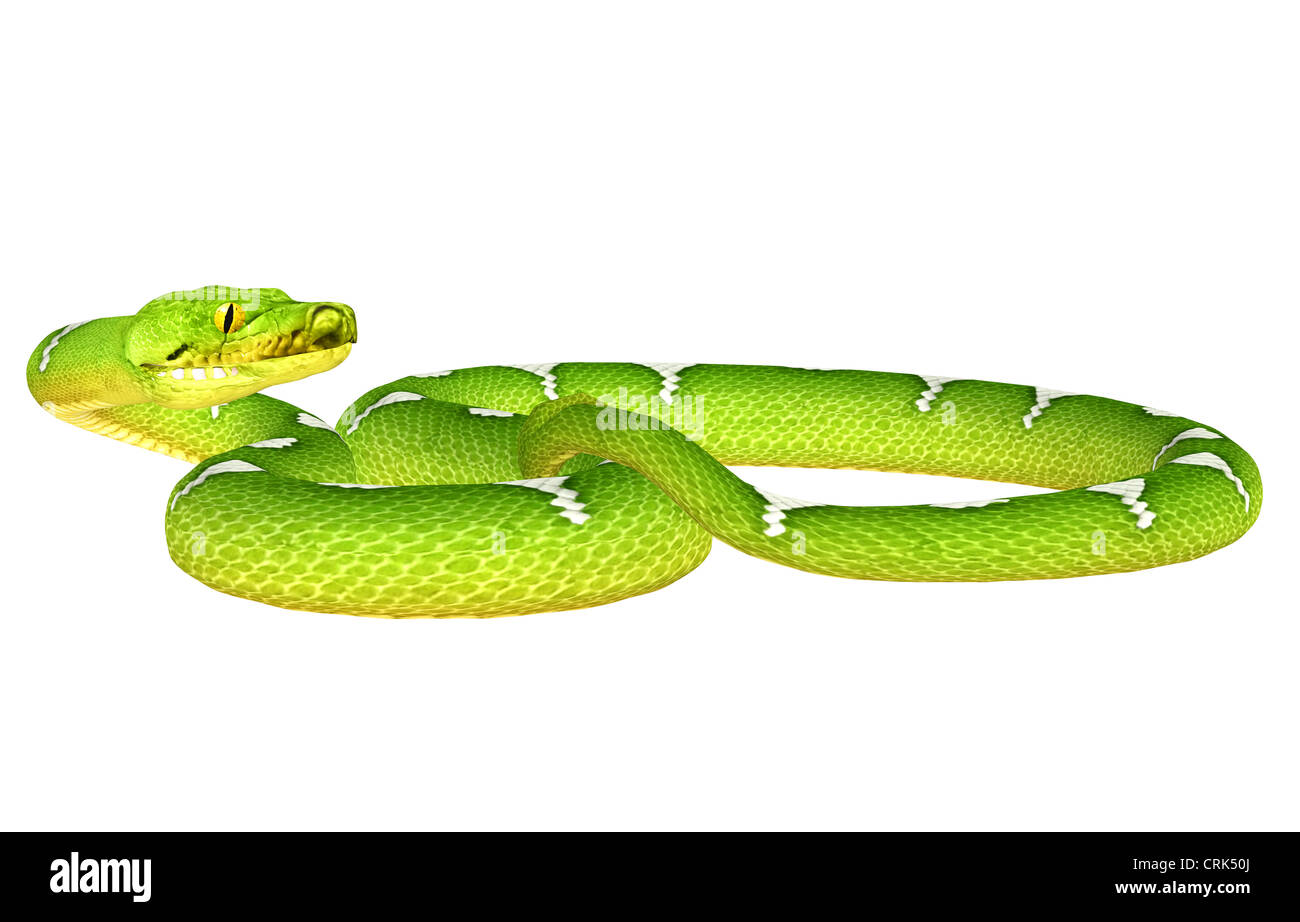 Illustration of a Green Tree Python (snake species) isolated on a white background Stock Photohttps://www.alamy.com/image-license-details/?v=1https://www.alamy.com/stock-photo-illustration-of-a-green-tree-python-snake-species-isolated-on-a-white-48978850.html
Illustration of a Green Tree Python (snake species) isolated on a white background Stock Photohttps://www.alamy.com/image-license-details/?v=1https://www.alamy.com/stock-photo-illustration-of-a-green-tree-python-snake-species-isolated-on-a-white-48978850.htmlRFCRK50J–Illustration of a Green Tree Python (snake species) isolated on a white background
RMP29XYH–. Python sebae . between 1700 and 1880 274 Python sebae - 1700-1880 - Print - Iconographia Zoologica - Special Collections University of Amsterdam - UBA01 IZ11800209
 reptile, snake, python, studio, isolated, animal, white, ball, wildlife, wild, background, species, royal, yellow, vertebrate, white background, Stock Photohttps://www.alamy.com/image-license-details/?v=1https://www.alamy.com/reptile-snake-python-studio-isolated-animal-white-ball-wildlife-wild-background-species-royal-yellow-vertebrate-white-background-image389793032.html
reptile, snake, python, studio, isolated, animal, white, ball, wildlife, wild, background, species, royal, yellow, vertebrate, white background, Stock Photohttps://www.alamy.com/image-license-details/?v=1https://www.alamy.com/reptile-snake-python-studio-isolated-animal-white-ball-wildlife-wild-background-species-royal-yellow-vertebrate-white-background-image389793032.htmlRF2DJ4GYM–reptile, snake, python, studio, isolated, animal, white, ball, wildlife, wild, background, species, royal, yellow, vertebrate, white background,
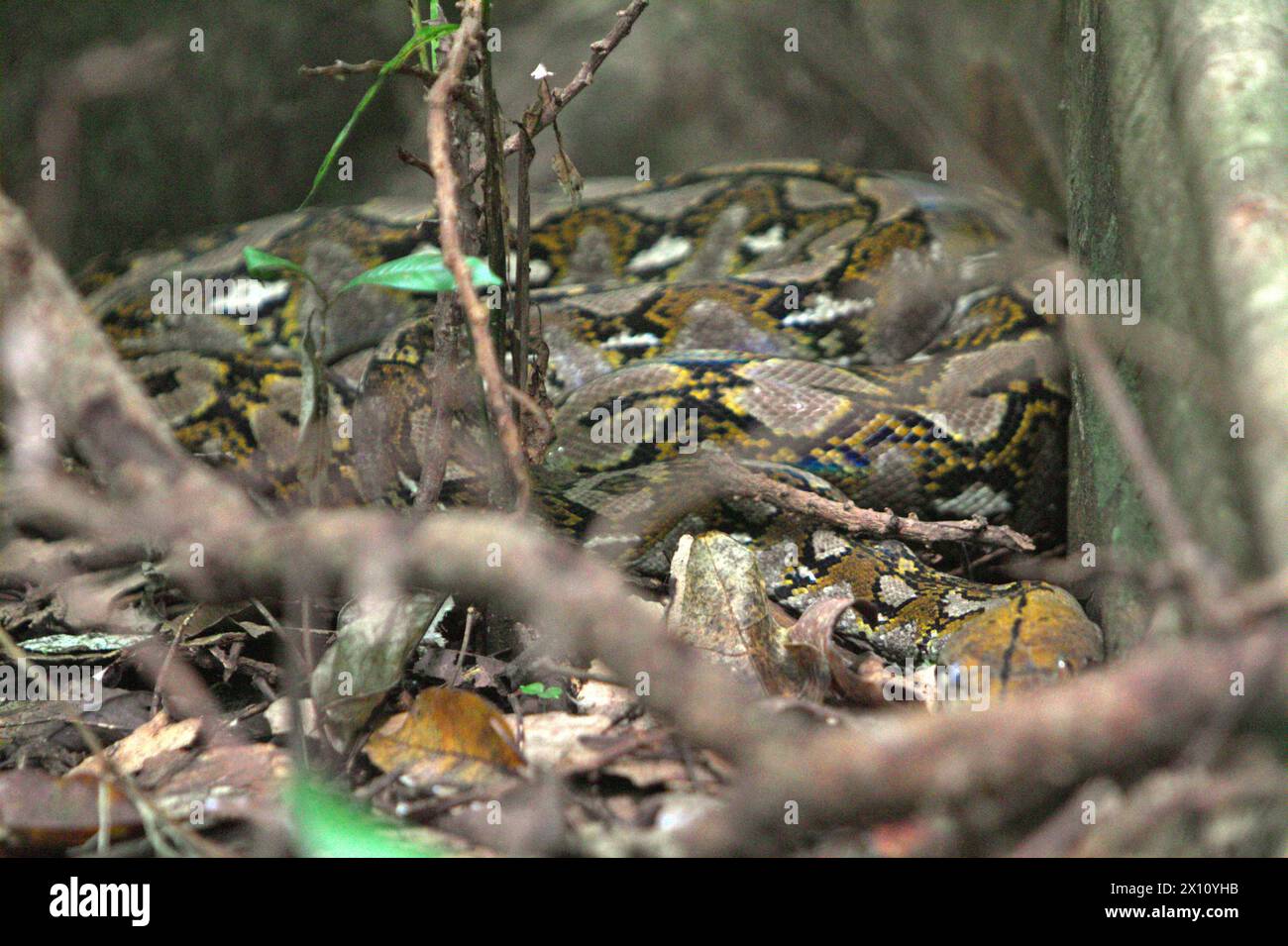 An unidentified species of python hides below roots of a giant fig tree in Tangkoko forest, North Sulawesi, Indonesia. Reptile richness is likely to decrease significantly across most parts of the world with ongoing future climate change, according to team of scientists led by Matthias Biber (Department for Life Science Systems, School of Life Sciences, Technical University of Munich, Freising). 'This effect, in addition to considerable impacts on species range extent, overlap and position, was visible across lizards, snakes and turtles alike,' they wrote in a May 2022 paper. Stock Photohttps://www.alamy.com/image-license-details/?v=1https://www.alamy.com/an-unidentified-species-of-python-hides-below-roots-of-a-giant-fig-tree-in-tangkoko-forest-north-sulawesi-indonesia-reptile-richness-is-likely-to-decrease-significantly-across-most-parts-of-the-world-with-ongoing-future-climate-change-according-to-team-of-scientists-led-by-matthias-biber-department-for-life-science-systems-school-of-life-sciences-technical-university-of-munich-freising-this-effect-in-addition-to-considerable-impacts-on-species-range-extent-overlap-and-position-was-visible-across-lizards-snakes-and-turtles-alike-they-wrote-in-a-may-2022-paper-image602999191.html
An unidentified species of python hides below roots of a giant fig tree in Tangkoko forest, North Sulawesi, Indonesia. Reptile richness is likely to decrease significantly across most parts of the world with ongoing future climate change, according to team of scientists led by Matthias Biber (Department for Life Science Systems, School of Life Sciences, Technical University of Munich, Freising). 'This effect, in addition to considerable impacts on species range extent, overlap and position, was visible across lizards, snakes and turtles alike,' they wrote in a May 2022 paper. Stock Photohttps://www.alamy.com/image-license-details/?v=1https://www.alamy.com/an-unidentified-species-of-python-hides-below-roots-of-a-giant-fig-tree-in-tangkoko-forest-north-sulawesi-indonesia-reptile-richness-is-likely-to-decrease-significantly-across-most-parts-of-the-world-with-ongoing-future-climate-change-according-to-team-of-scientists-led-by-matthias-biber-department-for-life-science-systems-school-of-life-sciences-technical-university-of-munich-freising-this-effect-in-addition-to-considerable-impacts-on-species-range-extent-overlap-and-position-was-visible-across-lizards-snakes-and-turtles-alike-they-wrote-in-a-may-2022-paper-image602999191.htmlRM2X10YHB–An unidentified species of python hides below roots of a giant fig tree in Tangkoko forest, North Sulawesi, Indonesia. Reptile richness is likely to decrease significantly across most parts of the world with ongoing future climate change, according to team of scientists led by Matthias Biber (Department for Life Science Systems, School of Life Sciences, Technical University of Munich, Freising). 'This effect, in addition to considerable impacts on species range extent, overlap and position, was visible across lizards, snakes and turtles alike,' they wrote in a May 2022 paper.
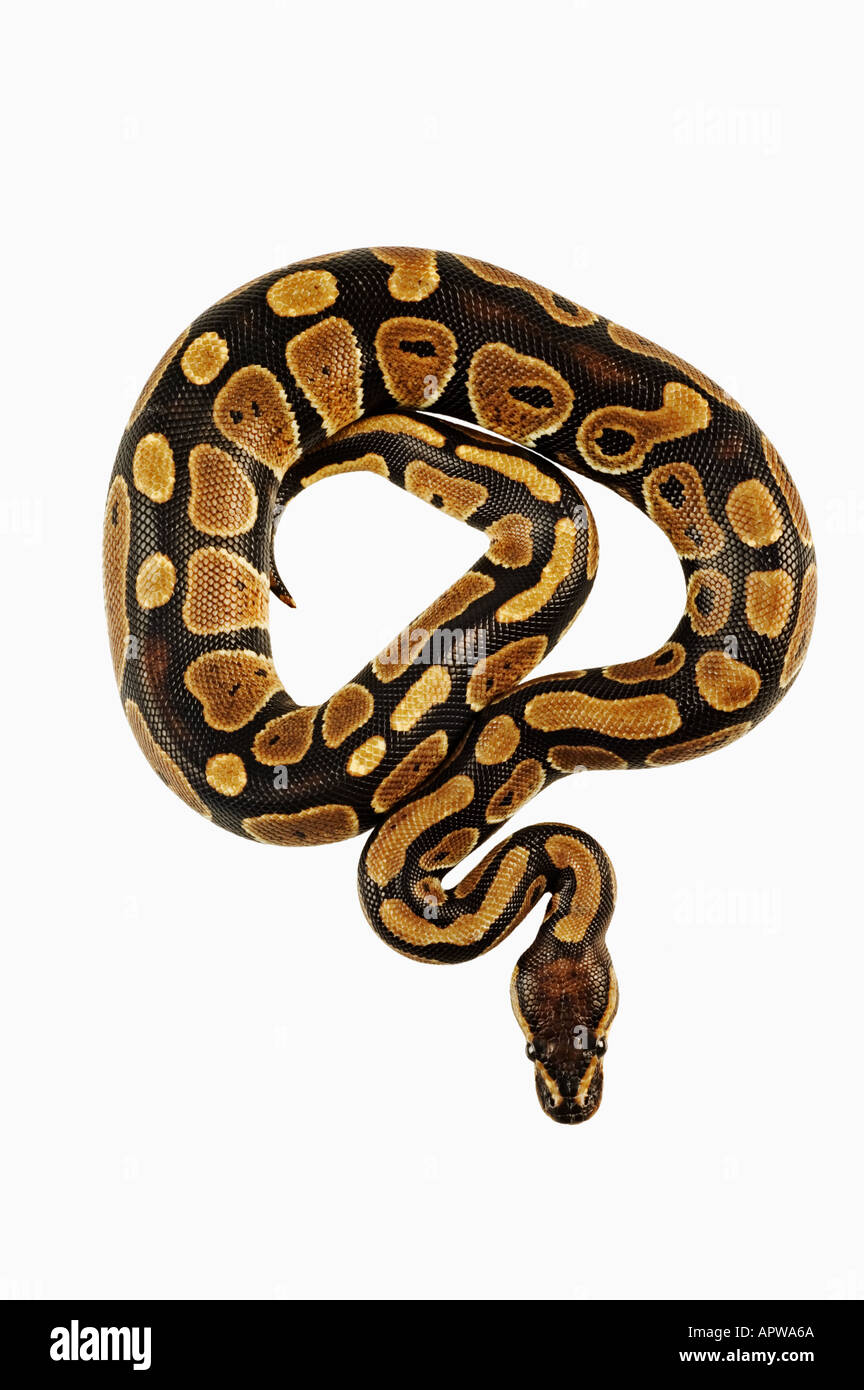 Ball python Python regius Dist West Africa Stock Photohttps://www.alamy.com/image-license-details/?v=1https://www.alamy.com/ball-python-python-regius-dist-west-africa-image2955881.html
Ball python Python regius Dist West Africa Stock Photohttps://www.alamy.com/image-license-details/?v=1https://www.alamy.com/ball-python-python-regius-dist-west-africa-image2955881.htmlRMAPWA6A–Ball python Python regius Dist West Africa
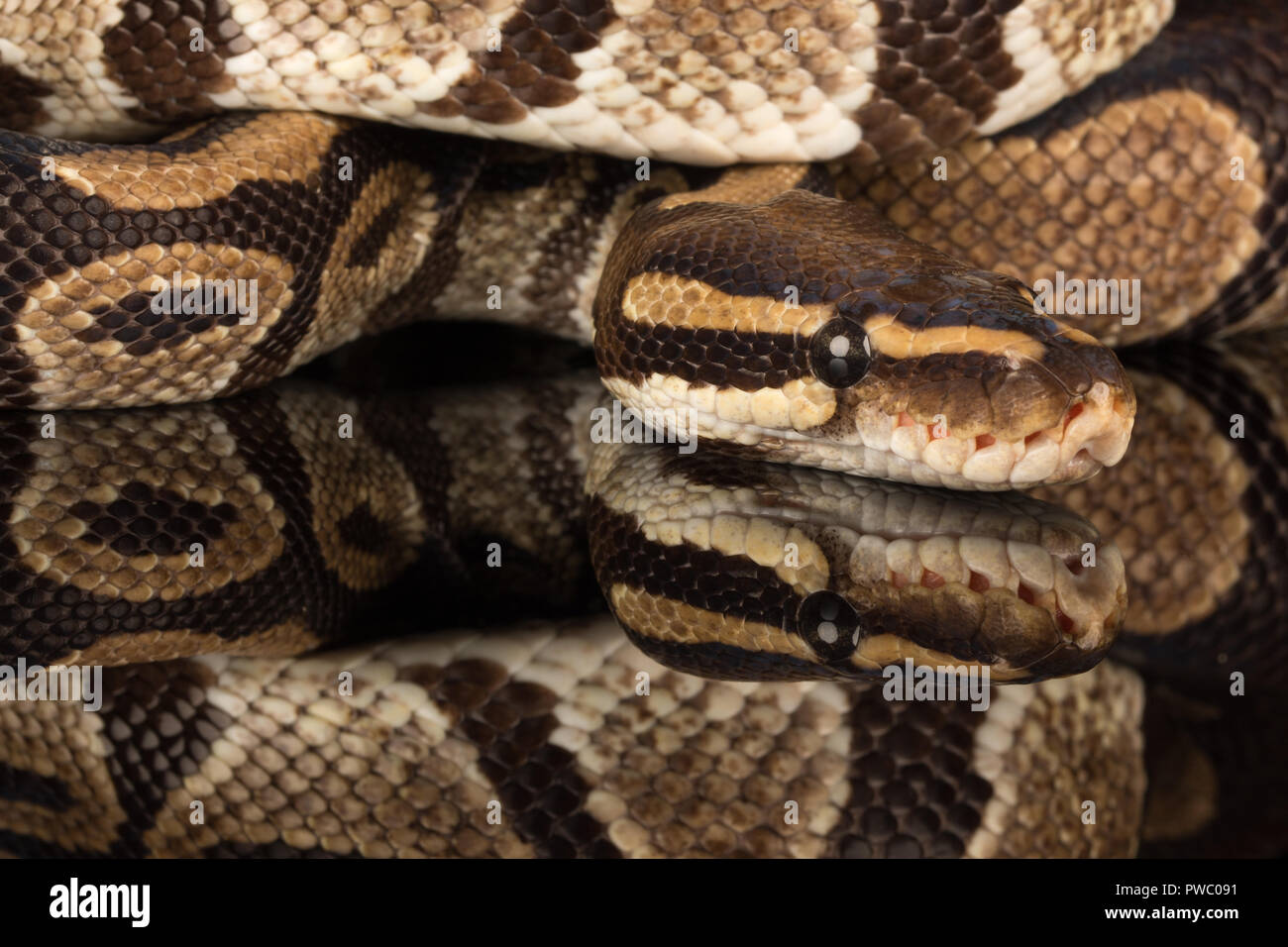 Royal python, also called the ball python (Python regius), an African reptile snake species Stock Photohttps://www.alamy.com/image-license-details/?v=1https://www.alamy.com/royal-python-also-called-the-ball-python-python-regius-an-african-reptile-snake-species-image222154493.html
Royal python, also called the ball python (Python regius), an African reptile snake species Stock Photohttps://www.alamy.com/image-license-details/?v=1https://www.alamy.com/royal-python-also-called-the-ball-python-python-regius-an-african-reptile-snake-species-image222154493.htmlRFPWC091–Royal python, also called the ball python (Python regius), an African reptile snake species
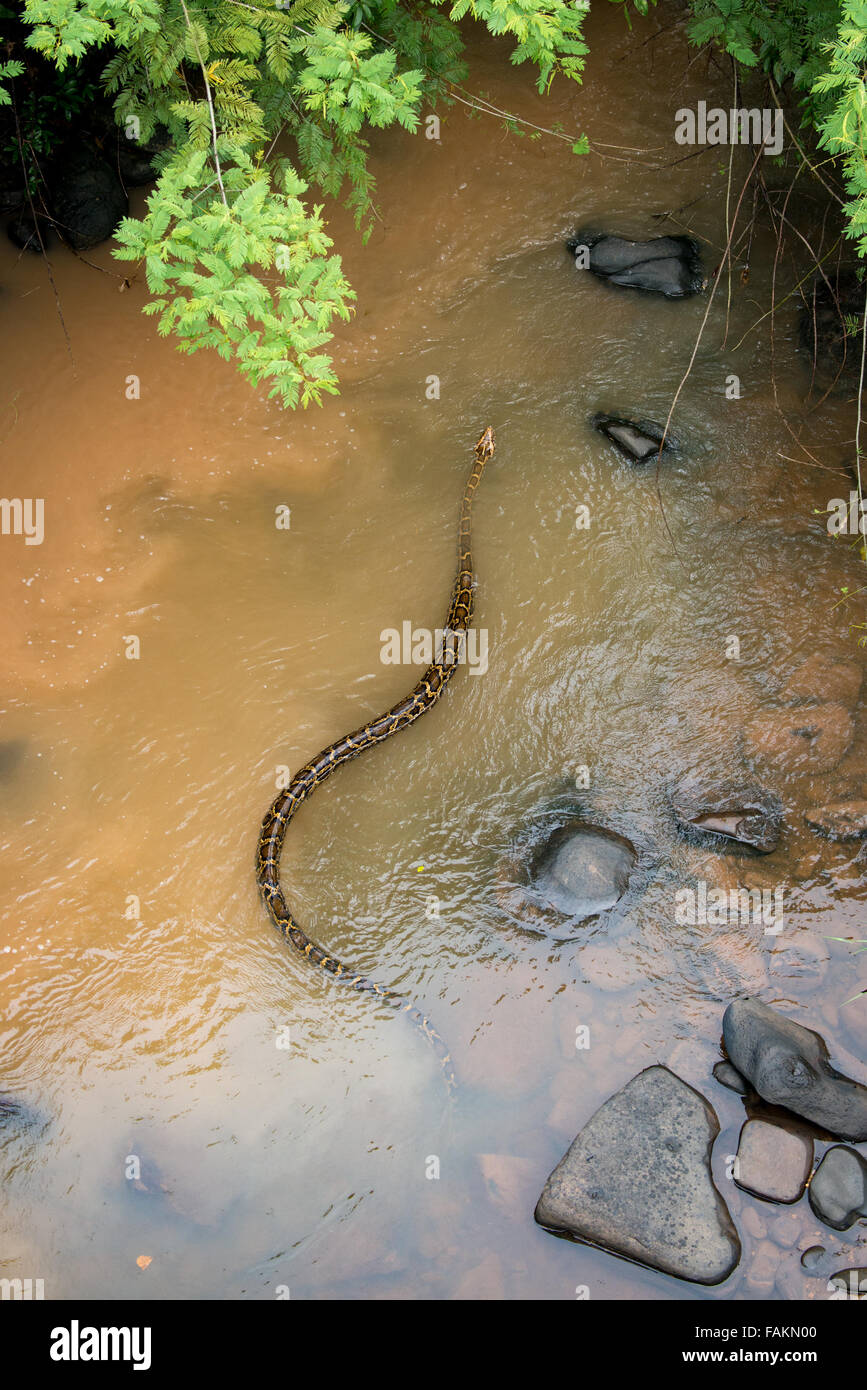 5 meter Burmese python (Python bivittatus) is one of the five largest species of snakes in the world Stock Photohttps://www.alamy.com/image-license-details/?v=1https://www.alamy.com/stock-photo-5-meter-burmese-python-python-bivittatus-is-one-of-the-five-largest-92631952.html
5 meter Burmese python (Python bivittatus) is one of the five largest species of snakes in the world Stock Photohttps://www.alamy.com/image-license-details/?v=1https://www.alamy.com/stock-photo-5-meter-burmese-python-python-bivittatus-is-one-of-the-five-largest-92631952.htmlRMFAKN00–5 meter Burmese python (Python bivittatus) is one of the five largest species of snakes in the world
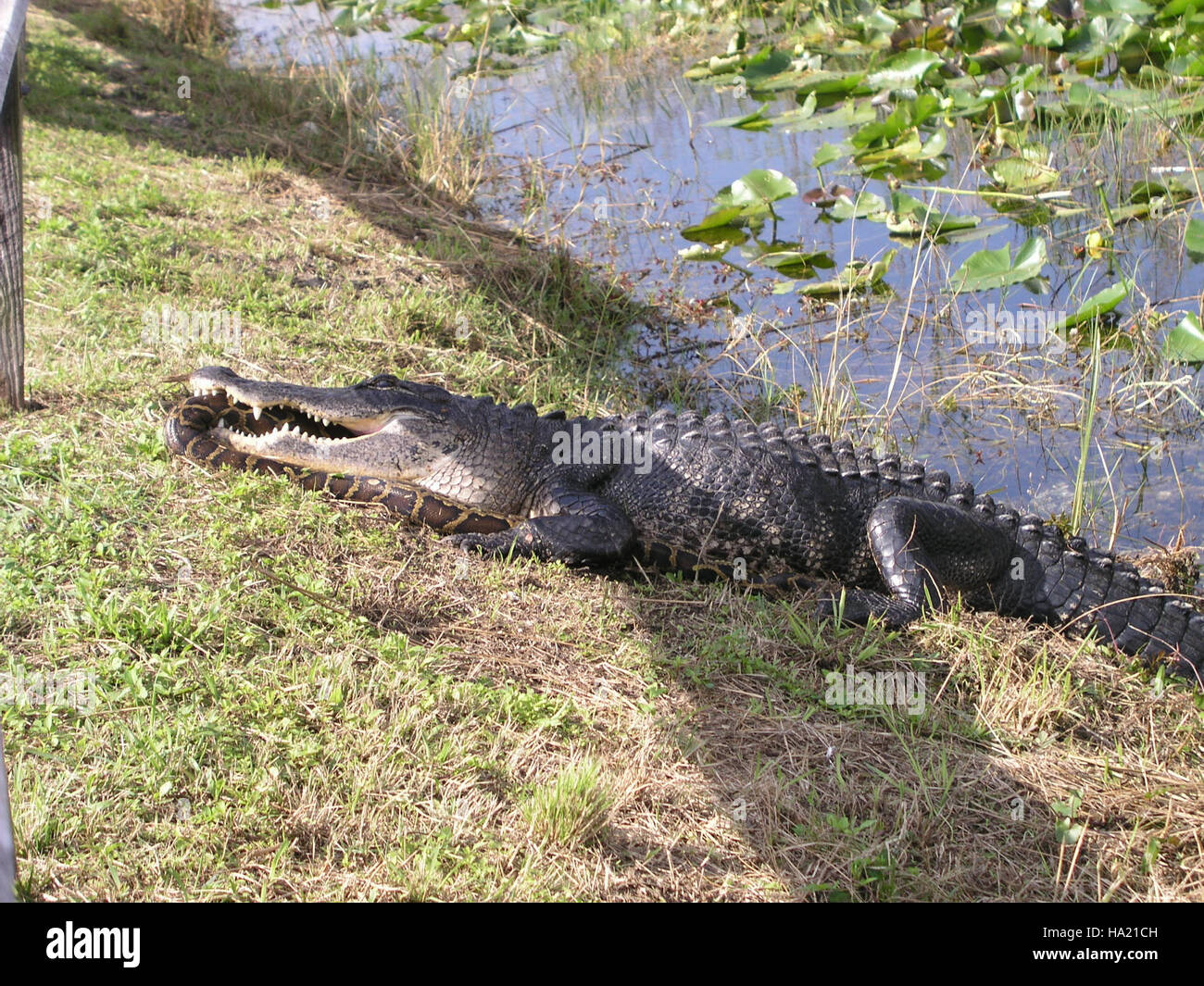 A dramatic encounter between a gator and a python in the Everglades National Park highlights the ongoing challenges of invasive species management in this unique ecosystem. Stock Photohttps://www.alamy.com/image-license-details/?v=1https://www.alamy.com/stock-photo-a-dramatic-encounter-between-a-gator-and-a-python-in-the-everglades-126664177.html
A dramatic encounter between a gator and a python in the Everglades National Park highlights the ongoing challenges of invasive species management in this unique ecosystem. Stock Photohttps://www.alamy.com/image-license-details/?v=1https://www.alamy.com/stock-photo-a-dramatic-encounter-between-a-gator-and-a-python-in-the-everglades-126664177.htmlRMHA21CH–A dramatic encounter between a gator and a python in the Everglades National Park highlights the ongoing challenges of invasive species management in this unique ecosystem.
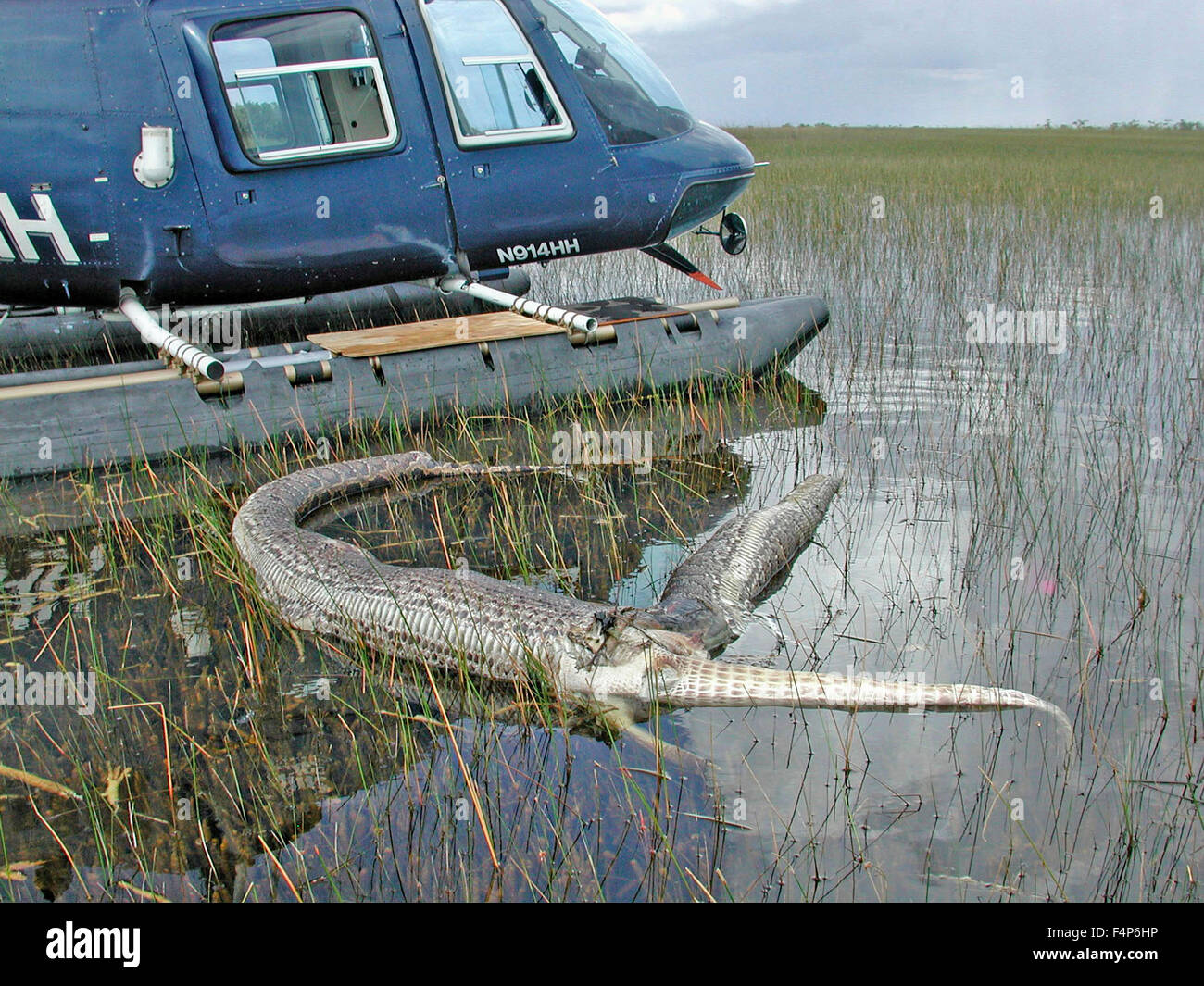 A Burmese python floats dead in the water after it tried unsuccessfully to eat an American alligator in the Everglades National Park July 10, 2008 near Homestead, Florida. The python is an invasive species introduced by accident and now competing directly with the top predators in the Everglades ecosystem. Stock Photohttps://www.alamy.com/image-license-details/?v=1https://www.alamy.com/stock-photo-a-burmese-python-floats-dead-in-the-water-after-it-tried-unsuccessfully-88998610.html
A Burmese python floats dead in the water after it tried unsuccessfully to eat an American alligator in the Everglades National Park July 10, 2008 near Homestead, Florida. The python is an invasive species introduced by accident and now competing directly with the top predators in the Everglades ecosystem. Stock Photohttps://www.alamy.com/image-license-details/?v=1https://www.alamy.com/stock-photo-a-burmese-python-floats-dead-in-the-water-after-it-tried-unsuccessfully-88998610.htmlRMF4P6HP–A Burmese python floats dead in the water after it tried unsuccessfully to eat an American alligator in the Everglades National Park July 10, 2008 near Homestead, Florida. The python is an invasive species introduced by accident and now competing directly with the top predators in the Everglades ecosystem.
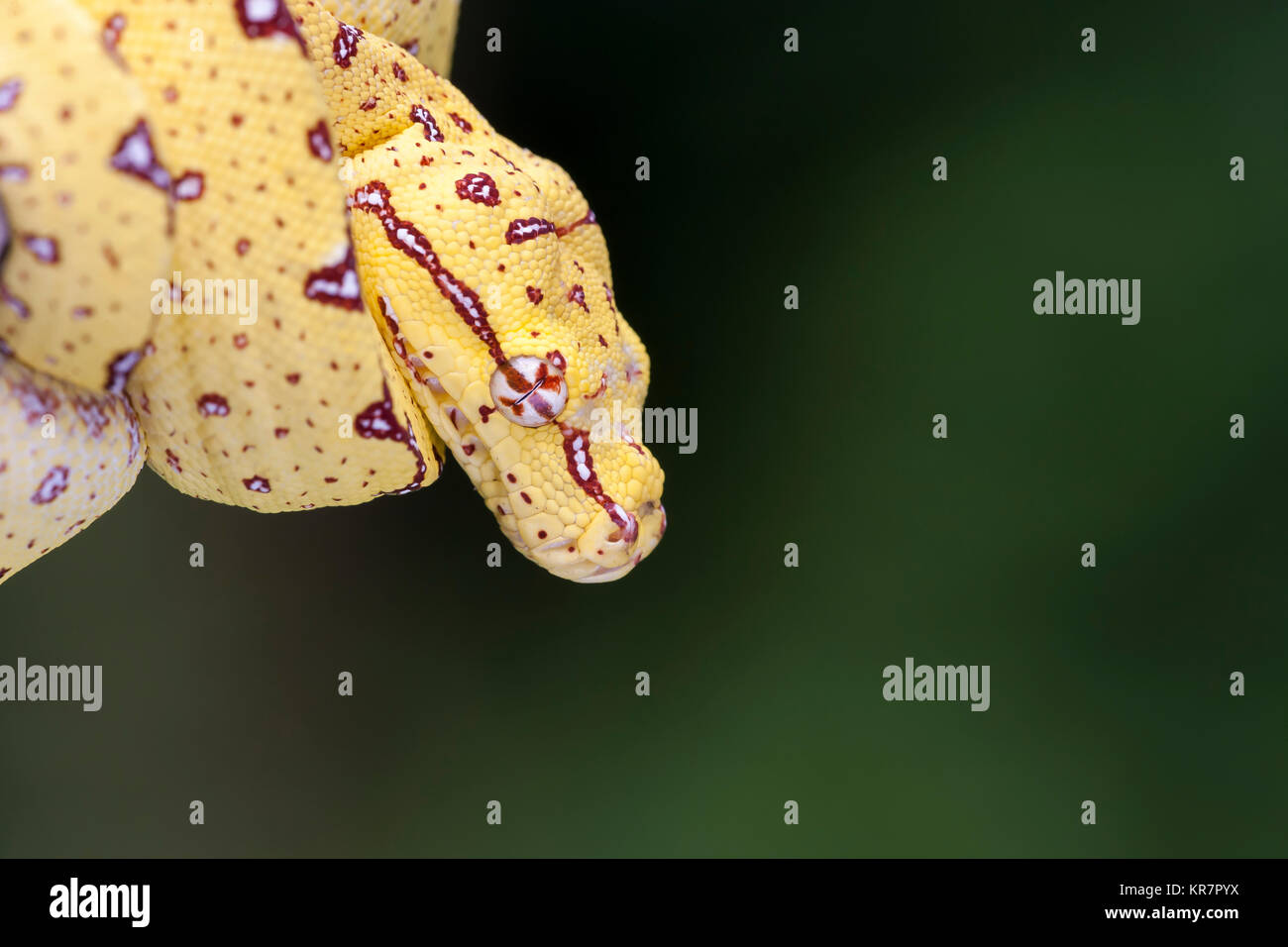 Young Green Tree Python (Morelia viridis) Hanging on bran waiting for prey. Immatures of this species are often yellow or maroon in color. Stock Photohttps://www.alamy.com/image-license-details/?v=1https://www.alamy.com/stock-image-young-green-tree-python-morelia-viridis-hanging-on-bran-waiting-for-169202094.html
Young Green Tree Python (Morelia viridis) Hanging on bran waiting for prey. Immatures of this species are often yellow or maroon in color. Stock Photohttps://www.alamy.com/image-license-details/?v=1https://www.alamy.com/stock-image-young-green-tree-python-morelia-viridis-hanging-on-bran-waiting-for-169202094.htmlRMKR7PYX–Young Green Tree Python (Morelia viridis) Hanging on bran waiting for prey. Immatures of this species are often yellow or maroon in color.
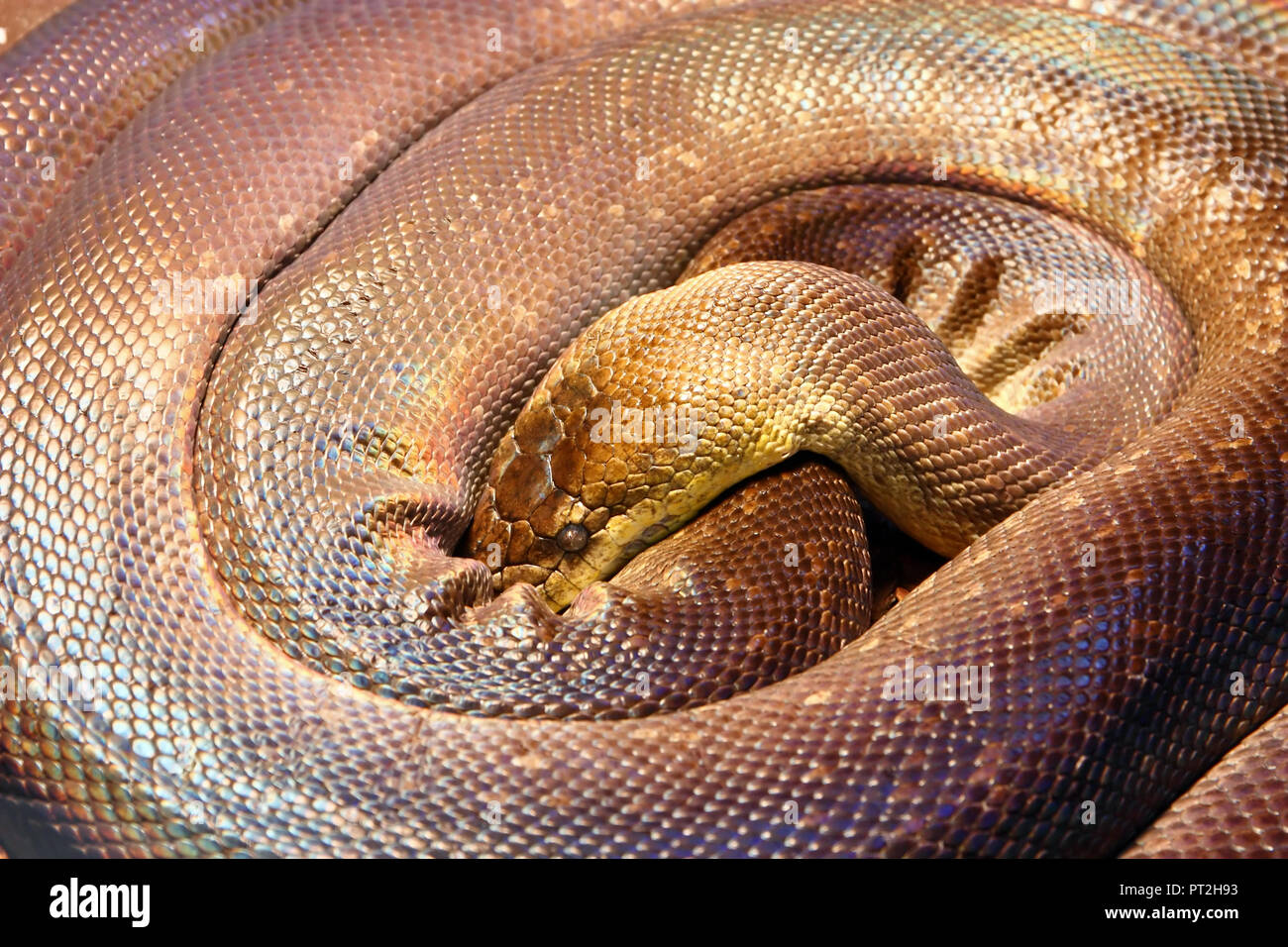 Macklot's python, liasis mackloti, is a python species found in Indonesia, East Timor, Papua New Guinea, and coastal northern Australia Stock Photohttps://www.alamy.com/image-license-details/?v=1https://www.alamy.com/macklots-python-liasis-mackloti-is-a-python-species-found-in-indonesia-east-timor-papua-new-guinea-and-coastal-northern-australia-image221333647.html
Macklot's python, liasis mackloti, is a python species found in Indonesia, East Timor, Papua New Guinea, and coastal northern Australia Stock Photohttps://www.alamy.com/image-license-details/?v=1https://www.alamy.com/macklots-python-liasis-mackloti-is-a-python-species-found-in-indonesia-east-timor-papua-new-guinea-and-coastal-northern-australia-image221333647.htmlRFPT2H93–Macklot's python, liasis mackloti, is a python species found in Indonesia, East Timor, Papua New Guinea, and coastal northern Australia
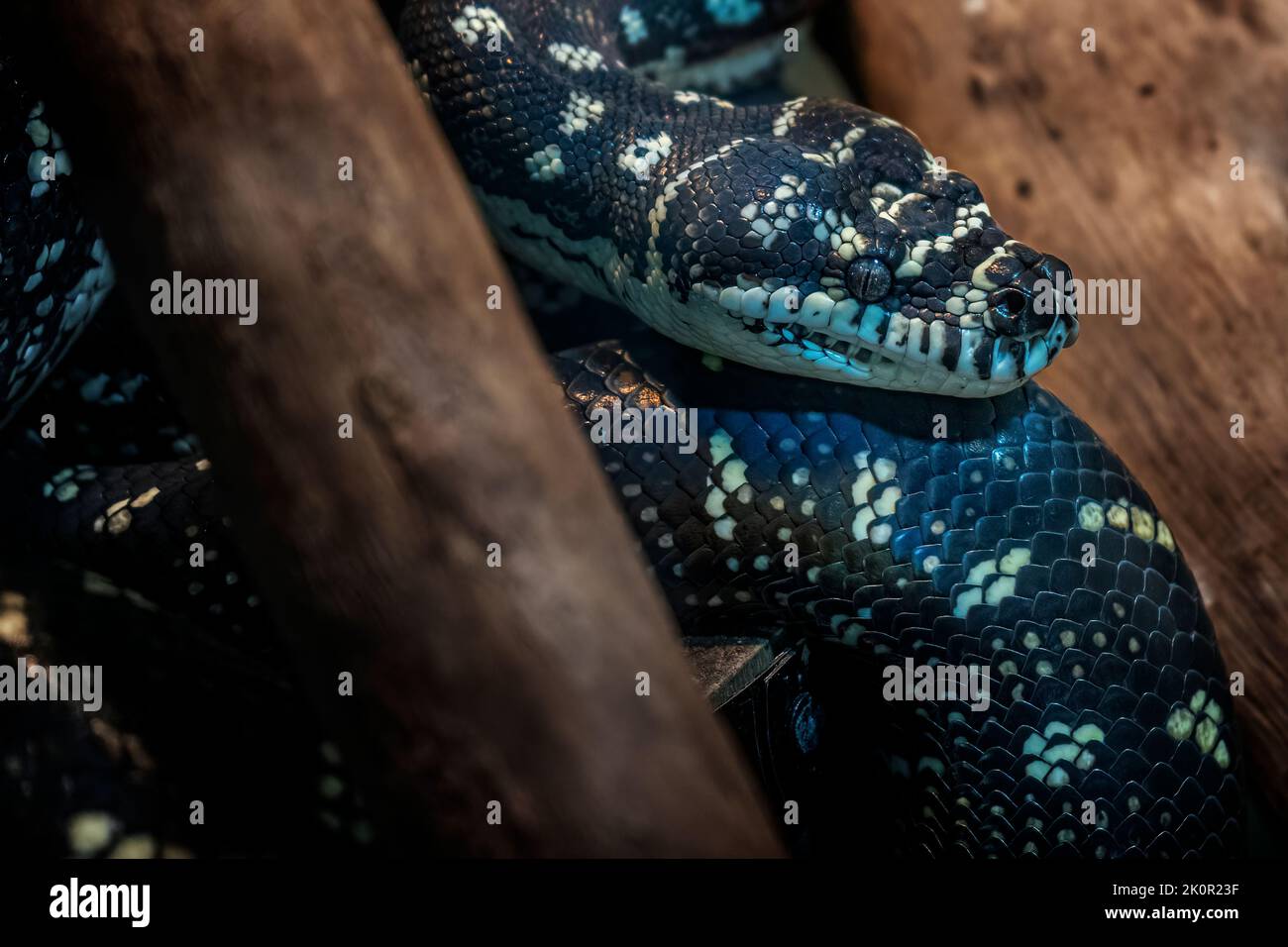 Diamond Carpet Python (Morelia spilota spilota) resting in amongst logs. Queensland Australia Stock Photohttps://www.alamy.com/image-license-details/?v=1https://www.alamy.com/diamond-carpet-python-morelia-spilota-spilota-resting-in-amongst-logs-queensland-australia-image482396867.html
Diamond Carpet Python (Morelia spilota spilota) resting in amongst logs. Queensland Australia Stock Photohttps://www.alamy.com/image-license-details/?v=1https://www.alamy.com/diamond-carpet-python-morelia-spilota-spilota-resting-in-amongst-logs-queensland-australia-image482396867.htmlRF2K0R23F–Diamond Carpet Python (Morelia spilota spilota) resting in amongst logs. Queensland Australia
 Burmese python, Indian python (Python molurus, Python molurus molurus ), medical care at a protected snake species, Sri Lanka, Sinharaja Forest National Park Stock Photohttps://www.alamy.com/image-license-details/?v=1https://www.alamy.com/stock-photo-burmese-python-indian-python-python-molurus-python-molurus-molurus-76012323.html
Burmese python, Indian python (Python molurus, Python molurus molurus ), medical care at a protected snake species, Sri Lanka, Sinharaja Forest National Park Stock Photohttps://www.alamy.com/image-license-details/?v=1https://www.alamy.com/stock-photo-burmese-python-indian-python-python-molurus-python-molurus-molurus-76012323.htmlRMEBJJDR–Burmese python, Indian python (Python molurus, Python molurus molurus ), medical care at a protected snake species, Sri Lanka, Sinharaja Forest National Park
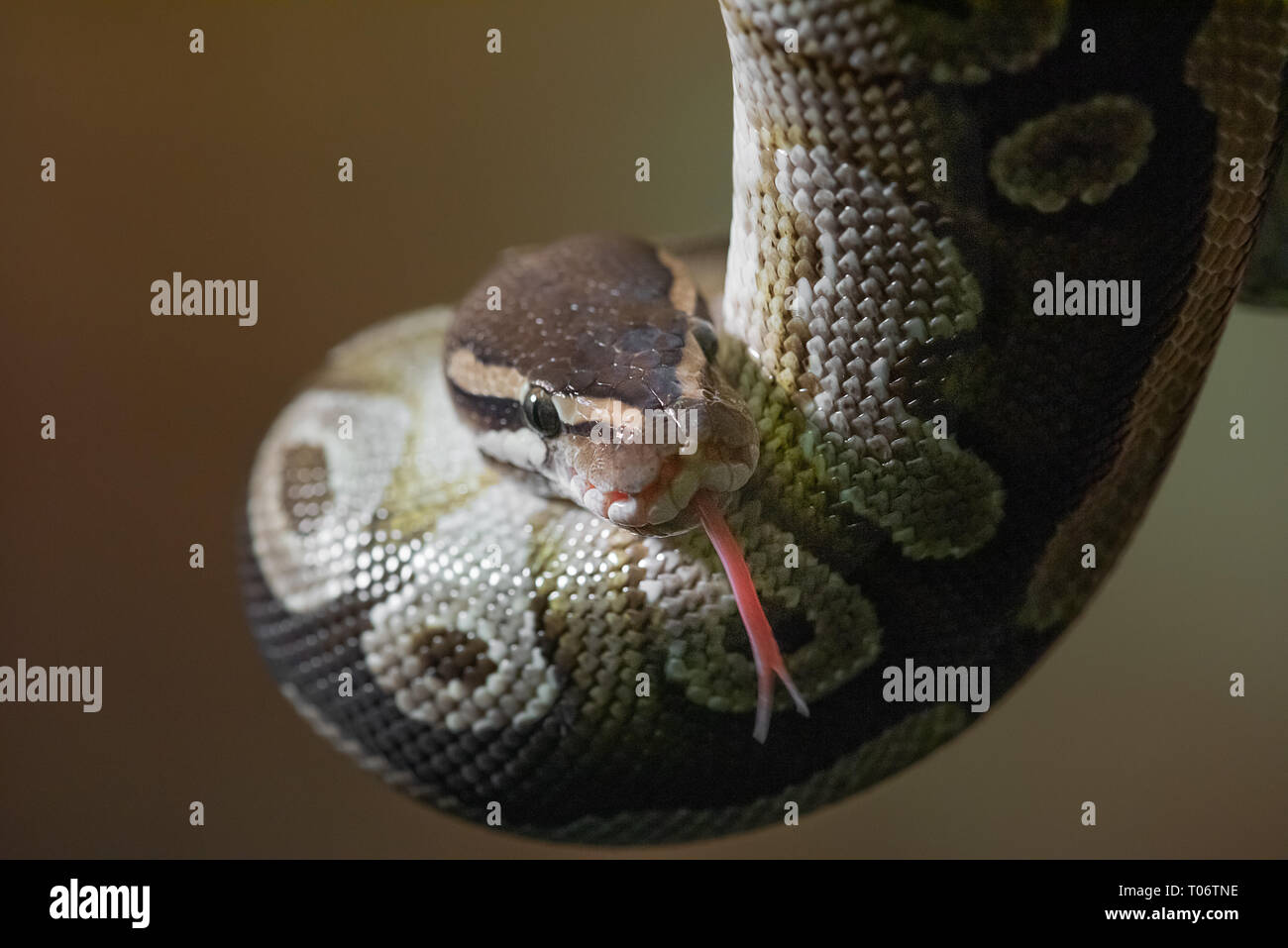 A close up portrait of a young python with head down and forked tongue out Stock Photohttps://www.alamy.com/image-license-details/?v=1https://www.alamy.com/a-close-up-portrait-of-a-young-python-with-head-down-and-forked-tongue-out-image241096282.html
A close up portrait of a young python with head down and forked tongue out Stock Photohttps://www.alamy.com/image-license-details/?v=1https://www.alamy.com/a-close-up-portrait-of-a-young-python-with-head-down-and-forked-tongue-out-image241096282.htmlRFT06TNE–A close up portrait of a young python with head down and forked tongue out
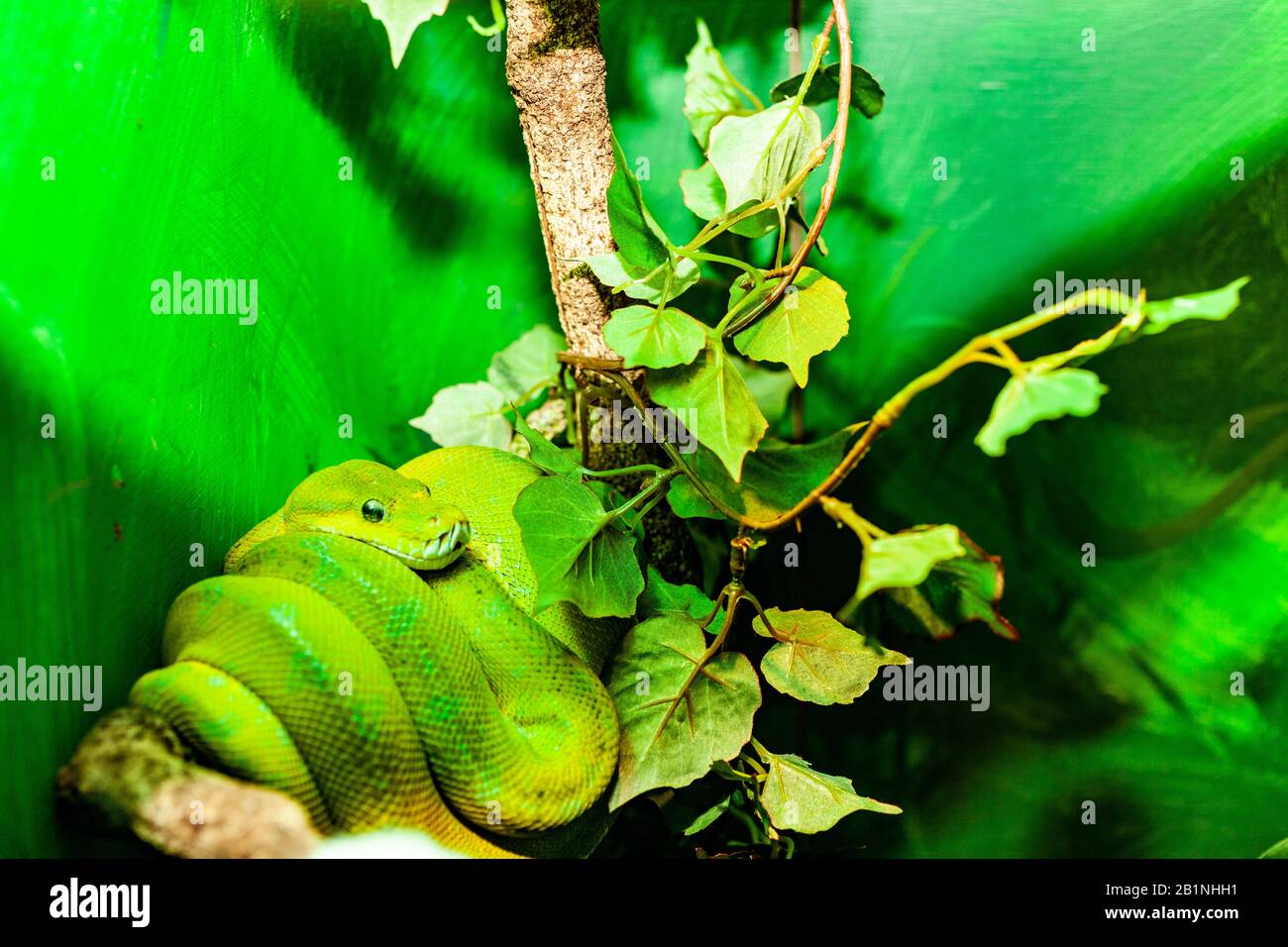 The green tree python, is a species of python native to New Guinea, islands in Indonesia, and Cape York Peninsula in Australia. Described by Hermann S Stock Photohttps://www.alamy.com/image-license-details/?v=1https://www.alamy.com/the-green-tree-python-is-a-species-of-python-native-to-new-guinea-islands-in-indonesia-and-cape-york-peninsula-in-australia-described-by-hermann-s-image345296813.html
The green tree python, is a species of python native to New Guinea, islands in Indonesia, and Cape York Peninsula in Australia. Described by Hermann S Stock Photohttps://www.alamy.com/image-license-details/?v=1https://www.alamy.com/the-green-tree-python-is-a-species-of-python-native-to-new-guinea-islands-in-indonesia-and-cape-york-peninsula-in-australia-described-by-hermann-s-image345296813.htmlRF2B1NHH1–The green tree python, is a species of python native to New Guinea, islands in Indonesia, and Cape York Peninsula in Australia. Described by Hermann S
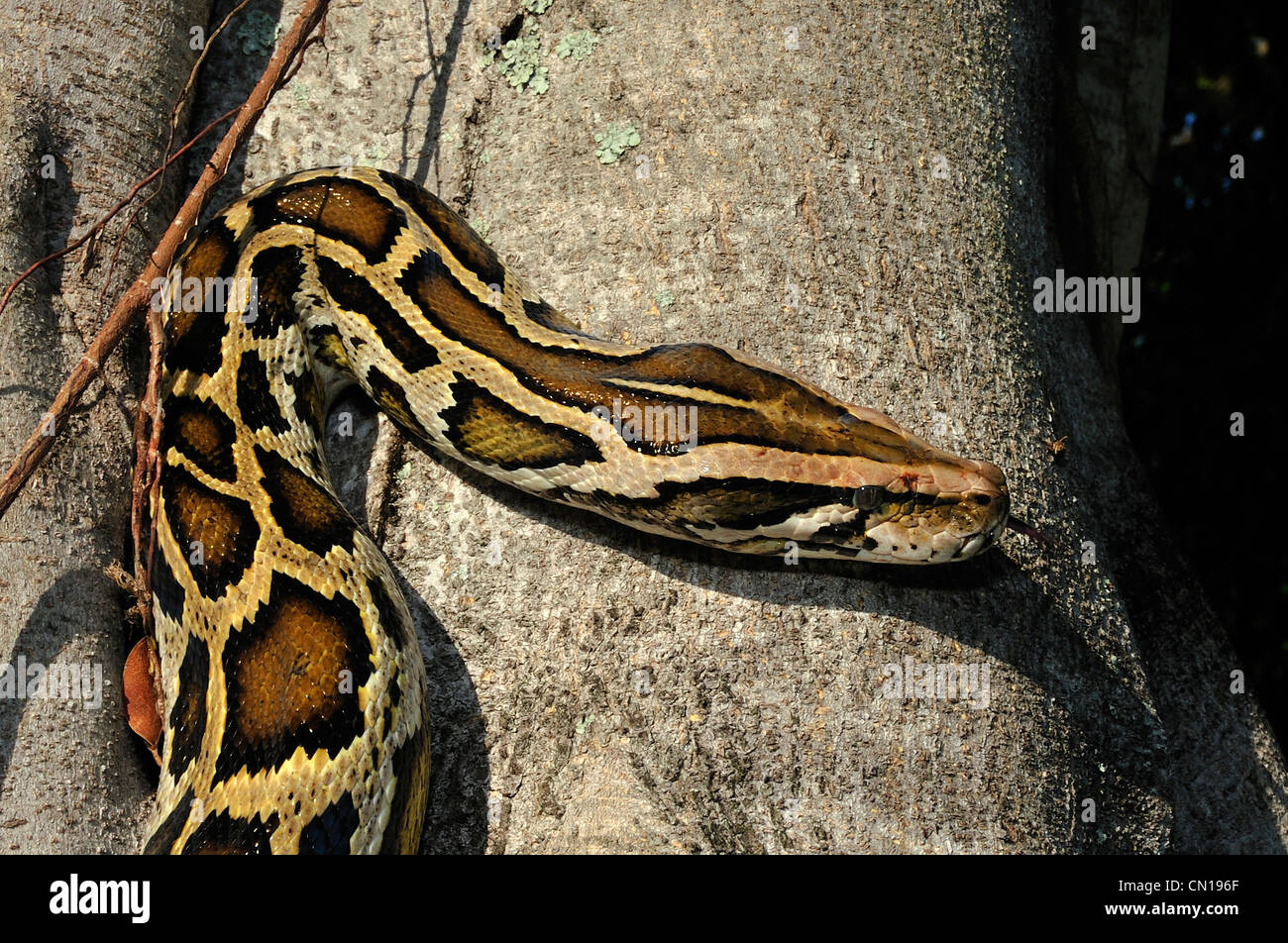 Burmese python, Python molurus bivittatus, Florida Stock Photohttps://www.alamy.com/image-license-details/?v=1https://www.alamy.com/stock-photo-burmese-python-python-molurus-bivittatus-florida-47357703.html
Burmese python, Python molurus bivittatus, Florida Stock Photohttps://www.alamy.com/image-license-details/?v=1https://www.alamy.com/stock-photo-burmese-python-python-molurus-bivittatus-florida-47357703.htmlRMCN196F–Burmese python, Python molurus bivittatus, Florida
 This anatomical study examines the structure of the Burmese Python (Python bivittatus), focusing on specific parts of the species and providing comparative analysis of its anatomical features. Stock Photohttps://www.alamy.com/image-license-details/?v=1https://www.alamy.com/stock-photo-this-anatomical-study-examines-the-structure-of-the-burmese-python-171276260.html
This anatomical study examines the structure of the Burmese Python (Python bivittatus), focusing on specific parts of the species and providing comparative analysis of its anatomical features. Stock Photohttps://www.alamy.com/image-license-details/?v=1https://www.alamy.com/stock-photo-this-anatomical-study-examines-the-structure-of-the-burmese-python-171276260.htmlRMKXJ8H8–This anatomical study examines the structure of the Burmese Python (Python bivittatus), focusing on specific parts of the species and providing comparative analysis of its anatomical features.
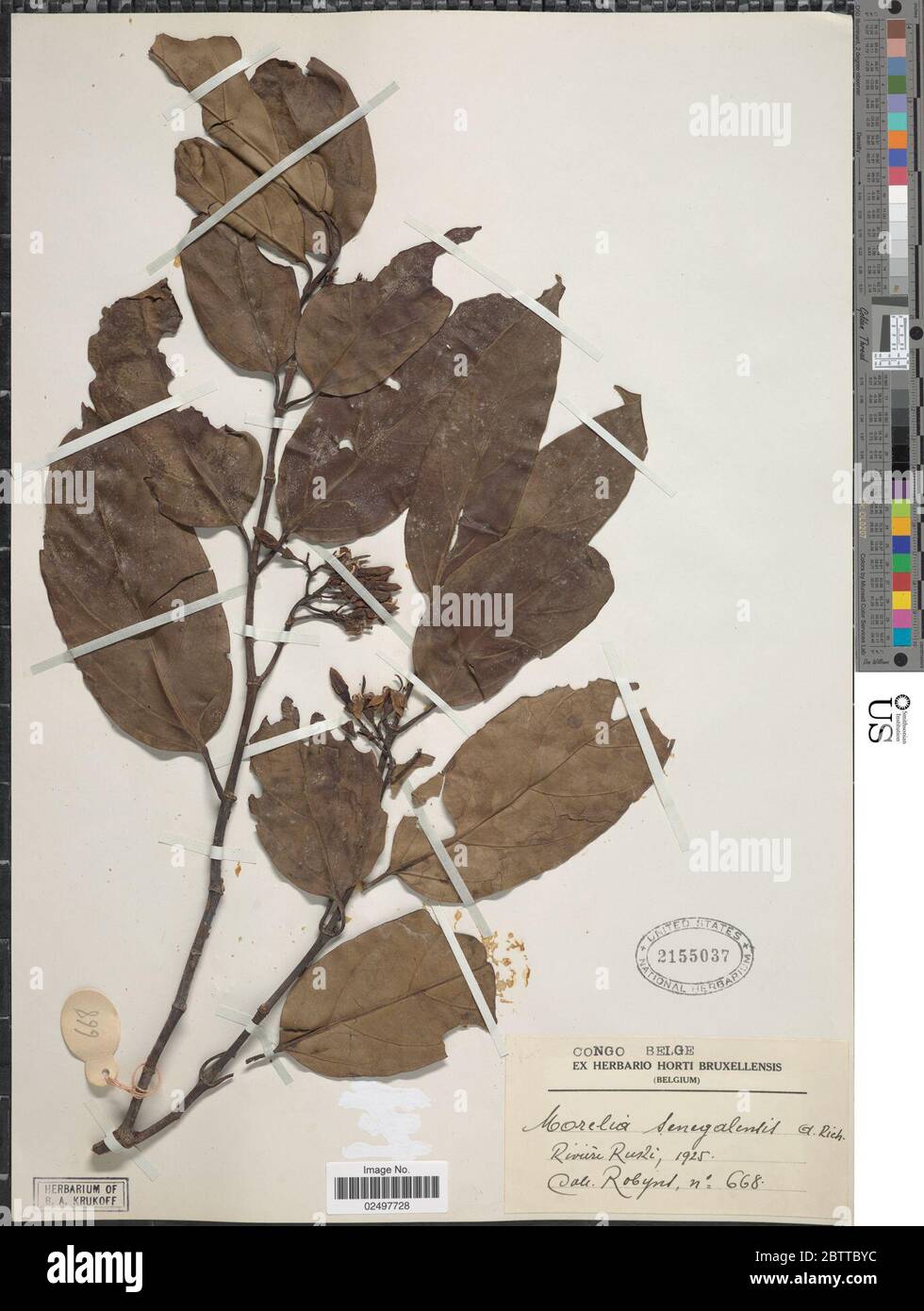 Morelia senegalensis A Rich ex DC. Stock Photohttps://www.alamy.com/image-license-details/?v=1https://www.alamy.com/morelia-senegalensis-a-rich-ex-dc-image359495344.html
Morelia senegalensis A Rich ex DC. Stock Photohttps://www.alamy.com/image-license-details/?v=1https://www.alamy.com/morelia-senegalensis-a-rich-ex-dc-image359495344.htmlRM2BTTBYC–Morelia senegalensis A Rich ex DC.
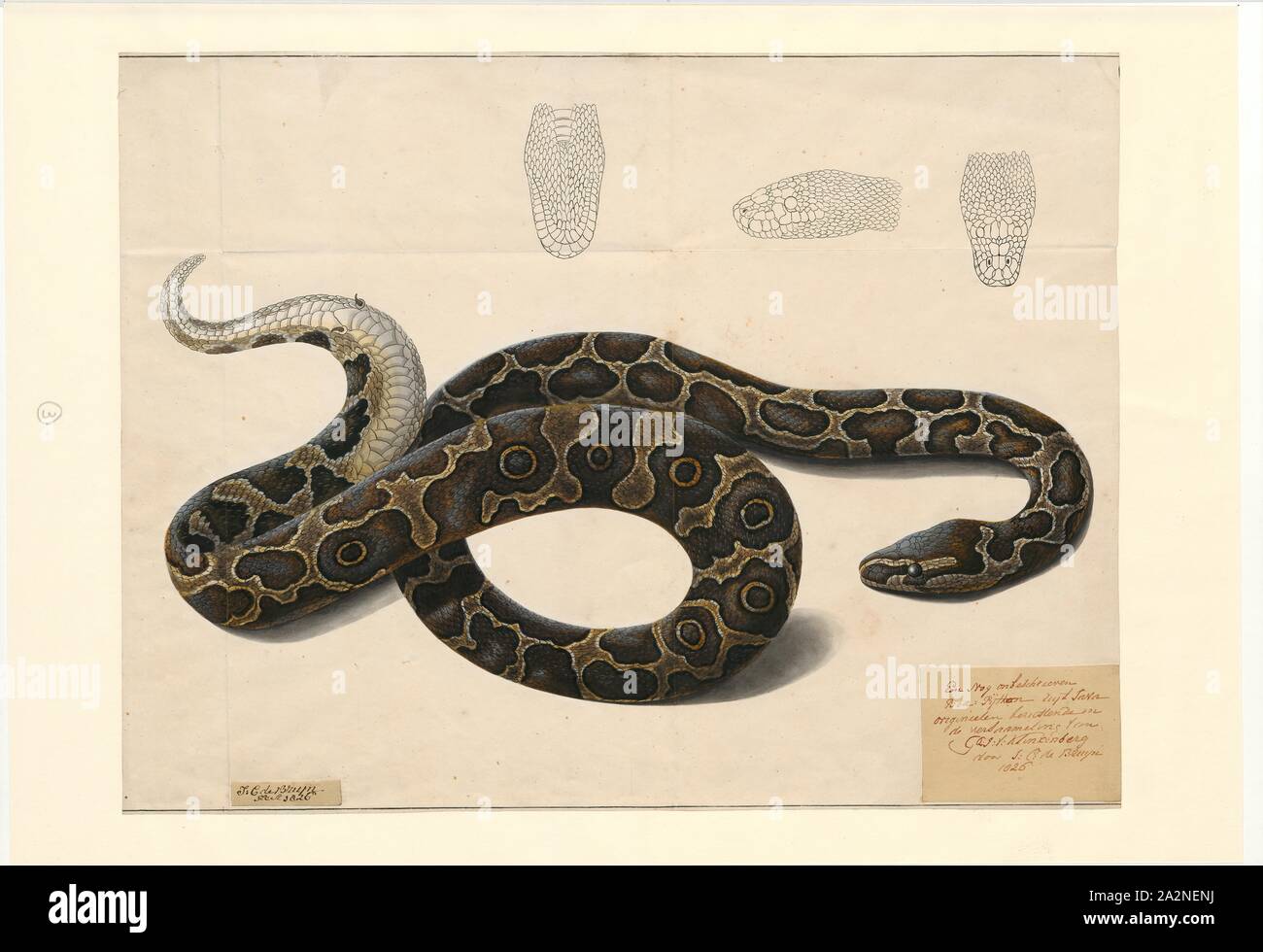 Python bivittatus, Print, The Burmese python (Python bivittatus) is one of the five largest species of snakes in the world (about the fourth-largest as measured either by length or weight). It is native to a large area of tropical South and Southeast Asia. Until 2009, it was considered a subspecies of Python molurus, but now is recognized as belonging to a distinct species., 1826 Stock Photohttps://www.alamy.com/image-license-details/?v=1https://www.alamy.com/python-bivittatus-print-the-burmese-python-python-bivittatus-is-one-of-the-five-largest-species-of-snakes-in-the-world-about-the-fourth-largest-as-measured-either-by-length-or-weight-it-is-native-to-a-large-area-of-tropical-south-and-southeast-asia-until-2009-it-was-considered-a-subspecies-of-python-molurus-but-now-is-recognized-as-belonging-to-a-distinct-species-1826-image328698878.html
Python bivittatus, Print, The Burmese python (Python bivittatus) is one of the five largest species of snakes in the world (about the fourth-largest as measured either by length or weight). It is native to a large area of tropical South and Southeast Asia. Until 2009, it was considered a subspecies of Python molurus, but now is recognized as belonging to a distinct species., 1826 Stock Photohttps://www.alamy.com/image-license-details/?v=1https://www.alamy.com/python-bivittatus-print-the-burmese-python-python-bivittatus-is-one-of-the-five-largest-species-of-snakes-in-the-world-about-the-fourth-largest-as-measured-either-by-length-or-weight-it-is-native-to-a-large-area-of-tropical-south-and-southeast-asia-until-2009-it-was-considered-a-subspecies-of-python-molurus-but-now-is-recognized-as-belonging-to-a-distinct-species-1826-image328698878.htmlRM2A2NENJ–Python bivittatus, Print, The Burmese python (Python bivittatus) is one of the five largest species of snakes in the world (about the fourth-largest as measured either by length or weight). It is native to a large area of tropical South and Southeast Asia. Until 2009, it was considered a subspecies of Python molurus, but now is recognized as belonging to a distinct species., 1826
 Illustration of a Green Tree Python (snake species) isolated on a white background Stock Photohttps://www.alamy.com/image-license-details/?v=1https://www.alamy.com/stock-photo-illustration-of-a-green-tree-python-snake-species-isolated-on-a-white-48978858.html
Illustration of a Green Tree Python (snake species) isolated on a white background Stock Photohttps://www.alamy.com/image-license-details/?v=1https://www.alamy.com/stock-photo-illustration-of-a-green-tree-python-snake-species-isolated-on-a-white-48978858.htmlRFCRK50X–Illustration of a Green Tree Python (snake species) isolated on a white background
